
JULY 2020 HEALTH • MONEY • TRAVEL • RECIPES • FASHION • TECHNOLOGY READER’S DIGEST | SMALL AND PERFECTLY INFORMED | JULY 2020
With Your Regrets
IN LETTING GO
In
THEIR STORIES JULY 2020 £3.79 readersdigest.co.uk
BRANAGH Kenneth ON HOPE, HARRY POTTER AND RETURNING TO HIS HOMELAND
Living
LESSONS
Autism
Adulthood PEOPLE SHARE
3
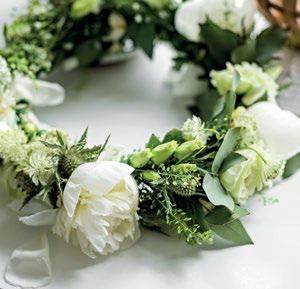
Helping you say goodbye
At Co-op Funeralcare, our thoughts are with all those saying goodbye to a loved one right now.
We’re proud to serve our communities and, although coming together in the way we might wish is more difficult at the moment, our colleagues are helping to find unique and beautiful ways to honour those lost.
Our hearse can visit the people and places that meant so much, we can create online tributes for those unable to attend a service, and when we’re able to come together again, we can help arrange a memorial service to celebrate the life of those we love.
We’re also working with our charity partners Mind, SAMH and Inspire, who can provide the bereaved with helpful information and practical support.
We’re doing everything we can to make saying goodbye as loving and caring as possible.

Co-op Funeralcare is a trading name of Funeral Services Limited, a registered society registered in England and Wales with registration number 30808R and registered office 1 Angel Square, Manchester M60 0AG. VAT registered 403 3146 04. Part of Co-operative Group Limited. Mind is a registered charity in England & Wales no. 219830. SAMH (Scottish Association for Mental Health) is a registered charity in Scotland no. SC008897. Inspire Wellbeing is a registered charity in NI no. 103470.
Contents JULY
Features
16 IT’S A MANN’S WORLD
Olly Mann on his everevolving relationship with DIY
ENTERTAINMENT
20 INTERVIEW:
KENNETH BRANAGH
The Irish actor of screen and stage talks about his humble upbringing and illustrious career
28 “I REMEMBER”: PAUL YOUNG
The British musician on Q-Tips, his late wife and carving his own path in life
HEALTH
38 ADULT AUTISM
What is it like to discover you’re on the spectrum later in life? We speak to the people who have, to find out
INSPIRE
56 LIVING WITH REGRET
It’s human to have regrets every once in a while; but what happens when they take over your entire life?


64 MY BRITAIN: BRIXTON
We revel in the art, music, underground charm and cultural diversity of the iconic South London district
74 MYSTERY MOONDUST
How much do we really know about the sticky lunar dust?
82 PLAYING HOUSE
Discover the long, fascinating history behind dolls’ houses
2020 JULY 2020 • 1
p64 p28 cover photoraph by Emma McIntyre/BAFTA LA/Getty Images
Free Wills for Key Workers and Family Members
In our nation’s time of need, we couldn’t be prouder of the brave men and women performing key roles in our society, helping those who need it most.
That’s why we’re offering a totally free Will - worth £99 to Key Workers and their family members.






We do Wills and Estate Planning. It’s how we make our living. But we wanted to give something back to the people supporting our country.
Because we love and respect what you are doing for our families, communities and country and it’s the one thing WE can do to show our gratitude and support.
It’s one less thing to think about - you will get no marketing calls, no spam emails, no up-sale calls, just our love and gratitude for the incredible job you are doing.
We are all in this together. Thank you.
NO MARKETING - NO PHONE CALL - NO SPAM EMAIL 999wills.co.uk




Totally free of charge
Simple to do - takes minutes
Fully legal Will
Protect your loved ones
Choose your executors
Leave legacies and gifts to whomever you choose
This is a self-serve product and is subject to all the terms and conditions referred to on the website www.activewills.co.uk.
Key workers will not be charged to use this service if they enter through the site www.999wills.co.uk.
SIMPLY GO TO:


JULY 2020 • 3 8 Over to You 12 See the World Differently HEALTH 46 Advice: Susannah Hickling 50 Column: Dr Max Pemberton INSPIRE 70 If I Ruled the World: Jay Rayner TRAVEL & ADVENTURE 98 My Great Escape 100 Hidden Gems: New York MONEY 102 Column: Andy Webb FOOD & DRINK 106 A Taste Of Home: Rav Bansal 108 World Kitchen: Ireland ENVIRONMENT 112 Column: Jessica Lone Summers FASHION & BEAUTY 114 Column: Lisa Lennkh on how to look your best 116 Beauty ENTERTAINMENT 118 July’s cultural highlights BOOKS 122 July Fiction: James Walton’s recommended reads 127 Books That Changed My Life: Laura Cummings TECHNOLOGY 128 Column: James O’Malley FUN & GAMES 130 You Couldn’t Make It Up 133 Word Power 136 Brain Teasers 140 Laugh! 143 60-Second Stand-Up 144 Beat the Cartoonist
p106 Contents JULY 2020 p127
In every issue
READER OFFER
15% OFF HEALTH SUPPLEMENTS FOR ALL OUR READERS
SUPPORTING THE 50+
GET MORE GREENS IN YOUR DIET
If you need an easy and convenient way to get more greens in your diet, why not try Prime Fifty’s new e ervescent super greens tablet which is the first of it’s kind available in the UK. It’s received great reviews for its well-researched ingredients list, ease of use and superior taste – with a melon and lime flavour which makes it an altogether tasty and refreshing drink that you can take daily. £23.00 for a 1-month supply.


SKIN, HAIR & NAILS SUPPLEMENT
TAILORED TO THE 50+
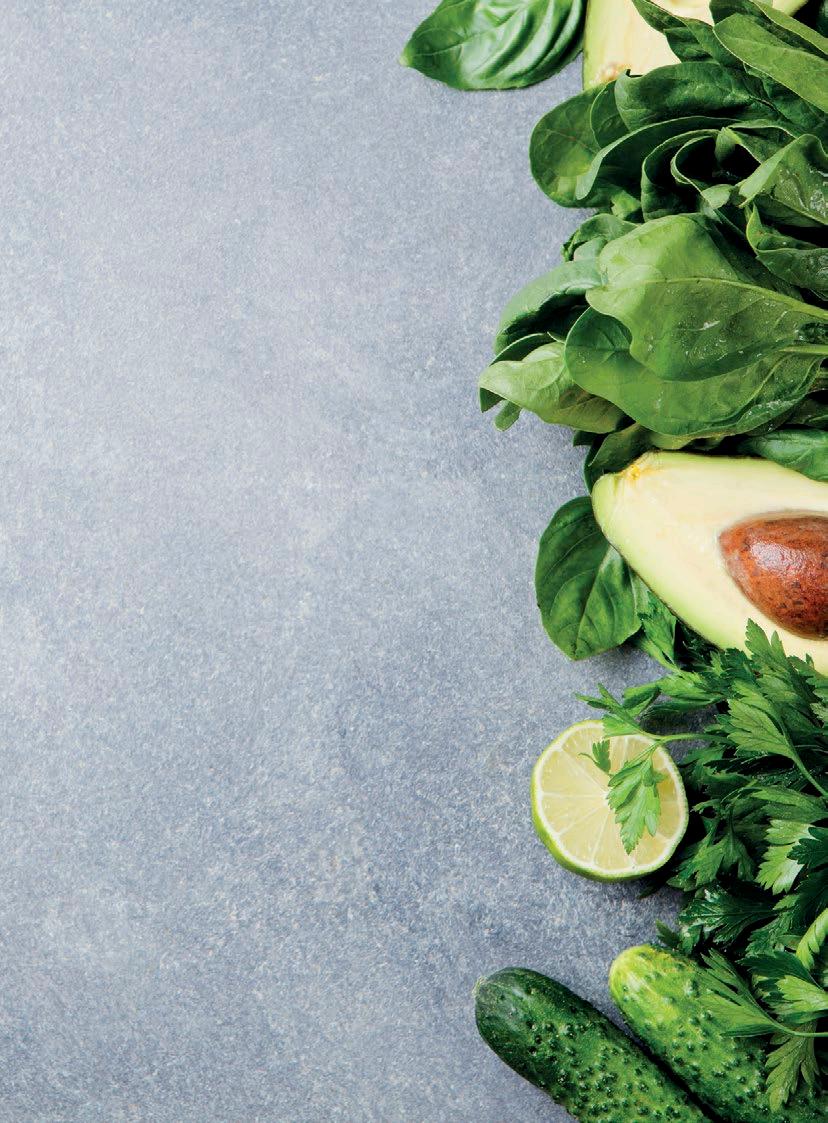
RECEIVE 15% OFF YOUR FIRST ORDER
USING CODE DIGEST15









Designed to nourish and protect your skin, hair & nails from within - these “Beauty from Inner Health” supplements have been exclusively formulated by Prime Fifty to meet the unique needs of the over 50s. Created to supplement your diet using an age-specific multi-nutrient formulation, comprising the most essential vitamins, minerals and natural extracts to help you feel good in the skin you’re in. £65.00 for a 3-month supply.





YOUR ORDER TODAY. VISIT PRIMEFIFTY.CO.UK/RD OR CALL 07383 443625
PLACE
SENIOR EDITORS Anna Walker, Eva Mackevic
EDITORIAL ASSISTANT Jessica Summers
ART DIRECTOR Richard Cooke
ADVERTISING Jigs Pankhania
MARKETING Sarah Hughes
HEAD OF FINANCE Santwana Singh
FINANCE MANAGER Irving Efren
MANAGING DIRECTOR Julie Leach
CHAIRMAN Gary Hopkins
subscriber enquiries, please
WE PAY...
£50 for the star letter and £30 for regular letters.
Email readersletters@readers digest.co.uk or go to readers digest.co.uk/contact-us
WE ALSO PAY...
£30 for the true stories, anecdotes, jokes in Laugh! and You Couldn’t Make It Up…, and contributions to end-ofarticle fillers and My Great Escape.
Email excerpts@readersdigest.co.uk or go to readersdigest.co.uk/contact-us
SORRY!
We cannot acknowledge or return unpublished items or unsolicited article-length manuscripts. Do not send SAEs. Article-length stories, poetry and cartoons are not requested.

TRUSTED MEDIA BRANDS INC (USA)
President and Chief Executive Officer
Bonnie Kintzer
Vice President, Chief Operating Officer
International
Brian Kennedy
Editor-in-Chief, International Magazines
Raimo Moysa
number below
CUSTOMER SERVICES
Contact Customer Services for renewals, gifts, address changes, payments, account information and all other enquiries. Call 0330 333 2220* or email customer_service@readersdigest.co.uk
TALKING MAGAZINES
Reader’s Digest is also available in audio and accessible etext editions from RNIB Newsagent, for blind and partially sighted readers. Call the RNIB Helpline on 0303 123 9999 or visit rnib.org.uk/newsagent
SUBSCRIPTIONS
Annual subscriptions are available to be delivered monthly direct to your door. For our latest offers please visit readersdigest.co.uk/subscribe Or telephone us today on 01778 392461
Gift subscriptions also available. UK rates may vary. Overseas rates: Republic of Ireland €50, Rest of the World €60.
*Calls to 03 numbers cost no more than a national rate call to an 01 or 02 number and will be free if you have inclusive minutes from any type of line including mobile, BT or other fixed line PAPER FROM SUSTAINABLE FORESTS. PLEASE RECYCLE © 2017 Vivat Direct Ltd (t/a Reader’s Digest). British Reader’s Digest is published by Vivat Direct Ltd, 57 Margaret Street, London W1W 8SJ. All rights reserved throughout the world. Reproduction in any manner, in whole or part, in English or other languages, is prohibited. Reader’s Digest is a trademark owned and under license from Trusted Media Brands, Inc, and is registered with the United States Patent and Trademark Office. All rights reserved. Printed by Pindar Scarborough Limited. Newstrade distribution by Seymour Distribution Limited. SMALL PRINT: Ensure submissions are not previously published. Include your name, email, address and daytime phone number with all correspondence. We may edit letters and use them in all print and electronic media. Contributions used become world copyright of Vivat Direct Ltd (t/a Reader’s Digest). Reader’s Digest is a member of the Independent Press Standards Organisation (which regulates the UK’s magazine and newspaper industry). We abide by the Editors’ Code
Practice
committed
upholding the highest standards
journalism.
met those standards,
contact 0203
IPSO
Editors’ Code, contact IPSO
0300 123 2220 or visit
OUR
of
and are
to
of
If you think that we have not
please
795 8886. If we are unable to resolve your complaint, or if you would like more information about
or the
on
ipso.co.uk For all
use the customer services
WRITE TO US! SEND US YOUR STORIES, JOKES AND LETTERS OR VISIT
WEBSITE
5

Making it count
After spending far too much time on apps and social media over the last few years, Gemma decided it was time for a change.
“I’d started to get really frustrated with how I was spending my spare time”, said Gemma, 54 from London. “One day, I realised I’d checked my phone over 100 times. Something had to give.”
“So, I deleted my social media apps from my phone and made a promise to myself to do something more positive with my time.”
At first, it wasn’t easy for Gemma to find things to do.
“I’m embarrassed to admit that I’d stopped reading as much over the last couple of years. But, then a friend recommended Readly to me. I’d always loved reading magazines and thought it was time to give them a go again.
The selection is amazing: food, fitness, lifestyle, culture, crafts and

hobbies are all covered. I’ve been using Readly in the evenings to relax instead of watching TV. I’ve also found it great for inspiration and ideas for new recipes. We’ve been doing some re-decorating, so the interior design section has been really helpful. Having so many past issues to browse through is just fantastic. I can’t think how much I would’ve had to spend to get all that content. If you read more than a couple of magazines, you’ll be saving money each month.
My husband loves the car, sport and business magazines. And we cuddle up and do the puzzles and crosswords together now as well!
As it’s a family membership, I’ve shared my subscription with my daughter who has started using it. She’s a teacher and loves getting inspiration from the kids news, science and history magazines.”
To find out more about Readly, and to try 1 month for free, please go to www.readly.com/digest
PARTNERSHIP PROMOTION
In This Issue…

What’s your biggest regret in life? Perhaps you wish you’d learned French, lived a healthier lifestyle in your youth or never let that special someone go. On p56, Amanda Riley takes a deep dive into the sensitive subject of regret, offering some real stories of the moments in life people just can’t let go of, and offering sage advice on letting go of the past, and lessening the power of regret’s hold on us.
The theme of self-reflection continues on p38, with our feature on adult autism. We explore the increasing rates of adult diagnosis, and discover personal stories of how an autism diagnosis, even in adulthood, can offer answers to some life-long questions, and a sense of relief for people who say they have always felt different.
Covid-19 has forever changed many aspects of our social life as we know it— not least eating out. For our “ruler of the world” this month, restaurant critic, Jay Rayner, whose bread and butter consists of frequenting lavish eateries and sampling dishes, this change comes as a complete turning point. On p70, he explains why we should all be eating with our hands and the reason why waiters sans notepads make him anxious.

And if the idea of stepping into a restaurant still makes you queasy, we have some tasty suggestions for dishes you can cook at home. On p106, former Bake Off star, Rav Bansal, reveals the secret to his mum’s fabled spinach masala quiche and on p108 we offer an easy guide to a hearty Irish staple, the rustic dingle pie.
Anna Eva
FOLLOW US

facebook.com/readersdigestuk

You can also sign up to our newsletter at readersdigest.co.uk
Reader’sDigestis published in 27 editions in 11 languages
JULY 2020 • 7
EDITORS’ LETTERS
twitter.com/readersdigestuk @readersdigest_uk
Over To You
LETTERS ON THE May ISSUE
We pay £50 for Letter of the Month and £30 for all others
LETTER OF THE MONTH
Keith Duffy’s views in “If I Ruled The World” left me reflecting on life after coronavirus. If the earth is starting to heal itself through lower emissions during lockdown, surely this provides a blueprint for the future if we all just start slowing down a bit in our leisure activities. Less movement by whatever means in our travel, could contribute to the benefit of breathing in cleaner air. Our climate calls for change and this

would be a small step in the right direction. Another small step could be eating less meat and dairy and eating more plants. This was suggested in the “Eat Well, Save The Planet” article that appeared in the same issue. The ideas are there for discussion if we want the world to be a healthier place for everyone, as population levels continue to rise and supply struggles to meet demand.
GARRY BOHNE, West Lothian
I enjoyed reading what would happen if Keith Duffy ruled the world and I agreed with everything he said. If we are to find something positive in the coronavirus pandemic, it is the way it has enabled families to spend time getting to know each other again and the way it has prompted us to start questioning our lives. In forcing us to live differently, it has shown us
that how we lived before wasn’t the only way. Now we have the chance to reassess our priorities so we can pursue what truly matters to us, whatever that may be.
I have found it ironic that now there is nowhere to go, time is slipping by faster than ever. Days spent with the children in the garden are flying past a lot faster than when we were previously trying to
cram everything else in! And the uncertainty has forced me to live each day as it comes, something I really struggled with before, but which I feel I may finally be getting a little better at!
Keith’s top priority was to find an antidote to the coronavirus. Trials are now underway; in the meantime, we must remain positive and pull together.
JENNIE GARDNER, Bath
8 • JULY 2020

BYE-BYE BOOKS
I was particularly interested in the comments expressed by Olly Mann that he doesn’t read books anymore.
I have always aspired to be a great reader of books and have purchased many over the years, most of which get casually thumbed through before being consigned to the dusty bookshelf which serves as a holding area for the local charity shop.
I have a Kindle with a flat battery which has three books on it, all of them unread. But this doesn’t mean that I dislike books, actually, I love books. As a former librarian, books were my life. I would sort and categorise them, and be a knowledgeable point of reference for our visitors. I adore the smell of a new book and the feel of it in my hands, so I will undoubtedly buy more and think strong thoughts as I try to focus my wandering mind.
Wish me luck…
GARY GODDERIDGE, Coventry

HERE’S HOPING
Anna Sharratt’s “The Many Faces Of Epilepsy” made interesting reading as our eldest daughter suffered from epilepsy. Sadly, at the age of 25, she died from an attack. We lived then on a farm in Rhodesia, now Zimbabwe, and there appeared to be no health problem with her for a few years. Following her first attack we were told that it might be due to the blood groups of my husband and myself (I have a rather unusual one) being incompatible. Her school days and short adult life were a constant worry. Thankfully, neither our other two children nor, ultimately grandchildren, have suffered from this problem. I was pleased to read in the article that now there are new drugs to help treatment for this pitiful disease.
SHEILA CHISNALL, Devon
Send letters to readersletters@readersdigest.co.uk Include your full name, address, email and daytime phone number. We may edit letters and use them in all print and electronic media WE WANT TO HEAR FROM YOU!
JULY 2020 • 9
There were ups
You’ve made a mark
There were downs
You’ve lived
Perhaps more than you realise
Triumphs Failures
And children
And now grandchildren
It’s time to tell your story
Love, laughter, tears
The gift of a lifetime
LifeBook is the world’s leading autobiography service. Around the world more than 8000 people already enjoy owning the life story of someone they love. Each book is a unique piece of family treasure, custom-made and handcrafted, to be shared by generations to come. It’s time to tell your story.
Find out how by contacting us on 0800 999 2280 or visit lifebookuk.com
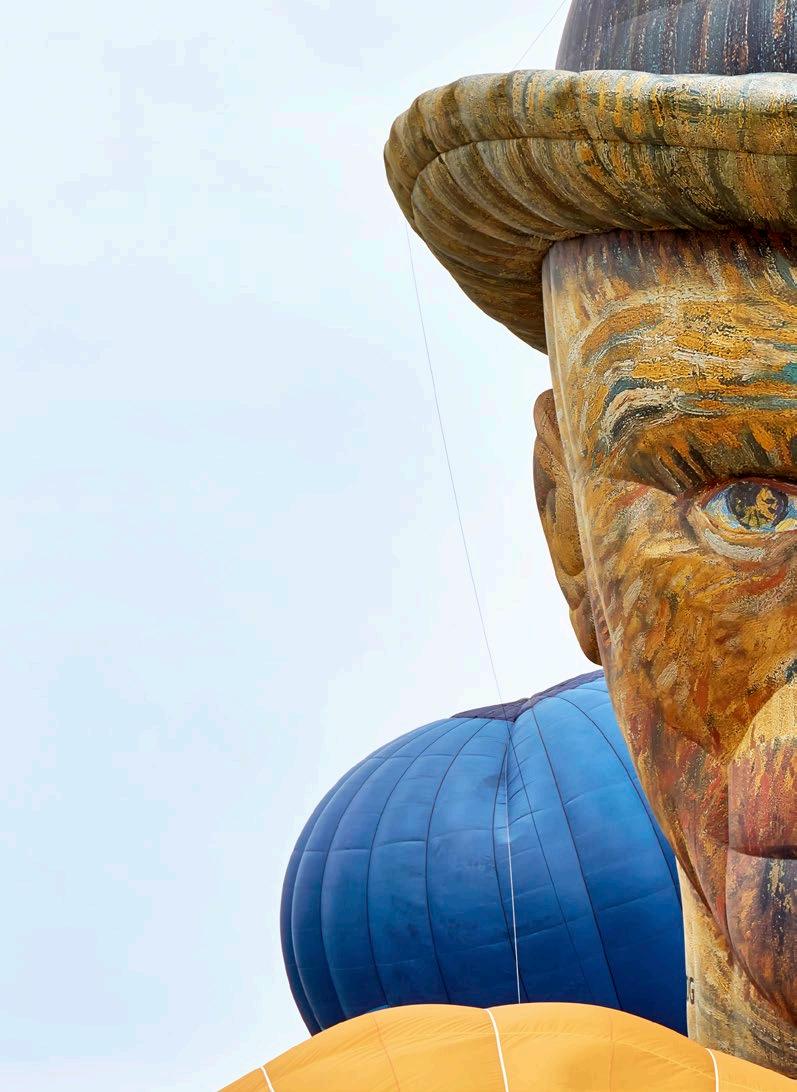
SEE THE WORLD... turn the page
Photo: © Getty Ima G es/ h arry
12
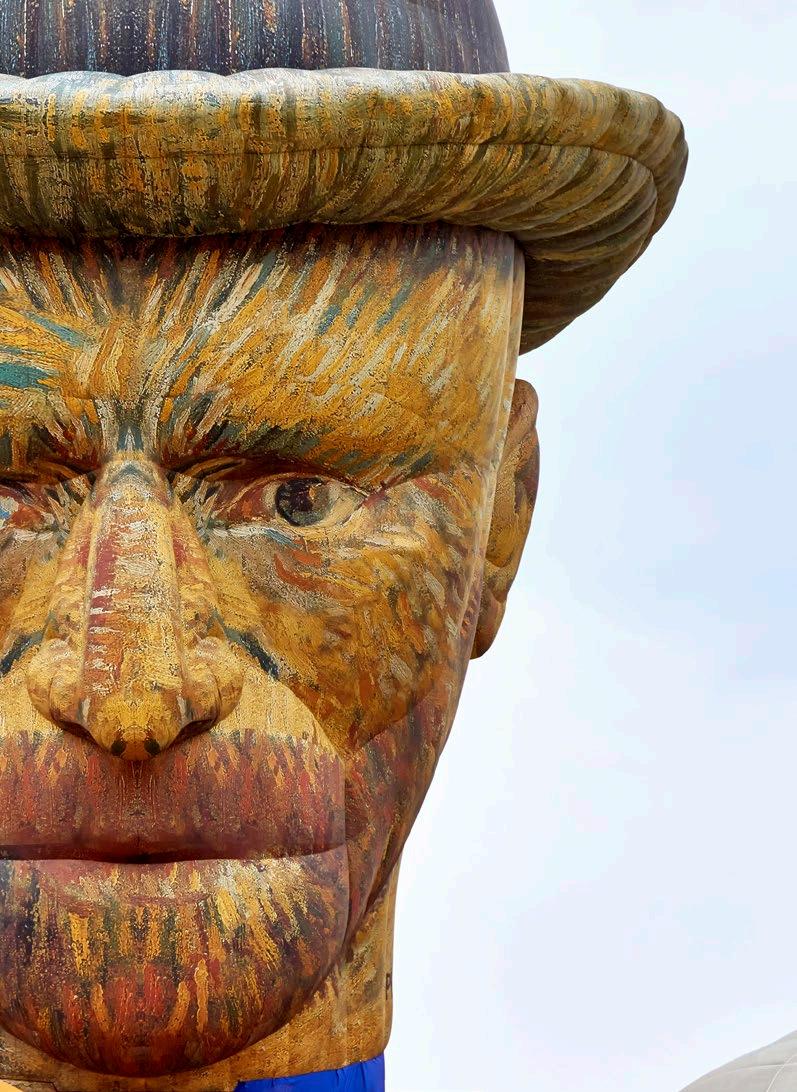

…DIFFERENTLY
A flying work of art! This is how a pilot in Melbourne promoted his hot air balloon leading up to the 2019 King Valley Balloon Festival. The design of this airship is of course based on a real work of art, namely Vincent Van Gogh’s oil painting, “Self Portrait with Grey Felt Hat.” The 99ft-high balloon had its debut in the Netherlands in 2003 to commemorate the Dutch painter’s 150th birthday, but has since travelled to many other countries.
Photo: © act
I on P ress

15
Dodgy DIY
As lockdown sets in, Olly Mann takes a leap out of his comfort zone
When it comes to DIY, I’m not exactly what you’d call an expert.
If, indeed, my "skills" were measured against comparable case studies, and ranked within a DIY-competency spectrum, I’d fall in the bottom one per cent. I’m the kind of guy who cuts his finger opening a packet of Kleenex.
Here’s the list of what I can comfortably do: hammer a nail, replace a battery, change a lightbulb. Here’s what I will do only reluctantly, hating myself for being so poor at it: assemble a chair, paint a wall, seal a bath, top up car fluids. And

Olly Mann presents Four Thought for BBC Radio 4, and the award-winning podcasts The Modern Mann and Answer Me This!
here’s a sample of the epic inventory of tasks that compel me to "get a man in": wiring a plug, erecting a fence, constructing large furniture, wallpapering, sink unblocking, shelf hanging… you get the idea.
Some chaps, I realise, would consider this situation so emasculating that they’d sign up for gender reassignment. But I have come to accept my predicament, consoling myself that I am accomplished at Other Things. I’m a right-brained dyspraxic, with little interest in engineering, I have zero sense of direction, I process information audially rather than visually, I’m atrocious at sport, I have never done any kind of manual labour and I get frustrated quickly. It’s hardly surprising that DIY is not my forte.
Besides, my deployment of local handymen, painter-decorators, repairers and restorers supports a diaspora of self-employed geezers.
Rebbeck
illustration by Lauren
16 • JULY 2020 IT’S A MANN’S WORLD
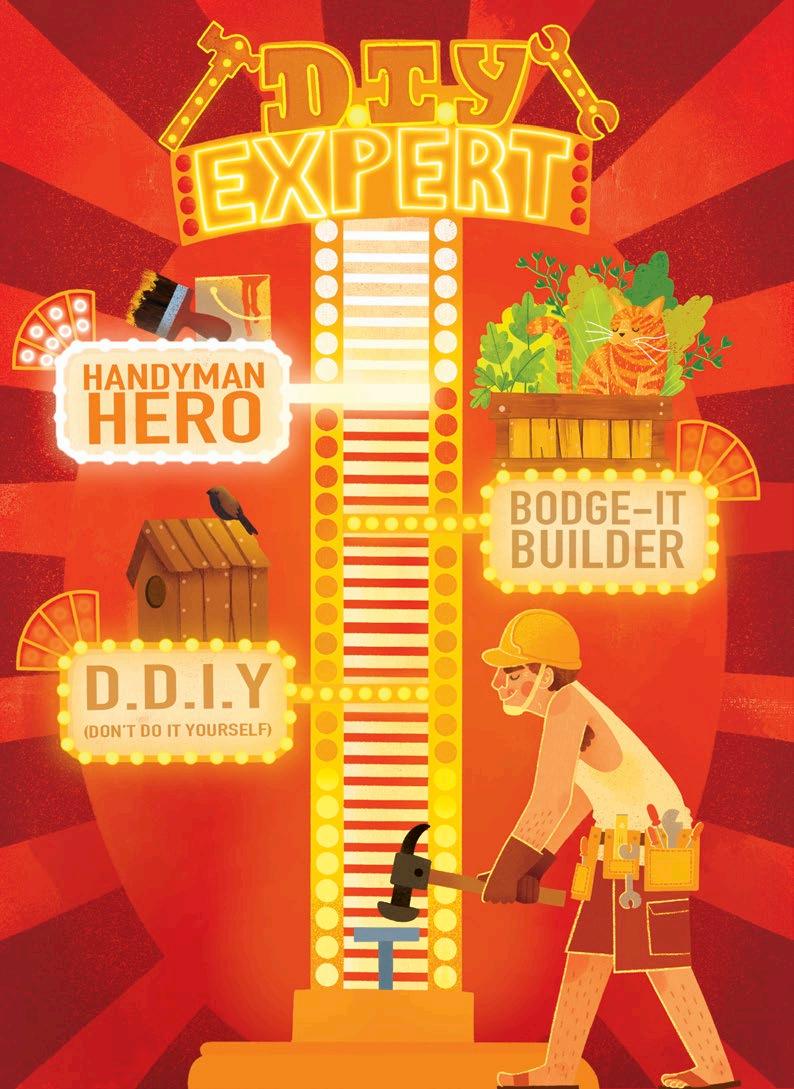
Typically, when they arrive at my door they sport a quizzical expression—as if my plea for their services had perhaps implied an elderly client, and most probably a woman—but hey, that’s THEIR age/ gender discrimination bias, not mine. For me, it’s money well spent. When I’m already £400 down on a wardrobe, why not shell out an extra £75 to ensure it remains standing for a decade? The alternative is a weekend chiselling my own skin into the wall, dislocating shoulders and threatening my "assistant" with divorce—only for our diabolical efforts to come crashing down around us six months later. Perhaps I would be considered feckless by those perverted masses who believe a trip to B&Q is a jolly day out. So what? I have furniture that doesn’t fall down. I am zen.
My first job was replacing the felt on the shed, or patches of it anyway. I cut out some roof tiles. They looked like Bart Simpson’s hair. I stopped for coffee. This made me anxious. Then I tried again. The squares were straighter this time, but not wide enough. Realising I had no option but to whack the last remaining bit of felt to the frame and hope for the best, I breathed deeply, raised my mallet… and stood on a sharp roofing tack.
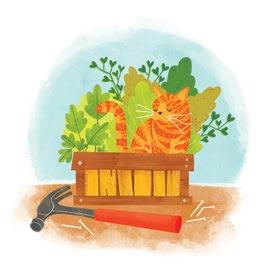
Luckily, I was wearing flip-flops. Sweating in the sunshine, I removed my shirt, and got a splinter in my side. But—BANG! THWACK!
OUCH!—the felt was in position! It looked lousy, but it appeared to be watertight.
Next, I painted the door of the shed, because it was rotting, and to my delight my four-year-old found the activity more diverting than playing in his sand pit, and joined in.
But then lockdown happened. Suddenly, the delegation of practical tasks was not merely frowned upon by my peers, but actively prohibited by law. With nowt to do for three months but go mad on the Robert Dyas website, I found myself staring down the barrel of a gargantuan personal test: a pile of garden accessories purloined online, with NOBODY to help me assemble them.
With renewed vigour, we then tackled increasingly adventurous DIY challenges: building a bird table, varnishing the bench, and, my crowning glory, bashing together a herb planter that I DESIGNED MYSELF FROM OLD PLANKS OF WOOD (sadly, shortly after construction, the cat presumed I’d made her a new litter tray, and used it accordingly).
18 • JULY 2020 IT’S A MANN’S WORLD
It turns out, if I put aside an afternoon for each job, leave my mobile phone inside, and don’t listen to the radio, I can just about concentrate long enough on the task at hand. If I am patient, and accept that I will make mistakes and that the final product will look shoddy (I’m still dyspraxic, after all) functional garden furniture will materialise. I have even (whisper it) begun to enjoy myself, or can at least identify in myself a small, potent quantity of the pride borne out of simulated self-sufficiency.
I know my limitations, though. When it came to erecting the walk-in bike store, the handyman was summoned back. As he swigged on his tea (from a disposable cup, at an appropriate social distance… even his requests for cash-inhand payment have evaporated nowadays), he spotted some chicken
“SUDDENLY, THE DELEGATION OF PRACTICAL TASKS WAS ACTIVELY PROHIBITED BY LAW"
fencing we’d purchased, still in its cardboard packaging. “Is that one for me too?”, he enquired.
“No thanks,” I said, casually scattering some seeds on my new bird table. “I’ll be doing that one later”. He nodded, but I knew what he was thinking.
And it’s true: I've become a different man. Which is what I told my wife later, as she put up the fence. n
Here comes the sun…
The sun accounts for 99.86 per cent of the mass of our entire solar system.
Over 1 million planets the size of Earth could fit within the sun.
On average, it takes a photon 170,000 years to travel to the sun's surface.
The sun occasionally lets out super massive bursts of plasma energy called "coronal mass ejections". These could knock out our satellites, power grids, and internet for decades. One barely missed us in 2012, and another has about a 12 per cent chance of happening in the next ten years.
To personally replicate the energy the sun produces, you'd have to light 100 billion tons of dynamite every second.
JULY 2020 • 19 READER’S DIGEST

ENTERTAINMENT
Kenneth Branagh:
“Ireland’s Green Is Unlike Any Other”
by James Mottram
The talented actor and director has one of the most diverse portfolios in the game. He talks to us about his secretive new film, meeting the president and why cinema is bringing us back together
“It’s always fun when you walk past a set and there is a big troll catapult outside!” laughs Kenneth Branagh, gesturing towards the window. “It never gets old.” It’s a statement that might cause befuddlement were it not for the fact that I’m standing in an exquisitely designed mansion for Branagh’s latest film, Artemis Fowl . A brightly-hued fantasy adventure backed by Disney, it’s adapted from Eoin Colfer’s beloved novel series, which has sold 25 million copies in 44 languages.
Currently, we’re in the upstairs library of Fowl Manor, all built at
Surrey’s Longcross Studios. There are leather-bound books as far as the eye can see, including, on the table next to us, a copy of Doris Lessing’s Under My Skin. But it’s Colfer’s work that’s occupying Branagh right now. “It felt very original,” he says. “I loved its Irish-ness, coming from the north part of that country. And the collision sometimes, and the proximity of worlds. Very different worlds. I like that creatively. It always feels like it’s a good place to be.”
His 17th (!) film as director, it’s allowed Branagh to reunite with old friends—including Dame Judi Dench, who plays Commander Root, a sort of fairy police overlord
JULY 2020 • 21
EMMA MCINTYRE/BAFTA LA / CONTRIBUTOR / GETTY IMAGES
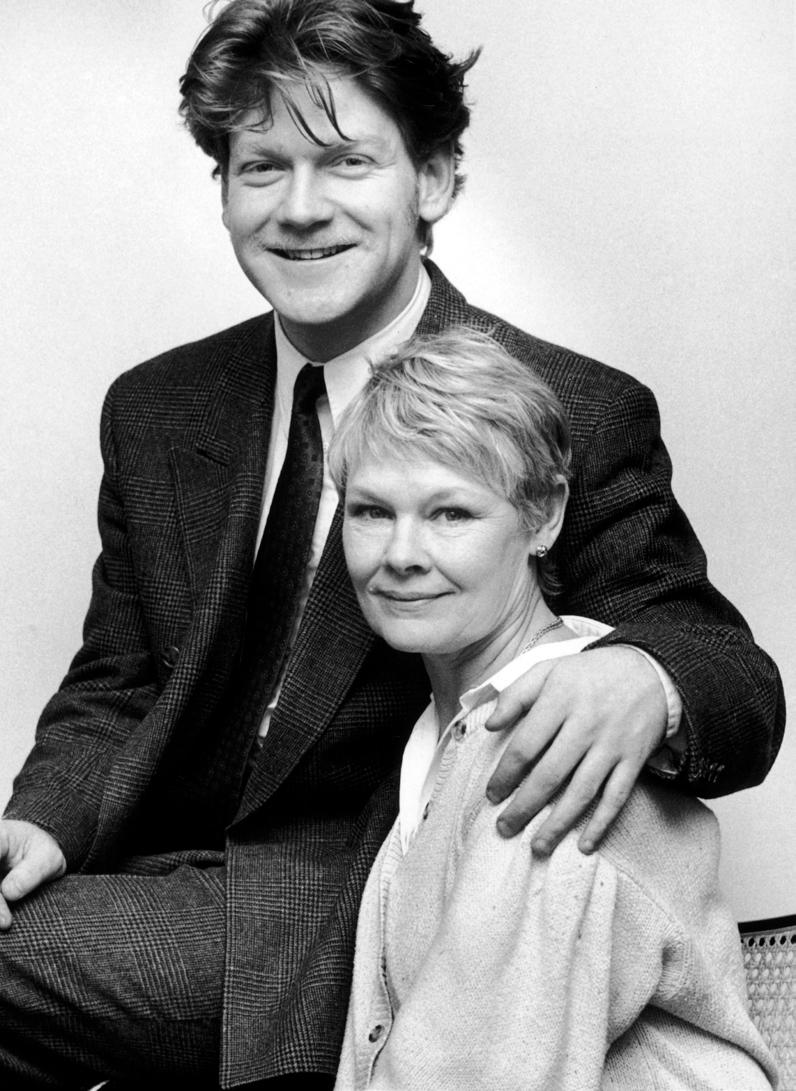 DameJudiDenchand KennethBranagh mark the start of their Shakespeareseasonat theBirmingham RepertoryTheatre, February1988
DameJudiDenchand KennethBranagh mark the start of their Shakespeareseasonat theBirmingham RepertoryTheatre, February1988
(originally male in the books).
“I dote on him,” says Dench, who has worked with Branagh around a dozen times—even directing him on stage in Much Ado About Nothing back in the Eighties. “He behaved so badly,” she chuckles, recalling when he mischievously muttered, “Oh God!” every time another actor burst into song. “I was furious with him! But it made me laugh so much.”
Dressed in jeans, a navy shirt and black puffer jacket, Branagh is eloquent and erudite in person, but also warm and welcoming. To some, he is the modern Sir Laurence Olivier—the actor who has done more than anyone else of his generation to bring Shakespeare to the masses. But to younger viewers, Branagh represents something else. He directed Marvel movie Thor, made a beautiful version of Cinderella, and even starred in the second Harry Potter film, The Chamber of Secrets, as the vain teacher, Gilderoy Lockhart.
vast audience that you’ve never had before,” he says. “I was at Grand Central Station in New York, just having a hamburger, and this little lad from the deep south of America almost fell over and came up to ask me for my autograph. You find that happens all over the place—it just reminds you how extraordinary the impact of [Potter] is.”
“ONCE YOU’VE BEEN IN A HARRY POTTER FILM, THERE’S SUDDENLY THIS VAST AUDIENCE YOU NEVER HAD BEFORE”
There is obviously hope that Branagh, who turns 60 in December—though his sandy hair and blue eyes make that hard to believe—will do the same with Artemis Fowl. Set in a world of fairies and magic, he calls it “a bit more Celtic” than Harry Potter, and one of the real joys has been the chance to film in Portrush, in his native Northern Ireland.
“I always think when I fly there—there is a green unlike any other. That Irish green sounds like a sentimental thing to say but that’s how I feel about it.”
Although his experience of the “untouchable Potter” spanned just in one film, it wasn’t lost on him.
“Once you’ve been in a Harry Potter film, there’s suddenly this
Born in Belfast, the middle of three boys, Branagh grew up in the Tigers Bay area of the city.
“I was a pretty boysy-boy in terms of the things I liked,” he remembers. “I liked playing football. I had an Action Man! With various
JULY 2020 • 23
READER’S DIGEST TRINITY MIRROR / MIRRORPIX / ALAMY STOCK PHOTO
uniforms and stuff!” Theirs was not a household full of books, but Branagh’s origins as a storyteller were cemented early on. “I was Irish—I grew up in a big family and people are always full of stories, very elaborate stories, and I was aware of that.”
When he was nine, Branagh’s family moved to Reading, where he spent his teenage years before applying—after poor A-level results— to the prestigious drama school, RADA. But what did his parents think of his move into acting?
“They were very, very surprised, and very nervous,” he says. “My father was a joiner…brilliant with his hands. I haven’t inherited any of his practical skills, but he was really a master craftsman. So a natural thing would’ve been for me to do something like that—to go and be an apprentice and you’d have a very clear career path.”
one lucky extra would say a line. “I swear to God, I thought I was going to die—the trampling was so instant! It was a metaphor for life in show business—the buffalo hunt to get down there and say, ‘Hello Abrahams, you’ve got rockets on your feet!’ was overwhelming.”
“MY MOTHER’S UNDERSTATED PHRASE WAS, ‘MY GOD, SON, YOU’VE COME A LONG WAY FROM YORK STREET’ ”
He didn’t get any dialogue that day but it scarcely mattered. By 1984, Branagh was fronting a Royal Shakespeare Company production of Shakespeare’s Henry V—a play he would indelibly bring to the big screen five years later in a blood-andthunder directorial debut that saw him nominated for two Oscars. Remarkably, he had yet to turn 30. Together with his then-wife Emma Thompson—whom he also directed in Dead
Again and Peter’s Friends —he spearheaded an emerging new generation of British talent.
Instead, Branagh learned his chosen trade on sets and stages. During his first summer break at RADA, he landed some extras’ work at Eton College on British classic film Chariots of Fire. Paid £10 a day—“very welcome cash”—he remembers when it announced that
Branagh’s successes were crystallised when he went to Washington DC with his 1996 film, Hamlet, where one of its stars—the iconic Jack Lemmon—was being honoured. Branagh took his parents along on the trip, which included a visit to the White House.
24 • JULY 2020
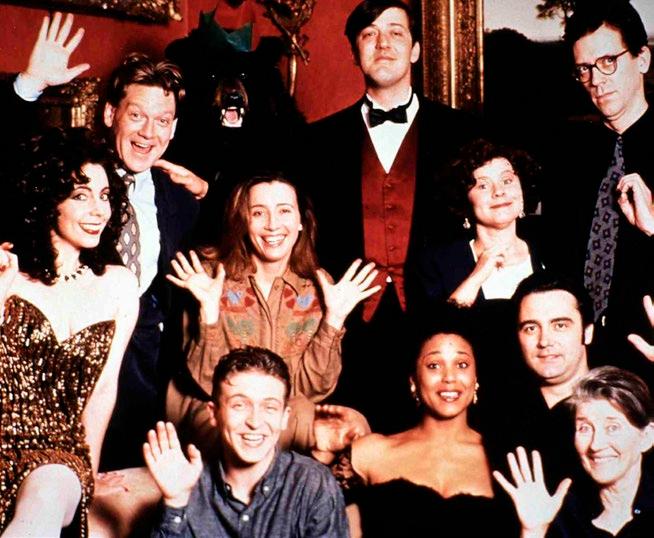
“We met the Clintons. We waited in line… and President Clinton said, ‘Ah, Mr Branagh, big fan of your work!’ And my parents, I thought they were going to pass out—so proud! My mother’s understated phrase was, ‘My God, son, you’ve come a long way from York Street!’ ”
As treasured as you’d think Branagh should be, it hasn’t always been easy for him. He faced intense

media scrutiny during his time with Thompson, while critics were vitriolic over his 1994 film, Frankenstein.
“Nobody died,” he shrugs. “But it was personally very wounding.”
As the 2000s arrived, Branagh found renewed vigour as an actor—
JULY 2020 • 25
With the cast of Peter’sFriends, and with then-wife Emma Thompson
READER’S DIGEST
UNITED ARCHIVES GMBH / ALAMY STOCK PHOTO / PA IMAGES / ALAMY STOCK PHOTO

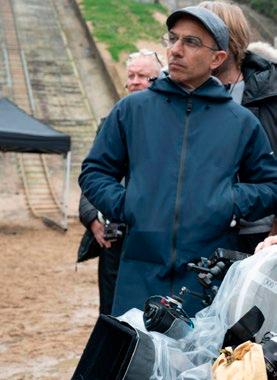
notably in TV dramas Shackleton (where he also met his now-wife, art director, Lindsay Brunnock) and the BAFTA-winning Wallander. On film, he played his hero Laurence Olivier in My Week with Marilyn, earning him a fifth Oscar nod.
When we catch up, Branagh— like everyone else—is in lockdown, which means speaking via Zoom. Once again, he’s in a well-stocked library—this time his own. And with cinemas shut, Artemis Fowl is now debuting on new streaming service Disney+. Branagh, meanwhile, has been finishing his next film as director, Death on the Nile, his second Agatha Christie adaptation since 2017’s hit take on Murder on the Orient Express, in which he reprises
her mustachioed Belgian detective, Hercule Poirot.
Calling the era of COVID-19 “a time when so many people are continuing to have significant challenges”, Branagh has been struck by the changes the pandemic has brought, wreaking havoc on the arts and entertainment industries in particular.
“We obviously know about lots of individual tragedies, but in general the shake-up to our social patterns and our way of life has been really significant,” he nods. “Cinema represents the communal extreme of that opposite—of suddenly being together again to watch something.”
It’s why he’s holding out hope for his new film, Tenet, a hush-hush blockbuster from Christopher Nolan, with whom Branagh previously
26 • JULY 2020 LIFESTYLE PICTURES / PICTORIAL PRESS LTD / ALAMY STOCK PHOTO
(Left to right) Dunkirk,AtemisFowl,Tenet
INTERVIEW: KENNETH BRANAGH
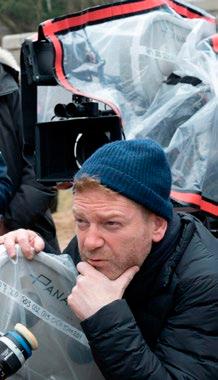
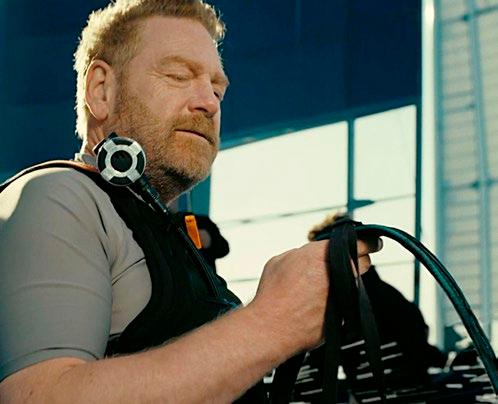
worked on the Second World War film, Dunkirk. An espionage thriller with a time-travel twist, Tenet is about as top secret as they come. Branagh isn’t even allowed to talk about his character—a sharply-dressed Russian national. Is he the baddie?
“I think you’ll just have to judge for yourself when you see the film,” he grins, enjoying the cat-and-mouse of it all.
One thing that’s become clear is that Tenet might be the film that saves Hollywood; while all other blockbusters postponed their releases, Nolan’s film has held onto its mid-July slot in the hope cinemas will reopen.
“If ever there was a film that was part of that opening vanguard of movies… I think this certainly deserves its place,” says Branagh.
Filled with lots of jaw-dropping action, he calls it “a very powerful statement about what can be marvellous about movies”.
No amount of cajoling will get him to spill any secrets about the film, but he can reveal he was on location in Amalfi on the Italian coast.
“The greatest experience of going to work was getting in a boat and crossing the bay from Amalfi and looking up on the cliff to the house that Gore Vidal lived in, in Ravello, just as the dawn was rising,” he smiles. Acknowledging the power of both the arts and the artist… there’s something about this that simply sums up Kenneth Branagh. n
Artemis Fowl is available on Disney+. Tenet will open in cinemas on July 17
JULY 2020 • 27
READER’S DIGEST
LANDMARK MEDIA / ALAMY STOCK PHOTO

28 ENTERTAINMENT GEISLER-FOTOPRESS GMBH /
PHOTO
ALAMY STOCK

I REMEMBER… Paul Young
Paul Young, 64, is best known for hits like “Wherever I Lay My Hat (That’s My Home)” and “Every Time You Go Away.” Here, he looks back on rebelling against his family to become a musician, bungling the national anthem at Wembley in 1996, and falling in love on a video shoot...
…MOST FIRST-BORNS GET JEALOUS of all the attention going to a new baby, and my brother Mark was no different. I’d be outside in my pram and my brother would come over and hold my hand. My mum would say, “Oh look at that, it’s so sweet.” But actually, he was crushing my hand until my knuckles banged together and I’d start crying.
…I WAS ALWAYS A DREAMER. I had this tricycle when I was eight, and I was allowed to go all the way up and down my road. It seemed like the big wide world to me, and meant a lot to have the freedom of that street.
…WHEN I GOT OLDER I MOVED ONTO TWO WHEELS. My friends and I would pack sandwiches and go
JULY 2020 • 29
off all day. We’d go ten or 15 miles off into the countryside. The plus side was that I didn’t spend as much time with my brother and sister Jo, so we argued far less.
…MY DAD WORKED NIGHTS AT VAUXHALL MOTORS. We’d see him at breakfast when he’d just got home and then again at tea before his next shift. He was a really hard worker.
…I WAS MISCHIEVOUS AT SCHOOL. My secondary school had been an all girls school and was introducing boys year by year. I didn’t do so well there—the teachers weren’t prepared for boisterous boys in the class, with all our hormonal changes. I struggled a bit but I did OK with the exams in the end.
…I’D BEEN BITTEN BY THE MUSIC
BUG BY THEN. People used to see music as family entertainment. I would bang around a box and my uncle, an old sailor, was pretty good on the harmonica. I had piano lessons when I was young and then some guitar lessons when I was in my early teens. I started to understand how music worked, and I was the first person in my family to buy a record player—I’ll never forget how happy I felt bringing it home.
…AS A BOY GROWING UP IN LUTON, you pretty much knew you were going to work at Vauxhall
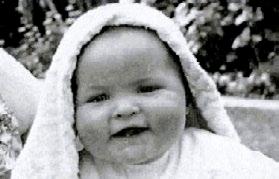
Motors, so you were encouraged to study technical drawing, woodwork, and metalwork at school. I felt I was missing out because I really wanted to do music, but I thought, Well, they’re not going to get away with stopping me, because I’m going to do it myself.
…I SPENT FOUR YEARS AS AN APPRENTICE AT VAUXHALL .
By the end of the apprenticeship, I was already in a band. I’d been in a couple of local bands, before being poached by a band called Streetband. I played what they were doing to my dad and he said, “This band sounds a lot better.”
I told him that I wanted to quit my job and he said that if I did night shifts for six months to save some money, then I could give it a go. So that’s what I did.
…I HAD AN ECLECTIC MUSIC TASTE BACK THEN —folk, soul, blues and rock ‘n’ roll. My first record was an album by Fire and Water which had the hit “All Right Now” on it. I also bought a lot of Stevie Wonder and James Taylor.
I REMEMBER… 30 • JULY 2020
(Right) Young (left) with his sister Joanne and brother Mark
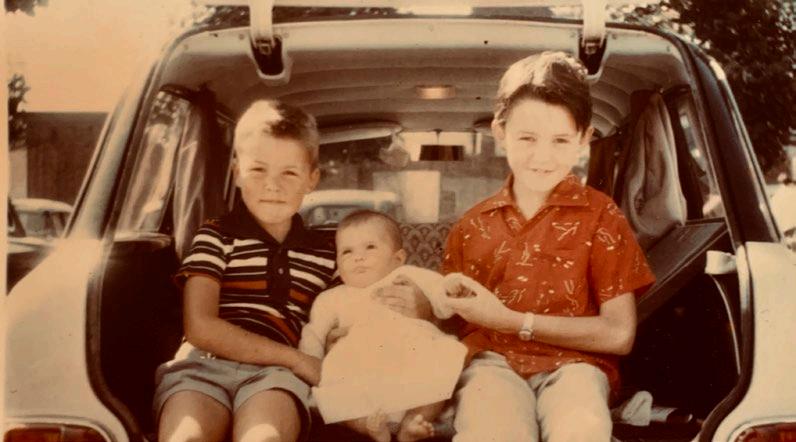
…I SLEPT ON COUCHES FOR A LONG TIME. I was 19 or 20 years old, and nothing’s a problem at that age. I stayed with the guitarist in his student digs in Barnet for a couple of years until the other students complained that I wasn’t contributing. By that time we were earning a reasonable amount of money, and I got my own room.
…IF I’VE GOT A CAPRICORN TRAIT, IT’S THAT I JUST PUT MY HEAD DOWN and start climbing. Each little triumph was moving me closer to my dream, so I was thrilled when Streetband had the hit “Toast.”
…THE LEAD GUITARIST WENT TO GERMANY TO GET MARRIED IN 1979 and the rest of the band were stuck doing nothing. We grabbed a few other guys and had a quick
rehearsal and turned up at the wedding as a soul band. We said, “We’re not Streetband tonight,” and we did a solid set. I loved it.
…STREETBAND SEAMLESSLY MORPHED INTO Q-TIPS, with a brass section. When the band split, I said to a couple of the other members, “I wanna go back and do that soul stuff from the wedding again.”
…I LOVED BEING IN A BAND and wasn’t sure if I had the confidence to go solo. But I remember one night after a performance, the keyboarder pulled me aside and said, “You’ve outgrown this band.” That’s when I thought seriously about going solo.
…THE FIRST TIME I REALISED I WAS FAMOUS was after my solo single, “Wherever I Lay My Hat (That’s
JULY 2020 • 31

I REMEMBER… 32 • JULY 2020
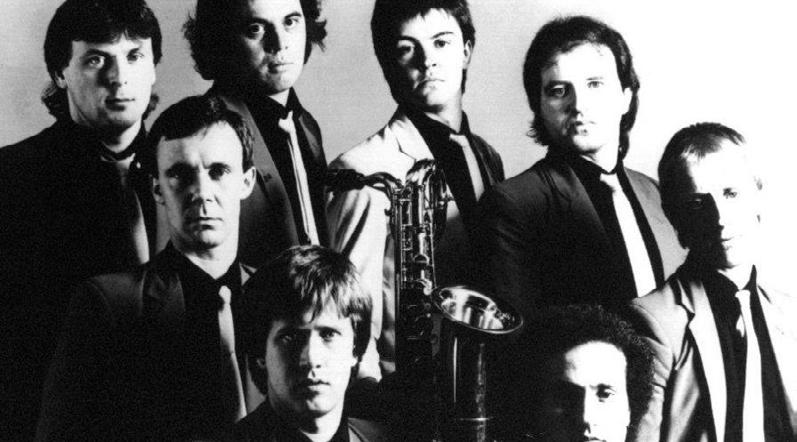
My Home)” got to number one. I still had no money and was driving a battered up Vauxhall. I’d stopped at some traffic lights and a couple spotted me and were staring in, but then one of them said, “Nah, he wouldn’t be driving that” and walked off.
…MY DAD RELAXED A BIT when my album went to the top of the charts. Up until that point, he kept saying, “Make sure you put some money aside,” but I always wanted to buy a new microphone or some other piece of kit.
…SINGING AT LIVE AID in 1985 was an incredible experience. I was probably the newest pop star on the scene from among the line-up, and I was so excited. It was a different ballgame being around stars like
that—I remember being kicked out of my dressing room so that Queen had somewhere to change! There was a huge gulp moment when Bob Geldof walked onstage in the middle of my show, and said, “We’re now worldwide live!” The adrenaline was surging.
…THESE DAYS I REALLY AM A REGULAR GUY. People stop me on the street and say, “Do I know you? Your face is so familiar.” It’s so much more relaxed than it used to be.
…I MET MY WIFE STACEY [who passed away in 2018] on my video shoot for “Come Back and Stay” in 1983. I was drawn to her right away— there was something mysterious about her. She also seemed very confident and able to look after herself, which I liked.
JULY 2020 • 33
Young with his early band, Q-Tips; (Left); with his late wife Stacey and two children

…WE HAD OUR DAUGHTER LEVI in 1987 and decided to get married. I wanted some time to be with my family and told my manager I needed a break. I knew that if I went straight back out on the road again, it was going to be hard to make it work. So we took some time together so that the next time I had to go away, we were rock solid, rather than in a “come and go” type of relationship.
…I TOOK TWO YEARS OUT and have many happy memories of the three of us being a family. I had worked hard to get there, but it was wonderful to have a nice house to live in and just be together. We later had Layla in 1994 and Grady in 1996.
…FATHERHOOD CHANGED ME. I didn’t want to jump out of planes anymore—you get a bit more responsible and I felt like I relived my own childhood through them. It was great to teach them to swim, and remember what it was like for me the first time. Those are great, great memories.
…I WAS THE GOOD COP when it came to parenting. I suppose I was the errant father, so Stacey had to take on a bit of a double role, which must have been hard. She was an amazing rock ‘n’ roll wife and was great at being there while I was on tour.
…I FEEL LIKE I MISSED OUT ON SOME THINGS from my kids’ childhoods. I would go on tour and
34 • JULY 2020
Young performing on stage with Los Pacaminos
come back to find how much they’d grown and how many new things they’d learned.
…I GOT FED UP WITH THE ATTENTION from being solo, so I formed a new band Los Pacaminos in 1993. I wanted to be in a band with friends and other singers and I think it’s wonderful for me.
…SINGING THE NATIONAL ANTHEM at Wembley in 1996 made me look a complete fool. The band had paused their backup tape on the “send her victorious” section, so that I was hearing a completely different section of the song to what the crowd were singing. The newspapers the next day accused us of not knowing the words to the national anthem.
…I SPENT LOCKDOWN with my son Grady, 24, though I didn’t see him much until the evenings as he was
working hard. I think younger people are much better at the lockdown thing than we are—he was always meeting these friends online, organising poker games and things like that. But my generation are used to more human-to-human contact.
…I SEE THE KIDS OFTEN. We get together for big Sunday dinners, or they’ll come over for a more simple weeknight dinner. The girls bring their boyfriends and it’s nice, like a big extended family. I look forward to being a grandfather one day, though they’re in no rush at the moment. n
As told to Rosie Hopegood
Paul Young’s double headline tour with Go West has been rescheduled for September 2021, at venues up and down the country. For tickets, visit paul-young. com/events/
How do you like them apples?
Although the now-retro rainbow logo is arguably Apple’s most well known, the very first Apple logo featured Sir Isaac Newton sitting under a tree, with an apple about to hit his head (legend has it that he was literally hit on the head with an apple and that led to the concept of gravity).
The Newton logo was designed by the lesser-known Apple founder, Ronald Wayne (the guy who sold his stake—that today would be worth $22 billion— to Steve Jobs and Steve Wozniak for $800—ouch!) and was only used briefly in 1976, since its high level of detail didn’t really show up that well when shrunk down and stuck on a product.
SOURCE: MASHABLE.COM
READER’S DIGEST JULY 2020 • 35
Time To Discover Your Hidden Savings?
If you’re looking for ways to boost your finances, you might be surprised to discover the hidden savings stored within the four walls of your home.
If you're a homeowner aged 55 and over, you could be eligible to take advantage of your property wealth and unlock tax-free cash from your home.
It is Important To Get The Facts
If you are thinking about releasing your equity to help boost your savings this year, then it is important to get the facts.
We know that many of our readers are looking for answers to managing their retirement – something that’s only getting trickier to navigate. Equity release might be the solution you’re looking for. To help you, we’ve created a straightforward introduction to equity release that should answer all the big questions you might have.
Cover a financial shortfall
Pay off an existing mortgage
Help a loved one in need
This is a Lifetime Mortgage which may impact the value of your estate and could affect your entitlement to means tested benefits. To understand the features and risks, ask for a personalised illustration. Reader’s Digest Equity Release is a trading style of Responsible Life Limited. Only if your case completes will Responsible Life Limited charge an advice fee, currently not exceeding £1,490.
“ For your FREE GUIDE call us now: - November 0800 029
Reassuring, speedy and painless!
Reassuring, speedy and painless!
“From beginning to end, the whole process was easy, quick and professional, with clear information. All our questions were answered fully, which helped us choose the right product with ease.”
“From beginning to end, the whole process was easy, quick and professional, with clear information. All our questions were answered fully, which helped us choose the right product with ease.”


-November 2019, Mrs Silvester
-November 2019, Mrs Silvester




“ For your FREE GUIDE call us now: - November 0800 029 1233 or visit: www.readersdigest.co.uk/er2




























1233
or visit: www.readersdigest.co.uk/er2
ADULT AUTISM HIDDEN PLAIN
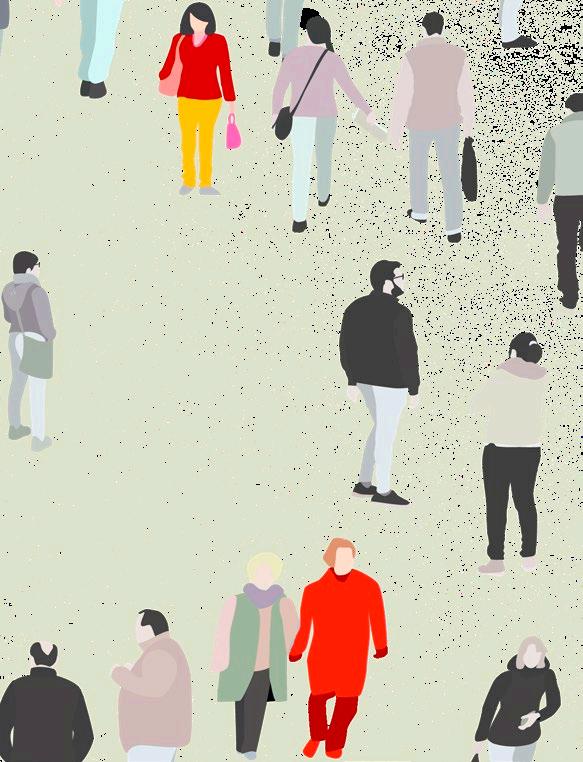
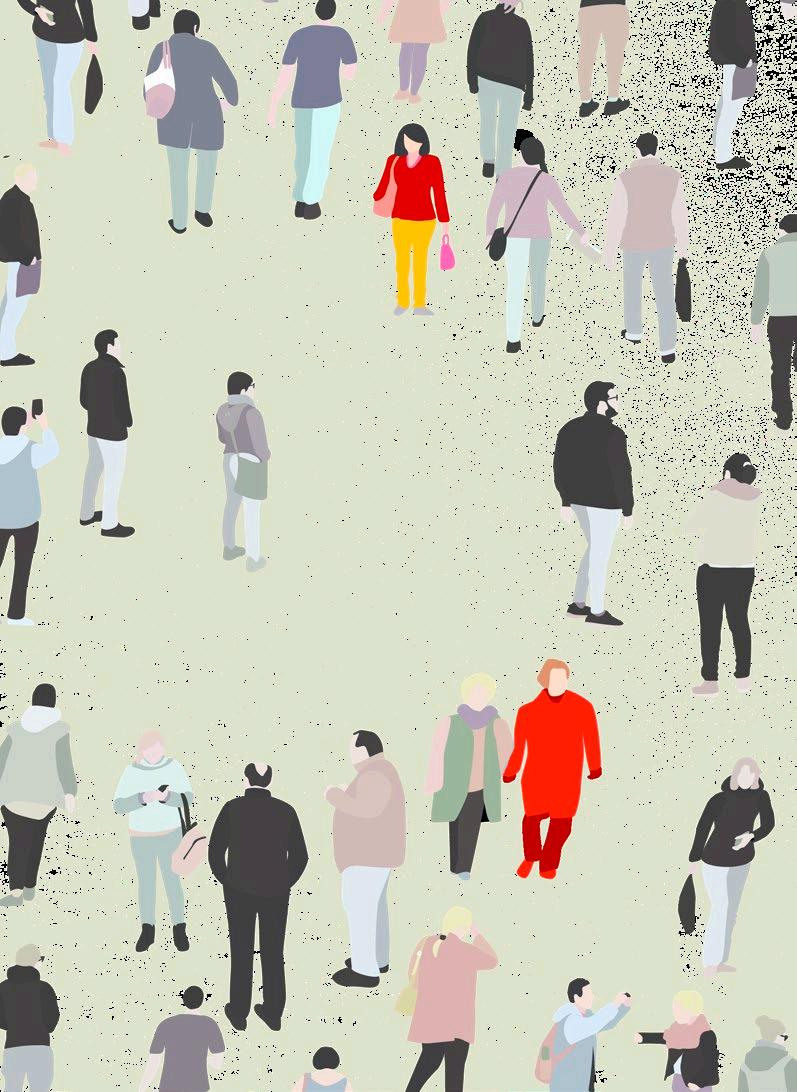

SIGHT
Sometimes autism is not diagnosed until well into adulthood. The news can be both a shock and a relief
By Lisa Fields

39 39 HEALTH JULY 2020 •



After a particularly stressful day at work three years ago, Jo Bervoets, 51, an engineer from Antwerp, Belgium, headed home, only to discover the train station was noisier and more chaotic than usual.
“I was already a little bit lost in my head before I went to the train station,” says Bervoets. He had recently started a new job, and the fact that he couldn’t connect with his new coworkers had left him feeling anxious. “I just took whatever train was going in the direction of Antwerp.”
When the train pulled into his station, Bervoets headed for the shared-bike station where he usually grabbed a bicycle to pedal to his neighbourhood, but there was none available. Feeling overwhelmed, he suddenly realised that he didn’t know how to get home.
“I phoned my wife, and somehow I got home,” Bervoets says. After three months at his new job, he’d burned out. “I completely crashed, and it was black.” He says his memory is still fuzzy about what happened that day.
Too upset to return to work the next day, Bervoets consulted a psychiatrist. She decided to send him to another specialist for testing. After two months of evaluation, he received a formal diagnosis: autism.
“It was a surprise,” says Bervoets. He and his wife, Els, did some online
research and quickly realised that the diagnosis explained some of his odd behaviour, such as insisting that things had to be in a certain place and turning off the lights in a particular order. “Very quickly, it made sense,” he says. “It was a relief.”
ABOUT AUTISM
Autism is a developmental disability that impacts the way that people interact and communicate with others throughout their lifetimes. Experts aren't sure what causes the condition, but people may have a genetic predisposition toward autism, which sometimes runs in families.
Autism is also more common among people who have sensory processing disorders, which makes people abnormally sensitive to things that affect any of their five senses, such as loud noises.
Autism was once believed to be rare, but studies show that it affects about one in 100 people. An estimated 7 million people in Europe have some form of autism.
Males are more likely to be diagnosed than females, although experts aren’t sure why. Some theorise that females may be less likely to inherit the condition, while others hold that autism presents differently in females, leading to underdiagnosis.
“It seems that there might be a "female autism phenotype", which doesn’t fit with the profile usually associated with men and boys on
40 • JULY 2020
illustration, previous spread: ©shutterstock
which assessment tools are usually based,” says Aurélie Baranger, director of Autism-Europe, a Brussels-based advocacy group.
Symptoms include a wide range of disabilities, which appear early in childhood, with diagnosis after the age of four, on average. Doctors use the term “autism spectrum disorder” to encompass everyone who’s been diagnosed. At one end of the spectrum, symptoms are so severe that people who don’t get the right support are unable to communicate, and require lifelong assistance. At the other end of the spectrum, people have such subtle symptoms that they may function like anyone else (perhaps with some odd habits), and their autism may go undetected well into adulthood.
People with autism may follow strict routines and focus on their own narrow interests. But this is not true for everyone with the condition.
“I don't think you can generalise anything with regards to autism, but many have this idea of hypersensitivity and the world being too much,” says Kristien Hens, an autism researcher at the University of Antwerp. “The world is too fast and they have to take more time to process the information that they receive.”
Although everyone with autism experiences the condition differently, people may have certain traits in common. Many, for example, have trouble making

Says Diederik Weve, a chemical engineer from The Hague, “Accepting it gave me a new perspective on life ”
decisions, are confused by facial expressions, and have trouble navigating social situations.
“Many autistic people have difficulty with executive functioning,” says Baranger. “They may have trouble with certain skills like planning, staying organised, sequencing information, and selfregulating emotions. It can have a significant impact on their daily life.”
BLENDING IN
Autism awareness has become more widespread this century, and greater numbers of children with subtle symptoms are now diagnosed at
JULY 2020 • 41
photo by Johannes van a ssem
young ages. But decades ago, doctors rarely diagnosed people toward the subtler end of the spectrum.
“Fifty years ago, nobody would call autism what we call autism today—they would just be considered quirky,” says Hens. “We no longer see autism as this kind of condition where children are completely locked up in themselves and have no contact; it has become a condition with a very wide definition.”

"ALL OF THESE THINGS NORMAL PEOPLE DON'T HAVE TO THINK ABOUT, WE NEED TO"
Those who were diagnosed as adults often blended into society during childhood.
“They were able to manage daily life by learning social rules through observing others and using logic and reasoning to develop 'scripts' or 'formulas,’” says Victoria Russ, a psychology researcher at Southampton University. “This method of learning social behaviour helps individuals to develop strategies to fit in.”
Imitating the behaviour of their peers is often effective, says Dr Bojan Mirkovic, a psychiatrist who studies
Asperger’s syndrome at University Hospital Pitié-Salpêtrière in Paris.
But, he adds, “It involves a very large cognitive effort that may become exhausting and lead to depression.”
Asperger’s is an autism condition characterised by the desire to focus conversations on specific intellectual interests. Current practice is to phase out the diagnosis of Asperger's in favour of autism spectrum disorder.
It can be exhausting, says Bervoets. “You go to receptions, and you need to think about how many kisses are given, where to stand, when to make eye contact. All of these things normal people don't have to think about, we need to think about.”
Indeed, Bervoets believes that the feelings of depression he struggled with throughout his life might, in reality, have been exhaustion caused by “trying to cope and to compensate” for his undiagnosed autism.
REACHING SIGNIFICANT MILESTONES
Many people graduate from university, build meaningful careers, get married and become parents before learning, in middle age or beyond, that they’re on the autism spectrum.
“A career which harnesses an individual’s strengths, and one which creates a level of predictability, routine, and structure to life, can enable someone to have a fulfilling
42 • JULY 2020
ADULT AUTISM
and successful life,” Russ says.
Diederik Weve, 62, a safety engineer from The Hague, Netherlands, sought a diagnosis ten years ago after friends recognised similar behaviours in a friend’s autistic child. He received an Asperger’s diagnosis.
“The autism fitted me,” he says. “Accepting it gave me a new perspective on life.”
Before he even knew he had it, Weve says, autism shaped his career “in a way.” He recognised that he functioned best when he was able to solve things on his own. “I always found in my career that it was best to be a specialist in a niche area so that people would come to me rather than the other way around.”
AUTISM IN THE WORKPLACE
Although many autistic people find jobs that suit them, the condition is associated with underemployment. Some people take positions beneath their abilities because they can’t handle the stress of too much responsibility or because depression, anxiety, or autism-related disabilities may prove too challenging.
Peter Street, 71, from Wigan, was diagnosed with autism at age 64. His problems started in childhood. “I couldn’t do English, maths—couldn’t do anything in the classroom, really,” he says. “I’d end up with ink all over me, and I kept wondering why the other children could do things— simple things—and I couldn’t.”

now a published author
He was held back twice during school, then dropped out at age 15. He worked as a gravedigger for years, then became a gardener and later a forester. He didn’t become literate for years. In 1982, Street was hospitalised after an accident and befriended a fellow patient, a literature teacher, who tutored him and encouraged him to write. Street has since published four volumes of poetry and a memoir.
Inability to connect meaningfully with colleagues or go with the flow may limit people’s upward mobility or earning potential, even if they’re successful professors or engineers. A 2017 British survey of 2,471 people, published in the journal Molecular Autism, found that autistic traits were negatively related to income.
“Although there are some roles where technical skills are paramount, it is hard to imagine a workplace or role for which it is not also useful to be skilled at processing social
JULY 2020 • 43
Peter Street didn't do well at school when he was a boy. He is
photo by John b entley
information,” says study author William Skylark, senior lecturer in psychology at Cambridge University.
Researchers have also found that autistic adults are less empathetic, which may limit their success in social or professional situations. A 2018 study published in the Journal of Autism and Developmental Disorders studied 173 adults who were sent for autism assessments. It found that those who received an autism diagnosis tended to have lower scores on a questionnaire that measured how well someone understands others’ feelings.
Research has demonstrated that people with autism also have difficulties with understanding what
one person thinks about another person’s thoughts, understanding non-literal expressions, and understanding the beliefs, intentions, and meanings of indirect remarks or sarcasm.
Empathy is a core skill needed for social interactions; without it, people may have trouble making friends or dating. Street is glad to have met his wife of 50 years through a mutual friend.
“Dating was an absolute nightmare for me,” Street says. “I hadn't a clue about it.”
DIAGNOSIS CAN BE A RELIEF
Some adults, like Bervoets, are diagnosed after seeing a
WERE THEY ON THE SPECTRUM?
Long before autism was recognised, notable historic figures were busy contributing to maths, science, philosophy, art and literature while exhibiting autistic traits. Michael Fitzgerald, adjunct professor of psychiatry at Trinity College Dublin, has studied the lives of prominent historic figures and concluded that several may have had autism.
✦ Charles Darwin was obsessed with his interests, he rarely swayed from his daily routine, and reportedly had a lack of empathy.
✦ Thomas Jefferson was socially awkward, lacked empathy, followed strict routines, and obsessively focused on his interests.
✦ Isaac Newton couldn’t interact with his peers, was hyperfocused on
his work and couldn’t understand facial expressions or body language.
✦ Gregor Mendel followed strict daily routines, was obsessed with his work and was socially awkward.
Their enduring achievements stand as a testament to their ability to accomplish great things despite—or perhaps because of—their condition.
44 • JULY 2020 ADULT AUTISM
mental-health professional.
Others seek diagnoses because they recognise autistic qualities in themselves after learning about the condition. “They can discover that they are on the autism spectrum when their own children are being diagnosed,” Baranger says. The news comes as a relief for many adults, who suddenly understand why they’ve always felt differently than others.
“For some people,” Baranger says, “it alleviates the sense of guilt that they have experienced throughout their life because they have been blamed for their behaviours since childhood.”
Bervoets’ diagnosis helped him realise that he’d rather study philosophy, a lifelong passion, than continue working as an engineer. He’s working toward his PhD.
Diagnoses may help people redefine previous experiences.
“They finally manage to explain why they have often messed up job interviews or why they're accused of failing to express their emotions or understand jokes,” Dr Mirkovic says. “This is an essential step toward improved well-being.”
Street’s belated diagnosis provided a much-needed explanation of his youth.
“When I was diagnosed, I started crying happy tears,” Street says. “That’s made me realise that none of it was my fault.”
PROS AND CONS OF SOCIAL SUPPORT
When children are diagnosed with
autism, they may receive social support to help them fit into society more readily. Similar services may not always be available to help newly diagnosed adults.
“What follows the diagnosis is very variable depending on the impact the disorder has,” Dr Mirkovic says. “Some will need to undertake behavioural psychotherapy to help them find compensation strategies, while others will need to work on developing social skills or on a career reorientation.”
Some people are set in their ways, content with the lives that they have.
“I have had people who said, ‘This is me, take it or leave it,’” says Hens.
After Bervoets was diagnosed, he was advised to do talking therapy, but stopped because it wasn’t helping. “The more I reflected on my behaviour, the worse I felt,” he says. “I try to understand why other people sometimes get upset, but I don't reflect too much on changing further.”
The couple accept that the condition is, and always was, a part of their lives. Says Bervoets’ wife, Els, “He was always a certain kind of person, and he still is that person. That doesn’t change.”
“I’m a philosopher now,” Bervoets says. “I’m an engineer. I’m a father. I’m a good husband, I think. I’m a lot of things. I’m also autistic, and I’m proud to be autistic. But focusing only on autism diminishes the horizon you have on the world.” n
JULY 2020 • 45 READER’S DIGEST
Chill Out
When the weather heats up, it helps to know how to cool down

Susannah Hickling is twice winner of the Guild of Health Writers Best Consumer Magazine Health Feature
Close the windows
Heatwaves affect older people and those with long-term conditions more than most. So to avoid overheating, start with this counterintuitive measure— keep your windows closed rather than throwing them open. If it’s hotter outside than in, you’ll be heating your room, and not cooling it down as you’d hoped.
Keep the curtains shut
Sunlight streaming through your windows will raise the temperature indoors. Even walls and furniture can absorb heat. So draw your curtains on really hot days. But, if it’s hot and breezy, open the
46 • JULY 2020
HEALTH
RESEARCH SHOWS THAT A HOT CUP OF TEA ACTUALLY COOLS YOU DOWN
windows and spray your closed curtains with water. The air blowing across the wet drapes will cause the water to evaporate and cool the room.
Drink tea and coffee
It’s important to stay hydrated during hot weather. And while you shouldn’t drink too many drinks containing caffeine, there’s researched evidence that a hot cup of tea or coffee can actually cool you down. This is because it’s hotter than you are and will make you sweat. Then—as long as you aren’t wearing layers of clothes—it will evaporate on your skin and make you feel more comfortable. But ultimately cold drinks, especially water—not alcohol which dehydrates you— are the ideal beverages to glug down when the thermometer rises.
Stay downstairs
Even the least scientific among us know that hot air rises. This applies to houses too and on sultry days, you’ll observe that it’s noticeably hotter upstairs. On really hot nights
when you can’t sleep, you might even want to consider bedding down on the sofa in the lounge!
Dip your feet in cold water
Fill a bowl or a bucket with cool water and dunk your hot tootsies into it. Spraying or running cool water on your wrists will help bring down your body temperature too. Take coolerthan-usual baths or showers.
Don’t use the cooker
Putting the oven on or having saucepans bubbling on the hob is only going to increase the heat and humidity in your home. If the weather is warm, then cold meals are welcome—prioritise salads, fruit, cold meats, raw veg. And if you want to get cooking, fire up the barbecue in the garden instead. You know what they say; if you can’t stand the heat, get out of the kitchen!
Eat for the heat
To be as cool as a cucumber, it makes perfect sense to eat it! Cucumber is refreshing and, being mostly water, will hydrate you too. Watermelon and mint are also ideal. Surprisingly, chilli helps you chill, as it makes you sweat. But cut back on carbs and protein; when digestion is forced to work overtime, you’ll feel hotter. n
For more weekly health tips and stories, sign up to our newsletter at readersdigest.co.uk
JULY 2020 • 47
Deadlier For The Male
Which health issues affect men more than women?
Heart disease
According to the British Heart Foundation, one in seven men die from coronary heart disease, compared to one in 12 women. What’s your best chance of avoiding that fate? Keep your blood pressure low by eating healthily, maintaining a healthy weight, doing two and a half hours of moderate intensity exercise—brisk walking, cycling, swimming—every week, and drinking in moderation. Have regular blood pressure and cholesterol checks as well.
Cancer Men are more likely to get the two most common cancers that affect both sexes—bowel and lung cancer—as well as many other types. Why? It could be to do with lifestyle, but it’s also true that men are often less keen to run to the doctor with worrying symptoms. But given that more of us are surviving the Big C than ever, it makes sense not to delay seeing your GP.
Parkinson’s Parkinson’s UK reports that men in the 50-89 age group are 1.4 times more likely to be diagnosed with this neurological condition than women. There’s no cure and no surefire way to prevent it, though research has suggested that regular aerobic exercise might help.
Kidney stones
These solid particles that form in urine are more common in men. They can be excruciating. Most of them pass out of your body naturally, but try to avoid getting them in the first place by drinking plenty of fluids.
COVID-19 Men are more prone to viruses generally, and have certainly been hit hard by the coronavirus. Regular handwashing for 20 seconds at a time and not touching your face remain the best ways to keep it at bay. Not smoking, being a light drinker, eating a healthy diet and getting plenty of sleep will all help in the fight against COVID-19 and other viruses. n
HEALTH 48 • JULY 2020
Ask The Expert: Supporting Someone With Anxiety
Clinical psychologist Lauren Callaghan is the author of How Can I Help? (Trigger Publishing), about looking after a loved one with anxiety and OCD
How did you become an expert in supporting people with anxiety?
As part of my training, I specialised in cognitive behavioural therapy, the go-to, evidence-based treatment for anxiety. I worked at the Centre for Anxiety Disorders and Trauma at the Maudsley Hospital in London and worked in OCD at national level. Later I set up my own practice in London.
How possible is it to help a loved one who is suffering from anxiety?
It’s very possible—but it depends on how much they want to be helped and how much they recognise that they have a problem. You can be supportive and compassionate, but it’s not your responsibility to make them better.
What can people do practically to help?
You can help them get the right treatment, take them to appointments, make them available for appointments by babysitting, bringing round meals. If you’re very close to them, you
could read up on the problem and join support groups. Communication and honesty are key—ask how their mood is and what they want from you. They might not want to talk, but they might want to go for a coffee, or watch TV with you. Help them to take a break from their anxiety.
What should they not do?
Don’t be pushy. Don’t avoid them. Make sure you’re not part of the problem—if you make excuses for them about why they’re not going out or constantly reassure them, you might be propping up their anxiety.
How can people protect themselves while supporting someone with anxiety?

You have to put your own needs first in order to be resilient enough to provide care to someone else. Make sure you sleep well, eat well, have fun and get out of the house. n
To order the book, go to triggerpublishing.com
JULY 2020 • 49
READER’S DIGEST





Biting The Bullet
This month, Dr Max ponders the condemnable state of NHS dentistry

Max is a hospital doctor, author and columnist. He currently works full time in mental health for the NHS. His new book, The Marvellous Adventure of Being Human, is out now
“I
t’s so cold,” my mum whispered down the telephone, “I don’t feel well.” Her voice faded in and out, barely audible at times.
“Have you been drinking?” I asked.
“Of course I haven’t, you odious child” she replied. Ah, there’s my old mum back again. But then silence.
“Are you still there?” I asked and was met with violent chattering of teeth. “Feel your forehead,” I said, still not really appreciating how serious things were. My mum had been having problems with her teeth for years. She had been nobly battling on with her NHS dentist because where she lives, getting a place on the NHS dental register is like winning the lottery. But her dentist only worked two days a week and the appointment list was so long, it would have been quicker to qualify as a dentist yourself. Earlier that week my mum had some work done because of an abscess and had it packed. She’d been in excruciating pain since but the earliest emergency appointment she could get was a week away. As I listened to her on the phone, she told me how she’d vomited because of the pain in her teeth and that she was sweating
50 • JULY 2020
HEALTH
profusely and yet felt cold. I realised that things had got past the stage of tea and sympathy. She was not going to last the weekend like this. I took it upon myself to call my mum’s dentist. An answerphone. It was, after all, 9pm. The message told me to call another number. I called it. I waited. I keep waiting. I gave up after 25 minutes of it just ringing. I called the GP, and an hour later they called back and told me to send her to A&E. My mum, with my aunt, then spent three hours sitting in A&E until they are told that they didn’t have on-site dental service and the junior doctor who saw her doesn’t know anything about teeth. He gave her antibiotics and pain killers. By 2am she was back in her house, unable to sleep with the pain, describing puss flowing down the back of her throat. In desperation, I called my own, private, dentist. I’m not proud of having a private dentist, but there were no dentists in my area accepting new patients when I moved here so it was either go private or have my face cave in. A dentist answered. A dentist. Not an answerphone. An actual, qualified, drill-in-hand dentist. “We’ll see her tomorrow at 9am.” The following day my mum walked out of the dental clinic, pain and puss free having had a second, expanding abscess drained and the old packing, which had been pressing on an exposed nerve, removed. Of course, it cost an arm
and a leg but I fail to see what other option we had. But what if I hadn’t had some savings to pay privately for her? What if my mum had been an old lady, living on a pension?
“THINGS HAD GOT PAST THE STAGE OF TEA
AND SYMPATHY. SHE WAS NOT GOING TO LAST THE WEEKEND”
I’d like to think that this was an isolated event. Unfortunately, everyone I’ve told this story to seems to have a similar one in return. The state of NHS dentistry is a national scandal, which everyone knows about. Since the start of the NHS, dental services have been neglected. This means that people are faced with the prospect of either the exorbitant cost of private treatment or leaving their teeth to rot in their mouths, Elizabethan-style.
So people are left sitting on NHS dentist’s waiting lists with their fingers crossed. Really, in a firstworld country, you’d think we could come up with something a bit better.
As far as NHS dentistry is concerned, the rot, it would appear, has well and truly set in, and getting the government to acknowledge this is like pulling teeth. n
JULY 2020 • 51
The Doctor Is In
Dr Max Pemberton
Q: I love the NHS. It’s something that makes me proud to be British. But I’m so disheartened by reading about the poor treatment of some of our doctors by rowdy patients. Is there anything everyday folks can do to let staff know they’re appreciated? —Alice, 54
A: Oh, what a lovely question. How kind and thoughtful of you to think about this. You’re right, it can be very tough on the frontline. Over the course of my career I’ve been sworn at, punched, kicked, spat on, and even threatened with a knife. Thankfully, those patients are few and far between and most of us working in the health service grow used to it and try not to let it get to us. We try to understand that for at least some of the people who are abusive there is an underlying reason, like feeling scared themselves. Although this isn’t an excuse for bad behaviour, it does help to explain it. Your question asked though what you could do. If you’re a whizz in the

kitchen it might be worth contacting a local ward or surgery and asking what they are and aren’t able to accept. There may also be volunteering opportunities to help support the doctors and nurses—I once worked in a hospital where an elderly man came in every day to bring papers and milk for the junior doctors as a way of saying thank you for when we looked after his wife. But one of the best ways is to write a note to the doctors and nurses who care for you when you’re in hospital or a clinic. People will often only write to complain, which is important feedback and learning, but it’s also nice to know when you’ve done something right too. These letters and cards not only give a real boost but are also very useful as we are asked to collect them for our annual appraisal as evidence that we are doing our job well. n
Got a health question for our resident doctor?
Email it confidentially to askdrmax@readersdigest. co.uk
HEALTH
illustration by Javier Muñoz 52 • JULY 2020



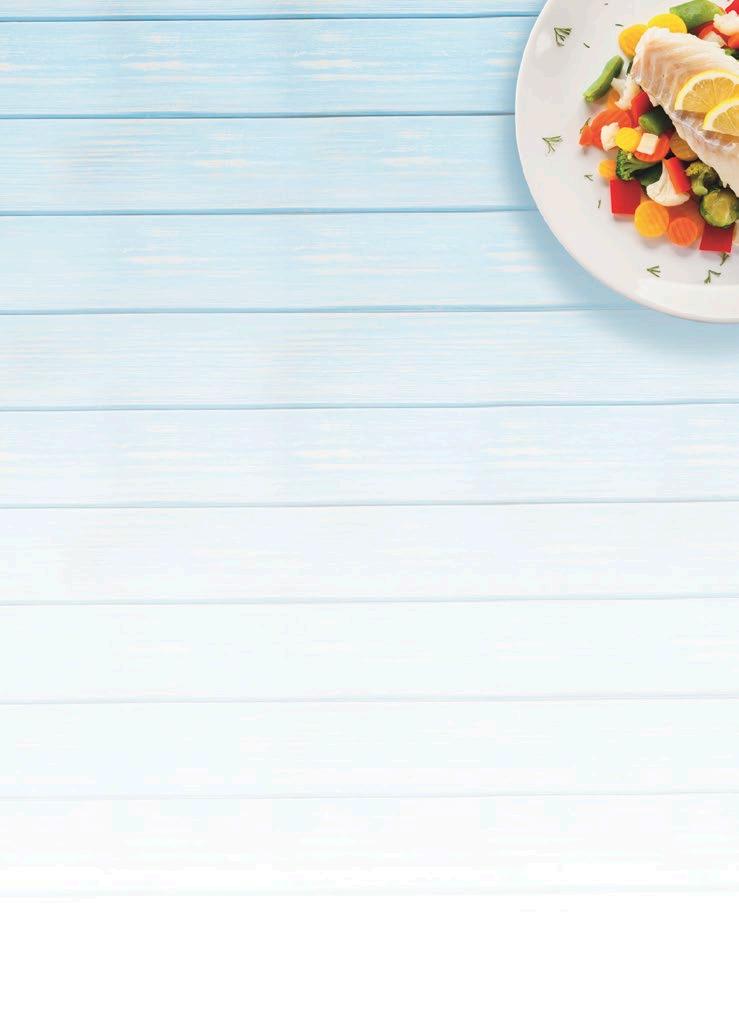







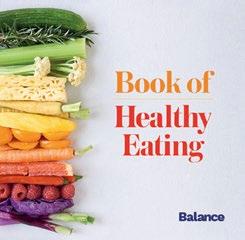



The British Diabetic Association operating as Diabetes UK, a charity registered in England and Wales (no. 215199) and in Scotland (no. SC039136). A company limited by guarantee registered in England and Wales with no. 00339181 and registered office at Wells Lawrence House, 126 Back Church Lane London E1 1FH. © Diabetes UK 2020 1924. live well with diabetes Become a Diabetes UK member and get the latest news and expert advice for people living with diabetes – plus exercise tips and nutritious recipes to help you stay healthy at home. Join us today for just £3 a month: www.diabetes.org.uk/join-member-digest or call 0345 123 2399. and receive a copy of our new Book of Healthy Eating Join now
Build A Body Of Knowledge
This month’s thinking trick from our expert, Jonathan Hancock, uses more than just your head!
As humans, we’re acutely aware of our personal space. All our senses are used to guard it, and our emotions can be triggered in a split second if it’s invaded. Anything entering this safety zone activates a very basic survival instinct. When that happens, we can’t help but notice—and remember. So it’s something that you can use to enhance your learning. To remember any kind of short list, a technique called the “Body Memory Method” can help you to recall it all with ease.
It’s effective because it makes you do something to remember; turns abstract ideas into vivid images; and puts the information you need inside your protected personal space.
Here’s how it works. You start by focusing on your body, from head to toe, paying particular attention to the following ten points:
It gets you doing something to remember and it switches on your imagination. Crucially, it also activates your senses and emotions by putting new items inside your physical comfort zone, in a way that you won’t forget in a hurry.
Let’s say you wanted to learn the ten fastest land animals: cheetah, pronghorn antelope, springbok, wildebeest, lion, blackbuck, hare, greyhound, jackrabbit, African wild dog. You’d simply connect a reminder image for each of these creatures to one of the ten points on your body.
• You might imagine a cheetah using your head as a starting block.
• Perhaps an antelope has stuck one of its horns painfully up your nose.
• Your reminder for springbok could be a mouthful of rusty bed springs!
Then, to remember an item on your list, you simply create a vivid picture of it and connect that picture to one of these ten body parts.
Try it the next time you have a list to learn. Make each memory-jogging image as vivid as possible, and link it to a part of your body in the most memorable way you can. By being creative and connecting it to yourself, it’s possible to start remembering all the lists you make. In no time at all, you’ll be holding onto them with your body as well as your brain! n
54 • JULY 2020
HEALTH
1. Top of the head 2. Tip of the nose 3. Mouth 4. Neck 5. Shoulder blades 6. Hands 7. Waist 8. Legs 9. Ankles 10. Toes













Regrets,
We Have A Few
There are times when we all look back on past decisions that weren’t our finest. But if you’re stuck in a rut of regret, here’s how to finally leave it all behind
 By Amanda Riley-Jones
By Amanda Riley-Jones
57 HEALTH
Did you know that we spend 7,994 hours of our lives on average dwelling on regrets? The road less travelled seems to trouble us the most. A 2020 KP Nuts survey found that 79 per cent of people wish they’d taken more risks and almost a quarter still hold a torch for an old flame. And a survey by stationery provider, A Loving Tribute, revealed that the biggest regret for over-65s was not doing more to stay fit and healthy.
Tsol Keoshgerian, 55, is director of a printing company and lives in Sussex.
“I didn’t follow my dream”
“I was in the school football team and dreamed of going professional. When scouts came to our school, they said I had the potential to progress to a semi-professional or professional career. But there were constant arguments about football at home. I’m Armenian and had a strict upbringing. My parents pressured me to become a doctor or lawyer.
“Then I lost my discipline too. At 18, I succumbed to a culture of drinking and smoking and it affected my fitness and stamina.
I lost a bit of magic and never made more than a decent local club player. I enjoy my work and I’ve

done well. But the regrets came when I was 30-something and married with kids. When I meet new people, I now tell them “I was a good footballer once”.
58 • JULY 2020
REGRETS, WE HAVE A FEW
“What makes it more complicated is that my father died after I spent a couple of years cross with him for blocking the one thing I wanted to do. Had he lived on, we would have had time to work through it.”
So how does the human brain process regret? “Evolutionary theorists believe that every emotion had a functional aspect for our ancestors. For instance, regret motivates us to make different choices and avoid repeating negative patterns,” explains Dr Melanie Greenberg, psychologist and author of the book, The Stress-Proof Brain. Regret activates different areas of the brain to our other emotions. Describing studies where participants chose investment options on a computer while having MRI brain scans, Dr Greenberg says, “When participants were shown how they could have done better, there was decreased activity in the ventral striatum, a reward-processing area, and increased activity in the amygdala, the brain’s alarm centre. When the experiment was done with a computer making the choices instead, these regret patterns were not found, suggesting that a sense of personal accountability is necessary for us to experience feelings of regret.”
So regret has its purposes, but what psychologists call “rumination” can become a dead weight if it goes

“When I meet new people, I tell them I was a good footballer once”
on and on, like a broken record. “Ruminators often focus on the past, blaming and criticising themselves. Visiting the same information repeatedly without finding any new answers is associated with increased anxiety and depression,” Dr Greenberg explains.
JULY 2020 • 59
READER’S DIGEST
Yvonne Bates * , 53, is a veterinary nurse from Tarporley, Cheshire “It’s a physical weight in my chest”
“I met the love of my life when I was 22. Freddie was like a ray of sunshine and we were always laughing. He asked me to marry him dozens of times but I felt too young.
After five years, Freddie was so passionate about his business that he wouldn’t take any time off. I went away for a weekend and I'm ashamed to say I ended up having a fling. Afterwards, I felt so guilty that I finished with him but I never explained what happened.
“He soon married someone else and had a family. I was hurt he’d moved on so quickly and I'm still angry with myself for being so immature and losing the best relationship I’ve ever had. I wonder if my bad choice of men has been a way to punish myself. Sometimes the regret is so strong, it’s a physical weight in my chest.”
Dr Roger Baker, professor of clinical psychology at Bournemouth University and author of Emotional Processing: Healing through Feeling says, “When you go through the same fixed pattern of thought again and again, you become trapped,
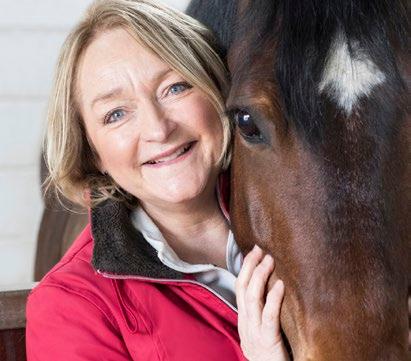
re-living the emotional upset, but not properly processing it.
“Long-term regret is a powerful emotion that can eat away at you—a cousin to bitterness, guilt, shame and remorse. It affects your mood and concentration and can increase your background level of stress. It becomes harder to enjoy life because negative emotions are blotting out so much.”
Chronic regret can be double trouble as our mental and physical health are so entwined. Professor Baker explains, “The bodily pathways involved in emotions and illness are often identical. For instance, the raised blood pressure, heart rate and temperature when someone is acutely anxious operate within the same blood vessels and heart that can be affected by heart disease. There is accumulating evidence that continuous stress lowers immune function, adversely affects DNA and even diminishes the effectiveness of vaccines.”
60 • JULY 2020
REGRETS, WE HAVE A FEW

Mark Whitehouse * , 70, is a retired fashion photographer living in Glasgow
“Many years ago, I had a mortgage and a house in London. But a series of choices I made—including a pretty wild social life and broken relationships—resulted in me losing the house. I went back to renting in my fifties. I knew I’d never be able to buy my own place again.
I spent years feeling angry and regretful. I compared myself to friends who owned houses and didn’t have to worry about money. But I came to realise it wasn’t healthy to keep looking back over my shoulder.
These days, any regret is filtered through my experience of nearly ten years of Buddhist meditation and teachings. I’ve tried to strike a balance between facing my past choices and errors without dwelling on how different it could have been. Meditation has helped me to learn to accept that all things are impermanent and to dwell in contentment each moment in time.
We are only human and don’t always make the right choices. But at least we have a choice about how we react to past events so we can stop them getting in the way of
*names have been changed
“Meditation has helped me”
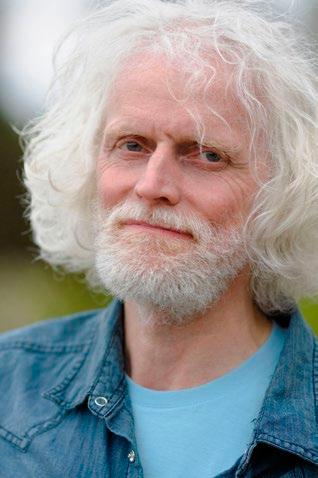
“I spent years feeling angry and regretful”
future health and happiness. Once we’ve processed the past in all its messiness, it’s time to finally let go.”
JULY 2020 • 61 READER’S DIGEST
JOHNER IMAGES /
STOCK PHOTO
ALAMY

Claire Hall, 50, is an estate agent from Eastbourne, East Sussex.
“Regret
is like a virus you can’t shift”
“When I was growing up, my mother wanted to be involved in every aspect of my life. The more she pulled me to her, the more I kept myself slightly at arm's length.
But when she told me she only had months to live, I wanted to do everything I could for her. On that last night at my parents’ house, Dad and I sat with Mum and held her hand. Everything I wanted to say was in my head but I was so
overwhelmed that the words just wouldn't come. To this day, I regret not being able to tell my Mum that I loved her before she died.
Regret for me is like a virus that you can't shift; you think you're on the mend and then you get a day where you're back to square one. I used to buy Mum daffodils, her favourite flowers. So when I see them in the shops in the spring, it catches me. It’s also times when I’m alone— sometimes when I’m feeling happy, equally it can be in times of trouble when I would have turned to her.”
If chronic regret is nagging away at you, Dr Baker advises that the first step is to “reflect, take accountability and be honest
62 • JULY 2020
with yourself. Work through the experience by writing down your emotions or talk in detail to someone who will really listen.
It’s important to break into the stuck record and look at the reality behind it. Research suggests that the key element in effective emotional processing is that new information is incorporated. The more you can see things differently, the more the regret should lift.”
He continues, “Deep exploration with a good therapist can help an issue become less black and white.
For instance, Yvonne* might come to realise that she hadn’t been completely happy with elements of the relationship or they were not fully compatible.”
“But when she told me she only had months to live, I wanted to do everything I could for her"
Many psychologists recommend mindfulness to soothe our beleaguered brains. Dr Greenberg explains, “You sit peacefully and focus on your thoughts and body sensations in the present moment. This helps you stop ruminating about the past and develop an attitude free of judgement and selfblame. If you can acknowledge your emotions, without pushing them down or letting them sweep you away, they’ll begin to pass.”
The next step is to learn selfcompassion so that we can forgive ourselves. “You may find it easy to be understanding and forgiving of others yet beat yourself up for past decisions,” points out Dr Greenberg. For instance, it helps to see things in context. Perhaps you didn’t have the skills needed back then to heal a relationship or work your way through tricky family dynamics?
Mindfulness originated thousands of years ago as part of Buddhist philosophy, but Dr Greenberg points out that it has a strong neuroscientific base. Real-time MRI brain scans have shown that longterm mindfulness can make our amygdala—which plays a key role in processing emotions— less reactive to negative events. Additionally, it protects our memoryprocessing hippocampus from being damaged by chronic stress.
“University of Wisconsin’s studies into contemplative practices powerfully demonstrate neuroplasticity—that even adult brains can change their structure and pathways with repeated practice of new habits,” she says.
n
JULY 2020 • 63 READER’S DIGEST
My Britain:


You'd be hard pressed to think of many areas of London that have undergone such dramatic changes over the years as Brixton. From a bustling hub of south London shoppers in the Twenties, to the home for many members of the Windrush Generation in the Forties and Fifties, who brought with them new businesses, cuisines and culture. In the Eighties and Nineties, Brixton became the backdrop for riots sparked by police brutality.
The district has swung between periods of immense wealth and immense poverty over the years. Some say the Brixton of today—which hosts a plethora of new businesses and tourist attractions—has regenerated, bouncing back from years of neglect. Others say it is becoming gentrified, and losing touch with its diverse cultural roots, as more black-owned businesses close. Here, two long-term residents offer their thoughts on the corner of Britain they call home.
64 • JULY 2020 INSPIRE
Brixton Village
“WE GONNA ROCK DOWN TO ELECTRIC AVENUE, AND THEN WE'LL TAKE IT HIGHER”
Eddy Grant's hugely successful 1983 song was written in response to the horror and anger he felt during the 1981 Brixton Uprising. The song's name sake, Electric Avenue, was the first market street to be lit by electricity.

67 JULY 2020 • 65
/ aL
Z uma Pre SS , i nc. / aL amy
Photo
London Picture Library
amy Stock Photo
Stock
Residents pick their way through the debris after riots in 1981

JEANNIE BLUMIRE, 70, moved to Brixton in 1959 aged nine, when her parents took over a newsagents on Acre Lane.
When my family moved to Brixton in 1959, there was a real community spirit. You didn't wait to be introduced, you were automatically a member of the community. All the shopkeepers helped each other and the community out.
Brixton then, though on the "wrong side of the river", was a very friendly, happy area. You could play in the street any time of the day, and there was no difference in races getting along—we were all just friends. Of course we were interested in each others cultures' clothes and such like, but it was a very lively, happy community. We all called for each other to play—if people were going to the common or park, everyone tagged along. All ages looked out for each other.
Our shop was more like a meeting place a lot of the time. The downside was that I felt I didn't have a home life or parents—long hours meant no one had time to talk to or listen. But I did have the rest of the community looking out for me.
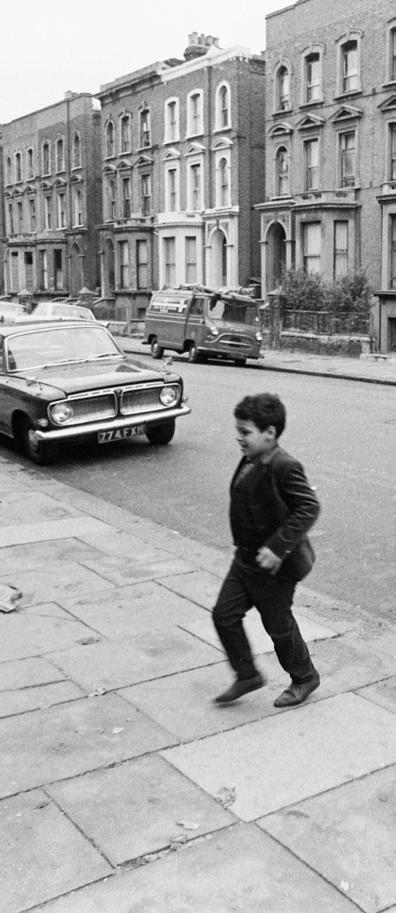
BEST OF BRITISH MY BRITAIN: BRIXTON 66 • JULY 2020
Phi LL i P h arrington / aL amy Stock Photo
Children playing on the street, 1966

BRIXTON'S BEST BLACK-OWNED BUSINESSES
Brixton wouldn't be what it is today without the contributions of its black population, many of whom settled in the area during the first waves of the Windrush Generation. This powerful legacy shines through Brixton's black-owned businesses, but many are struggling to stay open in the face of outside competition, steeply rising rents, and gentrification. Here are three local businesses you can support.
ATLANTIC BAKERY, 67 Atlantic Road
This iconic bakery can be found just behind Brixton Underground Station. A favourite of the local community, they serve up hearty breakfasts and dinners alongside a wealth of classic Carribbean baked goods.
IMPACT BRIXTON, 17A Electric Lane
This co-working space aims to provide a place that empowers social change, and a space to call home for local entrepreneurs, activists and freelancers. They also host a range of exciting events, including educational talks, members lunches and yoga classes. Visit impactbrixton.com
DIVERSE GIFTS, 390 Coldharbour Lane
Diverse Gifts started life as a jewellery stall in Brixton's beloved street market, but it has evolved over the years into a lifestyle store offering a wealth of inspiring creative products. You can also shop online at diverse-gifts.myshopify.com.
DON'T MISS: BLACK CULTURAL ARCHIVES
No trip to Brixton is complete without a visit to the only national heritage centre dedicated to celebrating the histories of black people in Britain. Visit blackculturalarchives.org to learn more.
JULY 2020 • 67 READER’S DIGEST

ALAN PIPER is an architect, and the secretary of the Brixton Society, which aims to make Brixton a better place to live and work in, and give local people a voice.
I have spent all my life in Brixton, since I was born here in 1947. It was mainly a working class district then, and I can't recall any part of it being particularly prestigious during my childhood. The grander houses were being shared between different families at the time.
I may have still been in my pram when I first saw West Indian migrants— what was striking was that these were men in smart suits, with proper hats instead of the flat caps that everyone else still wore!
In the 1950s Brixton was still a major shopping centre, including several department stores. It probably peaked in the 1930s, and war damage was limited, but Lambeth Council's attempts to modernise from the mid-Sixties were too ambitious and drove away commercial investment to other suburbs, so it gradually became more run-down.
Over the past 40 years, we've moved on from the run-down inner city model, where investment and co-ordination were lacking. The challenges now are gentrification and resisting external commercial pressures, though the underlying problems of social deprivation and turf wars between young

Brixton, Coldharbour Lane, 1960
BEST OF BRITISH MY BRITAIN: BRIXTON
drug dealers remain. Too often the council and developers have tried to impose whatever seemed to be trending at the time, from tower blocks to shopping malls and now back to tower blocks again, rather than responding to local needs.
To be more positive, there has been real economic regeneration through creative enterprises moving into the area, and local businesses working together through the Brixton Business Improvement District. A number of fresh ideas are being developed through Transition Town Brixton—the Brixton Pound was a spin-off from this—and diverse projects such as Pop Brixton, Loughborough Farm and the Ebony Horse Club.
More people have been moving back into the town centre, above shops or in new apartment blocks, which is bringing life back into the commercial district, but this conflicts with too many entertainment venues being allowed to operate through the night. The night tube has attracted their customers from all over London and beyond, despite the absence of any facilities like public toilets.
My involvement with the Brixton Society [brixtonsociety.org.uk] all began with a letter from the council telling us they planned to demolish 660 houses. This was happening in several other places around Brixton in the early 1970s. Residents organised themselves to persuade the powers-that-be that

refurbishing the houses was a better option in most cases. The Brixton Society grew out of those residents' groups beginning to network together, to be more effective and to champion the faltering town centre. As an architect, I've been able to bring some useful skills to help show what can be done with old buildings and with rundown sites.
What I love most about Brixton is the diversity and the sense of community. Brixton is very much a melting pot, but it has taken a lot of effort within the community to maintain community centres and local amenities in the face of public spending cuts and commercial pressures. n
JULY 2020 • 69
t he Franci S Frith c o LL ection / aL amy Stock Photo / t revor m ogg / aL amy Stock Photo
Pop Brixton
If I Ruled The World Jay Rayner
Jay Rayner is an award-winning British journalist, broadcaster and writer, best known as the restaurant critic for the Observer
I would ban the serving of food on anything other than a plate. It would be illegal to use slates, let alone dustbin lids or trowels or tiles, or God forbid, anyone would put a cocktail in a jam jar. Plates are brilliant, they’re really good at holding food and they’re much easier for front-of-house staff to pick up. If your food only looks impressive to you when you put it on a dustbin lid or hang it from a washing line, there’s something wrong with your food. We don’t need anything other than a nice piece of crockery. God save us from mini fryer baskets for chips. I hate them with a passion.
All waiters in restaurants would have to take your order with a notebook and a pen. They wouldn’t be allowed to stand looking at you as if memorising your order because that just makes me anxious. I have no idea how good their memory is and there have been a lot of screw ups with orders for me in the past with waiters who think they are a mysterioso
Memory Man, not taking a note. Your job is to make me feel comfortable and relaxed in the restaurant, and if you don’t take my order with a notebook and a pen, I’m going to be anxious. And if I’m anxious, that ruins my meal.
I would make cutlery optional. All food tastes better when it’s eaten with your hands. I know it’s not necessarily pretty but cutlery is a Western affectation, there are billions of people around the world who don’t use cutlery, and it functions really well. The great thing about it is that when you use cutlery you’re using the senses of sight, taste and smell, but when you’re using your hands, you bring in the sense of touch. And that malleability of food, how it feels in your fingers, augments the experience hugely. But you need to feel relaxed enough to be able to do it in all social environments so I think the simplest way would be to change the law and make it actual part of statute that eating with your hands is entirely fine
70 • JULY 2020
INSPIRE
and no one can judge you on it. The question you have to ask yourself is—when you see someone eating a chicken wing with a knife and fork, how do you view that person? You wouldn’t want to have anything to do with them. I’m a benevolent dictator, so no capital punishment, but mentally I could punish such a person.
Writing in sporting metaphors would be illegal. A: they’re lazy writing. “Get it in the back of the net”, “knock it over the boundary”—it’s lazy. And B: I have literally no interest in spectator sports. If I ever read a sporting metaphor in something that’s not related to sports, I tune out. They make me grind my teeth. And I’ll need my teeth for the rest of my life.
Private planes and yachts would be illegal. Not necessarily because of the question of inequality, although that does stand, but because they’re tacky. Who really needs a 200-foot private yacht? Anyone who’s got the money to afford to buy one of those, needs to be frustrated in their desires. And if the way to do that is to stop them being able to indulge in the conspicuous consumption of buying a private plane, or a private yacht, then so be it. It seems to be a good way of making them cross, and that sounds like a good day at the office to me.
I would reinstate free education at universities. One of the greatest tragedies of the past 20 or so years has been the removal of free tuition in higher education and proper student grants. It has done damage to higher education institutions and saddled young people going out into the workplace with debt. I would reinstitute free tuition at universities and colleges, and reintroduce a maintenance grant. And if that meant raising taxes to pay for it, so be it. My generation got all of that. I feel like we pulled up the ladder behind us and it’s outrageous. Education should not be a commercial enterprise. n
As told to Eva Mackevic
Out to Lunch with Jay Rayner is available on all podcast providers. Season 3 is out now


is MINI is electric
LET’S START BY STATING THE OBVIOUS
THIS IS A 3-DOOR MINI HATCHBACK IT’S ALSO ELECTRICALLY POWERED
IN OTHER WORDS YOU’VE GOT A CAR WHICH IS ALREADY GREAT TO DRIVE AND NOW THERE’S 100 PER CENT ELECTRIC POWER
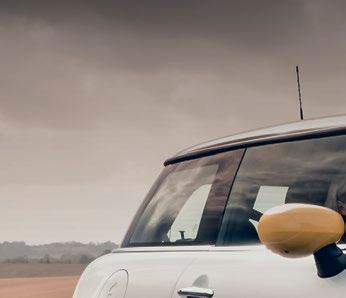

THIS IS A WINNING FORMULA

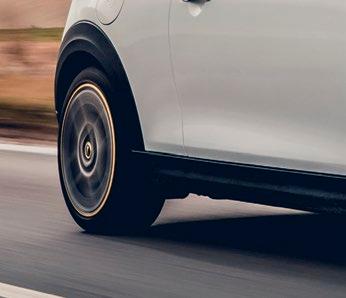



PARTNERSHIP PROMOTION



Let’s start with some number crunching
The MINI Electric starts at £24,400 (including government grant). This is around £400 cheaper than the petrol engine MINI Cooper S. Why compare it with the Cooper S? Simple, they have an almost identical 0-60 performance time of 7.3 seconds. Don’t forget, whereas a conventionally powered car has to build the revs to reach peak power and you need to work the gearbox, electric cars have 100 per cent power instantly and, in e ect, only one gear. The MINI Electric does 0-30mph in around 3 seconds. It’s seriously quick, terrific fun, but incredibly simple to drive.
Hop in, turn it on, select drive, press the throttle and away you go. There are four driving modes; Sport, Mid, Green and Green+. All vary the steering response and the rate in which power is delivered. Green+ mode turns o kit which drains power, like air con for example.
Another switch allows you to alter what is known as regenerative braking. The car charges the battery when you lift your foot o the throttle. It provides a braking force which, once you get used to it, allows you to drive along without using the foot brake.
Back to number crunching
The MINI Electric has a predicted range of 145 miles. This will lower in cold weather. At a fast-charging station an 80% charge is reached from zero in 36 minutes. The sort of charger you will find at work or can be installed at home, will give you an 80 per cent charge in around 3 hours.
There are three levels of trim, but every MINI Electric is well equipped with sat nav, cruise control, air con and a host of customising options.


A daily round journey work commute of, say, twenty miles should be fine for a single charge on a Sunday night to last until the weekend. If you can adapt to the number of miles per charge, the MINI Electric is one of the best electric cars around.
IT’S 100% ELECTRIC, AND IT’S A MINI.
WHAT’S NOT TO LOVE?
THE MOONDUST DIARIES
As returning to the moon becomes a priority for national space agencies and private corporations, one question has yet to be answered: what to do about the sticky, gritty—and possibly dangerous—dust?
The recently rediscovered work of an Australian scientist may provide some answers
 BY
BY
GETTY IMAGES INSPIRE
PHOTO:
Dovey ADAPTED FROM THE BOOK INNER WORLDS OUTER SPACES BY CERIDWEN DOVEY © 2019 CERIDWEN DOVEY STORY FIRST PUBLISHED IN WIRED (US), JUNE 2019, AS ‘TRUE GRIT’
Ceridwen
n the public imagination, the American astronauts who landed on the moon five decades ago were superhumans, not the types to worry about housekeeping. But they did, obsessively. Each time after a moonwalk, they were shocked at how much dust they’d tracked in and how hard it was to banish.
This was no earthly grime; it was sticky and abrasive, scratching helmet visors, weakening seals on pressure suits, irritating eyes, and causing sinus trouble. “It inhabits every nook and cranny in the spacecraft and every pore in your skin,” Apollo 17 ’s Gene Cernan said.
Over the six moon landings, the Dusty Dozen fought valiantly with their foe. They stomped boots outside, then cinched bin bags around their legs to stop the dust from spreading. They attacked it with wet rags, bristle brushes and a vacuum cleaner. Cernan, returning from his last moonwalk, vowed, “I ain’t going to do much more dusting after I leave here.” Years after John Young commanded Apollo 16 , he still believed “dust is the number one concern in returning to the moon”.
Now, with national space agencies and private corporations poised to do just that, the Apollo dust diaries are relevant once more. In January last year, China landed its Chang’e-4 probe on the far side of the moon. Two months later, the Japanese Aerospace Exploration
Agency said it was partnering with Toyota to design a six-wheeled moon rover by 2029. Around the same time, US Vice President Mike Pence announced plans to put American boots back on the moon by 2024. NASA's goal is “to go sustainably. To stay. With landers and robots and rovers—and humans.”
India and Russia have missions planned, too. All of which raises the question: what to do about dust? An Australian physicist named Brian O’Brien may have the answer.
O’BRIEN BECAME EARTH’S foremost authority on moondust almost by accident. In 1964, he was a young professor of space science specialising in radiation. This was during the early phase of Apollo training, when the astronauts were taking crash courses in all manner of subjects—vector calculus, antenna theory, the physiology of the human nose. O’Brien’s task was to teach them about the Van Allen belts, two regions of radiation that encircle the planet. He remembers the class, which included Gene
I
JULY 2020 • 75
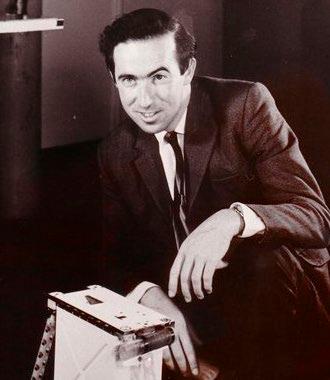
Cernan and Buzz Aldrin, as the most “disciplined and alert” cohort he ever had. In the lead-up to the Apollo 11 launch, O’Brien persuaded NASA to include a small box the size of a thick bar of soap, whose function was to measure the accumulation of dust on the moon’s surface. O’Brien describes it as “a delightfully minimalist” device. The Dust Detector Experiment, (DDE), was perhaps the least impressive component of the Apollo 11 science package. But it worked well enough that the agency included versions on all subsequent Apollo flights.
For years, the data the DDEs sent back to Earth was thought to be lost. Since its rediscovery in 2006, those in the inner circle of outer space have begun to realise that O’Brien’s detectors have more to tell us. Now 85, sprightly and living in Perth, O’Brien has waited half a century for
the chance to share what he knows about one of the solar system’s most baffling substances with the world.
O’BRIEN ALWAYS had an affinity for extreme environments. He took up cave exploration as a teenager and once got stuck for 79 hours. The experience didn’t put him off. A few years later he met his wife, Avril, while exploring a crystal grotto.
By 23, he'd completed a PhD in physics at the University of Sydney and been appointed deputy chief physicist for the Commonwealth Antarctic Division. He was assigned to the icebreaker Magga Dan and found himself gazing at the Aurora Australis rippling in reds, purples and greens across the polar sky. This was in 1958, a year after the Russians launched Sputnik and the same year NASA was founded. O’Brien began to dream of putting a satellite into orbit. In 1963 he was offered a post in Rice University’s new space science department.
NOT LONG AFTER, he got a call from NASA. The agency hoped to hire him as an astronaut instructor, but it also invited him to submit a proposal for a moon experiment. He suggested a device—the Charged Particle Lunar Environment Experiment (CPLEE)—that would measure the energy spectra of charged particles as they rained down on the lunar surface. From 90 submissions, his
76 • JULY 2020
Brian O’Brien
got the green light. NASA told him that the experiment should include a dust cover. O’Brien figured that if the agency was installing dust covers, it should also include a dust detector.
At first, NASA baulked. It would be too difficult, they believed, to construct a detector light enough to meet the mission specs and simple enough that it wouldn’t take up the astronauts’ limited time. O’Brien's design allayed their concerns—three tiny solar cells mounted on a box, painted white to reflect sunlight. As dust settled on the cells, their power output would drop, providing a clear record of accumulation over time. O’Brien threw in a few temperature sensors for good measure, bringing the experiment’s total weight to 280 grams. Because the DDE was so small, it could be bolted onto the seismometer that Aldrin and Neil Armstrong were setting up to measure moonquakes. NASA relented: the DDE could go to the moon. Once there, it would feed data to the seismometer, whose antenna would transmit readings back to Earth. They’d be stored on reels of magnetic tape for analysis.
O’Brien, Avril and their three children moved back to Sydney in 1968, so he arranged for the tapes to be shipped. He can’t remember where he was when the Apollo 11 alighted on the moon. Yet he does remember, vividly, the moment Aldrin said the module was “kicking
up dust” as it landed, as well as Armstrong’s observation that the surface was “almost like a powder”.
THE SEISMOMETER overheated shortly after Apollo 11 left the moon. But the DDE soldiered on and quickly revealed the mischief dust could make. As the Lunar Module took off, two of the detector’s three solar cells registered a sudden drop in output, one of them by 18 per cent. This was accompanied by a spike in temperature. To O’Brien, there was only one explanation: the DDE had been blanketed in dust, which, like blackout blinds, kept light out and heat in. It seemed obvious to him the seismometer had met the same fate.
If NASA hoped to keep its moonbased instruments working, O’Brien concluded, it would need to study dust-spraying thoroughly. He wrote proudly to an Australian colleague that “the DDE may really have earned its trip!” But his American counterparts were not so enthused. The seismometer stopped accepting commands and the experiment was shut down after 21 days.
NASA’S PRELIMINARY REPORTS rejected O’Brien’s explanations, blaming calibration errors instead. O’Brien “strongly disagreed” and argued his case in the Journal of Atmospheric Physics, using one of Australia’s first supercomputers, SILLIAC, to plot the data. But the
JULY 2020 • 77 READER’S DIGEST
article was barely cited in the decades that followed. O’Brien was forced to admit defeat in round one of the moondust wars. He changed careers, becoming the first head of the Environmental Protection Authority of Western Australia. The position was based in Perth, and when Avril made the trip, she brought the 172 reels of DDE data with her. O’Brien asked a local university to put them in storage. For 40-odd years, that’s where they stayed.
AFTER THE FINAL APOLLO landing
in 1972, NASA lost interest in the moon.
There were space stations to assemble, exotic planets to explore, and only so much funding to go around. Then, in 2004, President George W Bush announced the Constellation Programme. There would be powerful new rockets, redesigned crew capsules and roomier lunar modules. Part of the plan was to establish a permanent “foothold” on the moon, which meant renewed focus on landings and settlement.
Swamp Works, a tech incubator at NASA’s Kennedy Space Centre that creates practical solutions to the challenges of living in places beyond Earth. He’d researched preventing rocket exhaust from stirring up dust and damaging lunar infrastructure, and had scoured decades’ worth of studies on rock and soil samples brought back by Apollo astronauts. He even had four rare vials of moondust in his laboratory.
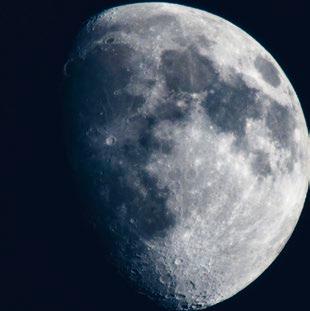
THE DDE SOLDIERED ON AND QUICKLY REVEALED THE MISCHIEF DUST COULD MAKE
This was something that Philip Metzger, a planetary scientist, had been interested in for a while. Metzger was the co-founder of
Over the years, he’d perfected a quick lesson in lunar geology for his team. It went like this: the regolith, a blanket of rocky material on top of the lunar bedrock, contains mixed-up dust, gravel and pebbles. It's thought to be 4.5 metres thick in the plains and nine in the highlands. The moon is bombarded by cosmic rays and solar wind, which means the dust can become electrostatically charged, like a balloon rubbed on hair. It also receives a steady hail of micrometeoroids. When they hit, they create shock waves in the soil, causing some of it to melt and form tiny pieces of glass. These pieces are, Metzger says, “jagged, sharp and very frictional”. Unlike on Earth,
78 • JULY 2020 THE MOONDUST DIARIES
where wind and water would smooth them, they remain this way forever. When Aldrin and Armstrong planted an American flag near their landing site, they struggled to work the pole into the ground, stymied by its high glass content. “It was almost a public relations disaster,” Aldrin recalled.
FOR ALL OF METZGER’S EXPERTISE , one enigma stumped him. Sitting in his lab at the Kennedy Space Centre were pieces of an old spacecraft called Surveyor 3. Between 1966 and 1968, five Surveyor probes had set down on the moon, proving it was firm enough to land on. Surveyor 3 ’s final resting place was within walking distance of the Apollo 12 landing site, and the astronauts had been instructed to bring parts home. One of them, Alan Bean, noted that the probe’s bright-white surface had turned tan. In 2011 Metzger proved that “it was actually ultrafine dust embedded all over the microtexture of the paint”. The bigger question was how dust got there. As Surveyor 3 landed in the near-vacuum of the moon, the exhaust gas from its engine should have pushed dust away from the spacecraft. Metzger couldn’t explain it. By that point, the Constellation Programme had been cancelled. The new rockets were over budget and behind schedule, and the Obama administration decided that this particular headache was better left to the private sector.

A few years later, Metzger joined the planetary science faculty at the University of Central Florida. His final project at Swamp Works was to come up with moondust mitigation strategies—magnets, reusable dust filters, artificial electrostatic charges to repel the dust and make it fall off surfaces, and "air showers" or "wands" to blast it off suits. It had become “the consensus belief” while he was at NASA that “the biggest challenge to lunar operation is dust”.
In 2015, long after he’d given up on solving the mystery of Surveyor 3, Metzger heard about a series of papers by Brian O’Brien. They contained a remarkable theory about moondust. As he read, Metzger realised this was the first explanation he’d found for his conundrum.
IN 2006, WHEN O'BRIEN WAS IN his seventies, he decided to track down his DDE reels. All 172 turned up at Perth’s Curtin University, each
JULY 2020 • 79
Surveyor 3

containing 750 metres of tape. The only problem was that they were in a format so obsolete that the data was beyond O’Brien’s reach.
A local journalist heard of the discovery and broadcast a story. The news made its way to Guy Holmes, a physicist specialising in digitising large volumes of data from old tape formats. Holmes offered his help, for free. O’Brien gratefully accepted.
Even if Holmes succeeded in his search, O’Brien wasn’t sure he’d ever find funding to re-analyse the data. But he felt he had one last chance to set the record straight. So he got to work revisiting his old SILLIAC analyses, determined to publish a peer-reviewed article. It appeared in 2009, almost 40 years after his original moondust paper.
O’Brien examined data from the DDE that flew on Apollo 12 . That detector differed from its
predecessor: it had one horizontal solar cell on top and two vertical ones on the sides. They’d been blanketed in dust as the astronauts loped around on moonwalks, then blasted partly clean when the Lunar Module took off. Curiously, one of the vertical cells became completely clean overnight. O’Brien’s explanation was that the electrostatic charge of the dust—the major source of its stickiness—changes over the course of the long lunar day. When the sun is high and UV radiation is at its peak, the dust is extra charged, and thus extra sticky. When the sun goes down, the dust seems to lose some of its adhesive force. If Conrad had still been on the moon at sunset, he might have had better luck vacuuming his suit.
Within two months of the article’s publication, O’Brien was invited to speak at the second annual Lunar Science Forum, held at NASA’s Ames Research Center in California. The room was so packed that people spilled into the corridor. There was communal disbelief among the younger moon enthusiasts that they’d never heard of O’Brien. “After that, things started to bubble,” he says.
IN EARLY 2010, Holmes located an old IBM 729 Mark 5 tape drive and his employees donated their time to fix it up. The tapes were heated to draw out moisture, then unravelled at extra-low speed. Holmes was emotional during this salvage
80 • JULY 2020
Crew of the Apollo 12 lunar landing mission
process, keenly aware of its historic importance and the trust O’Brien had placed in him. Eventually, the team decoded the data and by 2015 they were ready to unveil an even stranger theory about moondust.
O’BRIEN HAD ALREADY EXPLAINED how the Apollo 12 DDE got clean; what he hadn’t explained was how it got dusty again. His hypothesis went as follows: after the astronauts set off on their journey home, leaving the DDE behind to broadcast its readings, the sun went down for about two Earth weeks. When it rose again, it showered the "collateral dust" they’d kicked up—more than two tons—with UV radiation. This caused the dust particles to become positively charged. They began to “mobilise and shuffle around,” O’Brien says, like a “ground mist swirling”. Repelled by one another and the moon’s surface, they levitated. This created a small dust storm high enough to reach the DDE. The next time the sun rose, the same thing happened, and the next, and the next. Each time, the storm got a little smaller, until finally there was no collateral dust left to feed it. Schmitt, the astronaut-geologist who flew on Apollo 17, isn't convinced. “If fine dust were levitating and redepositing with any lateral motion at all,” he wrote to me, “I wouldn't expect rock surfaces to be clean.”
The debates are ongoing.
“We really won’t know until we go,” Metzger says. He's confident, though, that O’Brien is right. With countries jostling to set up operations on the moon, the Hague International Space Resources Governance Working Group has already begun drafting recommendations for lunar "safety zones" and "priority rights". Perhaps they ought to include an extra clause on housekeeping.
WHEN I VISITED HIM IN PERTH,
O’Brien was gearing up for a trip to Texas, where he was due to present at a NASA conference called Microsymposium 60: Forward to the Moon to Stay.
Moondust is definitely working its way into the zeitgeist, he was happy to report a few days later. Back in 2009, when he gave his first talk to the lunar research community, “I knew nobody and nobody knew me.” This time around, almost everyone knew him.
He admitted that, as he wandered down the endless corridors of strange airports and conference complexes, he felt every bit his age. “But when I came out of the Microsymposium,” he said, “I felt young again.” n
Brian O’Brien returned to Texas in early 2020 to speak at the Lunar and Planetary Institute’s conference, "The Impact of Lunar Dust on Human Exploration." Philip Metzger has been awarded a NASA grant to research how rocket exhaust blows dust.
READER’S DIGEST JULY 2020 • 81
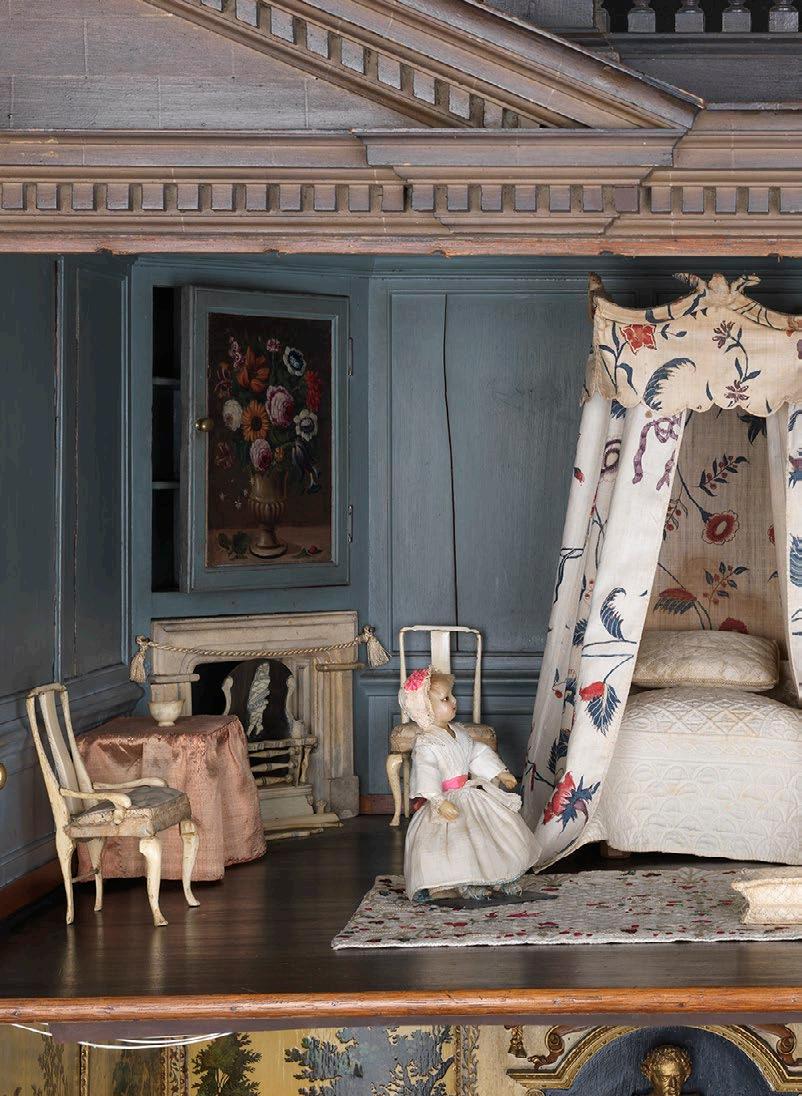

PLAYING HOUSE
Jo Caird peeks into the miniature worlds of dolls' houses through history

83
© NATIONAL TRUST_DAVID BRUNETTI
INSPIRATION
Nostell Dolls House
There’s something magical about dolls’ houses. The sense of wonder that comes from peeking into a miniature world is most keenly felt in childhood, but it’s a fascination that persists long after our playing days are over. And the more elaborate the dolls’ house, the more enjoyable the experience, as we marvel at intricate details and the sheer effort that must have gone into the creation of so many tiny, perfectly-formed objects.
Take for example the red velvet bedroom of the Nostell dolls’ house, a nearly 300-year-old miniature version of the real Nostell—the National Trust property in West Yorkshire that inspired it. The silk velvet bed curtains are as luxurious and detailed as those found on real-sized beds at the time (specifically, the state bed in Nostell’s Crimson Room), the beautifully carved chest of drawers is made from walnut, and the portraits on the wall are framed with goldembossed paper to imitate gilt wood.
Nostell curator Simon McCormack estimates that the dolls’ house would have cost around £20,000 in today’s money—with such high standards of craftsmanship throughout the twometre tall artifact, it’s not hard to see why.
O ne of the rarest dolls’ houses in the UK, the Nostell mini-mansion has been painstakingly conserved and is now the centrepiece of a new
permanent exhibition at Nostell that allows visitors to take a closer look at the dolls’ house than has ever been possible before.
Dolls’ houses originated in 16th-century Germany and the art form hadn't changed very much by the time the Winn family commissioned this one in 1735.
Dolls’ houses—or "baby houses" as they were known—were intended mainly to be admired. The preserve of the rich, they were a way of showing off one’s wealth.
“
The quality of the materials is one of the key features of these dolls’ houses,” says Simon. “They really were very showy.”
Collecting expensive "toys"— miniature versions of real size household artefacts, rather than playthings, as the modern meaning of the word suggests—was a popular pastime among monied
84 • JULY 2020
PLAYING HOUSE
Europeans from around the middle of the 16th century. Tiny items of furniture, silverware and glassware were crafted by both dedicated toy-makers and as a sideline by the manufacturers of full-scale luxury goods. Baby houses, which often mimicked the design of the actual family home, provided the ideal platform for displaying these trinkets.
One of the earliest recorded dolls’ houses was made for the Duke of Bavaria in 1557-58, and while this particular artefact was

lost long ago, a few fine examples of other 17th-century German baby houses survive to this day. There’s a beautiful one in the V&A Museum of Childhood in London. Known as the Nuremberg House, it dates from 1673 and is the oldest in the museum’s collection of more than 100 dolls’ houses, models and shops. We don’t know who commissioned it, but details such as the bust of a unicorn and the layout of the downstairs rooms suggest that it may have belonged to the family of an apothecary.
Will Newton, a senior curator at the museum, explains that baby houses had a practical purpose alongside their decorative one. “A lot of girls’ education in the past emphasised home making skills,” he says. Dolls’ houses often served as educational tools in the teaching of domestic management. With their accurate representations of real-life kitchen paraphernalia, room layouts and interior decorating schemes, baby houses offered an opportunity for girls and young women to practise
JULY 2020 • 85 READER’S DIGEST

putting together and running a home on a small scale. The wellstocked linen closet and elaborate arrangement of tableware in the kitchen of the Nuremberg House, for example, would have been a helpful guide for the young women of the household as they prepared for their future lives as wives and mothers.
Intricate dolls’ houses like this one look like great fun to play with but it’s unlikely that children would have been left unsupervised with them very much. Hardly surprising, given the money and time spent putting them together, but no doubt
a source of frustration to younger members of the family. It wasn’t until Victorian times that dolls’ houses were designed and manufactured with play in mind.
Dolls’ houses first began appearing in Britain in the late 17th century, possibly after being introduced during the Restoration with the return of the Stuart court from Europe. An alternative theory credits travellers on the Grand Tour importing the baby house craze, writes Simon in the bijou guide that accompanies the dolls’ house exhibit at Nostell.
The Ann Sharp dolls’ house is in a private collection today but you can see a single-room Dutch dolls’ cabinet, dating from the end of the 17th century in the Museum of Dutch Kitchen
In any case, the earliest surviving British dolls’ house was said to have been bought by Queen Anne for her goddaughter, Ann Sharp, around 1695. An example of the Dutch tradition of cabinet houses, the detailed interior is concealed behind an ordinary cabinet door, as opposed to the architectural exteriors found on German-style baby houses.
86 • JULY 2020 PLAYING HOUSE
Childhood (there are larger examples in the Rijksmuseum in Amsterdam). From the outside the "Dutch Kitchen" looks like an ordinary linen closet— inside, however, are dozens of pieces of kitchenware and furniture (it was donated to the museum with 215 items but not all of them are displayed at once), including handpainted blue and white tiles that nod to the Dutch porcelain industry.
Wealthy families in Britain took to dolls’ houses and miniature collecting with the same fervour as their European counterparts. The architectural exterior of a dolls’ house would either have been bought as a generic empty shell or commissioned from a local carpenter, with the latter tending towards more elaborate schemes that referenced details from the family home.
Even if a manor house was the inspiration, most baby houses had a town house format as it was more convenient when it came to interior layout. The Nostell dolls’ house is a good example of this: its pediment and windows mimic those at Nostell while the object as whole looks more like a grand Georgian townhouse.
Miniature furnishings were usually a mixture of store-bought, commissioned and homemade objects, with "toys" imported from Germany and the Netherlands sold alongside British products. The level of detail to be found in some
"IT'S UNLIKELY THAT CHILDREN WOULD HAVE BEEN LEFT WITH BABY HOUSES UNSUPERVISED"

of these objects is extraordinary, from hallmarked silver fire irons the size of match sticks to chairs carved from ivory.
Of the many toy shops that opened on British high streets during this period, at least one is still going strong today—originally called Noah’s Ark, Hamleys first opened its doors in 1780. You can still buy dolls’ house furniture there to this day, though you’d be hard pushed to find hallmarked silver and ivory items at its famous Regent Street address.
Wealthier families such as the Winns would have commissioned local crafts people to outfit their baby houses, with the women of the household contributing additional decorative elements. The walls of the drawing room of the Nostell dolls’ house, for example, are decorated with copperplate engravings that have been hand coloured and pasted. Projects like this, as well as costume making for dolls and the planning of the interior design scheme as whole
JULY 2020 • 87
READER’S DIGEST
were a “good way to show off your creative skills,” says Will.
The market for mass-produced toys grew throughout the 1800s, with dolls’ houses starting to be manufactured at scale in the second half of the 19th century. "Box back" dolls’ houses—a very simple design with plain sides, a flat roof and a hinged door—looked just like the Victorian terrace houses springing up all over the country. Bought through toy catalogues or department stores, these massproduced houses were designed to be played with, not just admired.
“ You can trace it to the expansion of the middle classes, who suddenly had disposable income and wanted to be able to buy things for their children,” says Will. “They wanted to have toys that would reflect their own lives.”
This traditional style of mass produced dolls’ house has proved enduringly popular. In the 1930s,

40s and 50s, Tri-ang Toys sold dolls’ houses that reflected domestic architecture of the time, including some modernist models with flat roofs and geometric designs. But it wasn’t really until the 1980s, when Bluebird Toys launched the now iconic Big Yellow Teapot, that there was any real innovation in the field. These days, if you want to buy a dolls’ house off the shelf, you’ll find that most of the options available are in the Georgian or mock-Tudor style.
Even after mass-produced dolls’ houses took off, there was still plenty of demand for bespoke versions. At one end of the scale is Queen Mary’s Dolls’ House at Windsor Castle.
Built between 1921 and 1924, it is probably the most famous dolls’ house in the world. Designed by leading British architect Sir Edwin Lutyens, it features contributions from over 1,500 artists, craftsmen and manufacturers, including a library of tiny books handwritten by famous authors.
"THE HOUSE INCLUDES A LIBRARY OF TINY BOOKS, HANDWRITTEN BY FAMOUS AUTHORS"
At the other end of the scale are the homemade dolls’ houses, lovingly built for children and grandchildren in garages and garden sheds across the globe.
Katherine Biggs, a museum educator who now lives in London, has fond memories of playing with a dolls’ house made by her greatgrandfather around 100 years ago. The same dolls’ house is still in the family today and regularly played
88 • JULY 2020 PLAYING HOUSE
with by Katherine’s 15 nieces and nephews.
“It looks very homemade”, she says with a chuckle. “Inside it’s a real mix of things. The carpets and the wallpaper all match what my mum’s house used to look like. When we first moved into that house all the leftover pieces were used to redecorate the dolls’ house.”
A lot of the furniture is also homemade—some of it up to 80 years old, according to Katherine’s aunts—but there are some fancier pieces too. These are the products of Katherine and her mother’s twice yearly excursions into London to visit a dolls’ house shop in Covent Garden, where she was allowed to choose one precious item to take home with her.

Nostell dolls’ house in museums and stately homes across the land. It's not hard to see why.
“ There’s a little sewing machine table that I remember buying and absolutely loving,” she says.
Enthusiasm for elaborate dolls’ houses continues to this day, with eagle-eyed collectors perusing online auctions for rare miniatures, attending events like the annual Kensington Dollshouse Festival and making pilgrimages to see extraordinary artefacts like the
For Angela Hartnall, one half, along with her husband Tim, of bespoke dolls’ house makers, Anglia Dolls Houses, it’s all about perspective.
“
There is something of a sense of wonder—like [the sense that] we all had as children—when you see something in miniature, as your mind immediately tries to relate the miniature to the real world that it purports to represent. You see the essence of the thing and do not take anything for granted,” she says.
“Good dolls’ houses help us to see things differently.” n
READER’S DIGEST JULY 2020 • 89
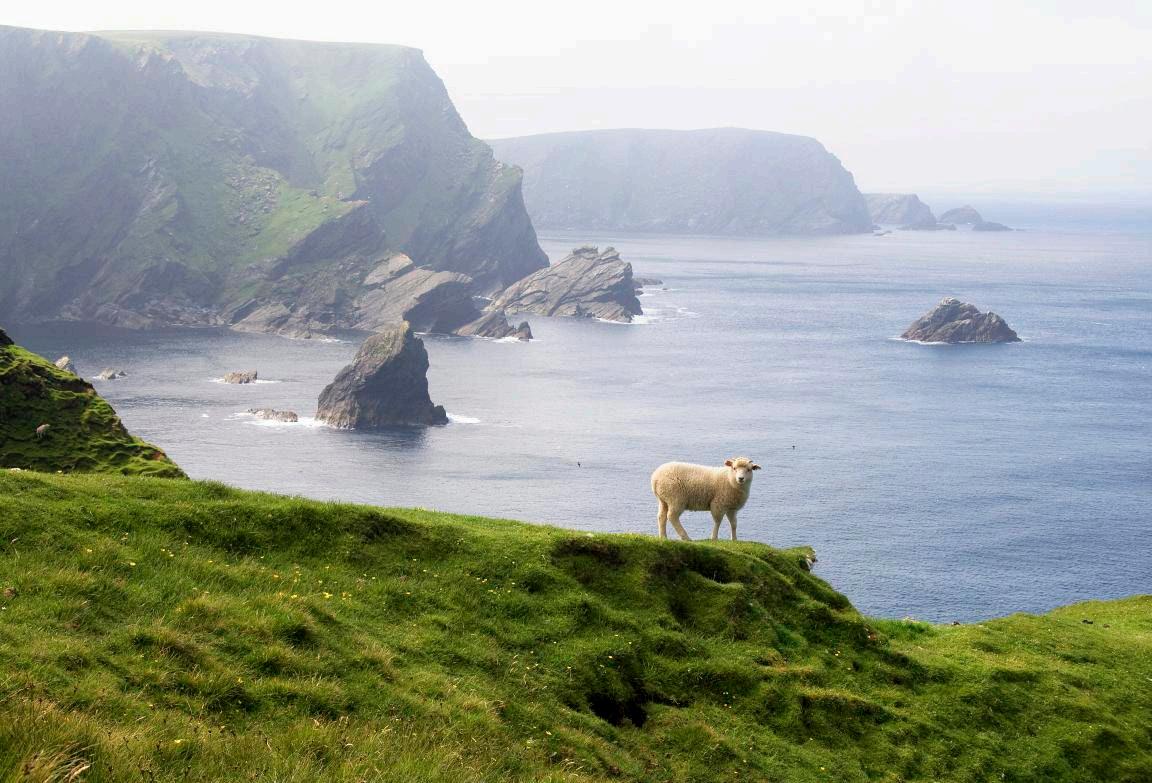
Windswept Beauty
By Nellie Hermann from the New York Times
TRAVEL & ADVENTURE 90 • JULY 2020
The Shetland Islands’ rich history, rugged landscape, and abundance of knitters make it well worth the journey

Grazing sheep, rugged coast and seething ocean are never far away in the islands
Just a few days into my trip to the Shetland Islands, the Scottish subarctic archipelago across the sea from Norway, I found myself on the top of a cliff face, peering through the fog at a huge rock in the North Atlantic Ocean. The rock was topped with the Muckle Flugga lighthouse, built in 1854, a mind-boggling feat as the rock’s cliff face juts straight up out of the roiling sea.
At this most northerly inhabited point in the UK, I felt a profound sense that I was very far from home.
I had disembarked to this spot from a bus at the top of the tiny island of Unst, the most northern and rocky of the Shetland Islands, with a population of about 500. On the bus with me was a group of mostly women from all over the world, all of us attendees of Shetland Wool Week, hailed through the world’s knitting grapevine as the mecca of all knitting and textile festivals.
Now, we stood at the top of the cliffs of Hermaness, home to some of the largest colonies of nesting seabirds in the UK. We squinted through the fog, trying to keep our feet on the ground and our knitted hats on our heads as the howling gusts of wind pulled at us.
Before I arrived in Shetland, as the islands are called, the only thing I really knew about the place was that it is the birthplace of Fair Isle knitting, a technique of colourwork recognisable in traditional sweaters. What I found was a place with a complex history beyond that of the knitting industry, difficult to get to but well worth the journey.
YOU SNAKE DOWN ONEWAY ROADS THROUGH POCKETS OF HOUSES AND GRAZING SHEEP
To get to this spot, the bus had driven us up the length of the “mainland,” the largest of the populated islands, crossed on a ferry to the smaller island of Yell, then driven up a snaking road to Yell’s tip and to a second ferry ride to Unst.
There are about 100 islands in Shetland, though only 15 are inhabited. To get to mainland Shetland, one either takes an overnight ferry or a small plane from one of Scotland’s main cities to Lerwick, the hub of the festival and the islands’ only town, with a population of about 7,500. I took the ferry, a memorable roller-coaster experience on the heaving sea that I’m not sure I want to experience again.
Mystery writer Ann Cleeves has set a series of murder mysteries on Shetland, which were made into an
92 • JULY 2020
pho T o. previous spread: ©is T ock WINDSWEPT BEAUTY

excellent BBC series, Shetland . One can easily see why: driving around the tiny islands is an experience in moodiness—you snake down one-way roads through pockets of houses and grazing sheep, the seething ocean on one side or the other of you.
Often when you curve around a bend in the road, the view before you is breathtaking. If you're driving a car, you have to be careful not to drive off the road. Cliffs drop precipitously just feet from the pavement; inlets have choppy waves (and, in summer, killer whales that pick off sleepy seals), enormous rocks jut up from the ocean just off the coast, and everywhere, roofs and boats and houses are painted cheerful colours that burst against
the overcast sky. I had watched the BBC series, but even such a wellcrafted show is no substitute for being there. One cannot experience the Shetland wind through one’s television. I was there for a week, and there was only one night that I didn’t hear the loud howl of wind all night long. At one point, someone asked a local farmer whether the wind kept up all year long. “Wind?” he said incredulously. “This is nothing! It’s been calm ever since you came!”
The wind is a large part of life on the islands: as winter approaches, everything that might blow away is removed from yards—wheelbarrows, lawn mowers, wooden benches. When the lighthouse keeper still lived at the Eshaness lighthouse on the northwest of the main island, our
JULY 2020 • 93
pho T o: ©shu TT ers T ock
The cliffs of Hermaness are home to colonies of nesting seabirds
Lerwick, the islands' only town, has about 7,500 residents; (Below) a 16th-century castle in Scalloway, once Shetland’s capital
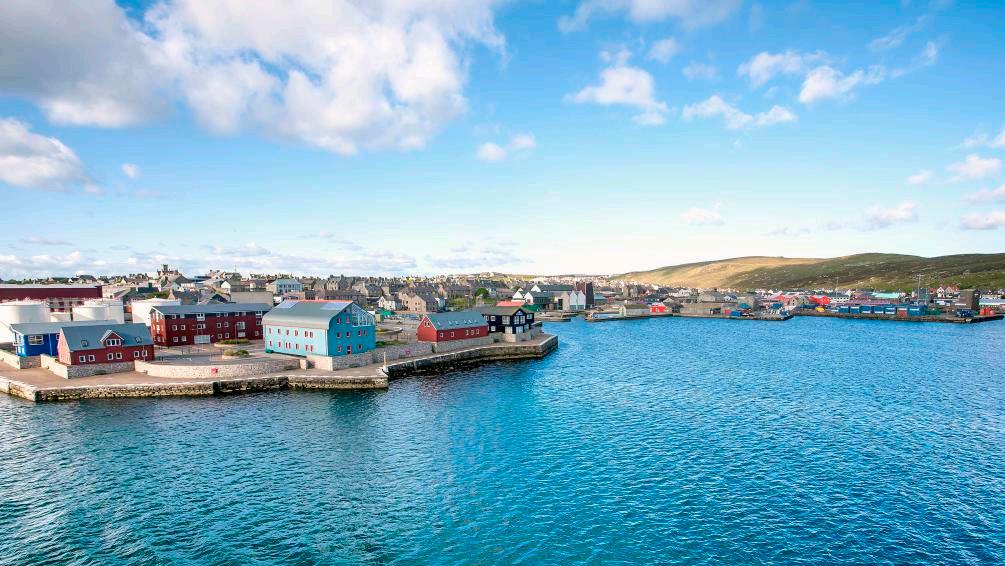

guide told us, he would chain his car to the cliff to make sure it didn’t blow away.
In the winter, there's less than six hours of daylight and in the summer, less than six hours of darkness; the wind, I was told, is constant no matter the time of year, though at certain times it is known to gust harder, stronger, or more or less predictably. In September, the month I was there, the winds are known as “the Equinoctial gales.”
The people of Shetland, though, could not be nicer—one is tempted to think their isolation and hardiness has formed them for kindness. At Virdafjell, the bed-and-breakfast where my friend and I stayed, owner Dorothy Stove greeted us with a plastic bin of clean house slippers for us to choose from, and every morning put out a breakfast spread fit for ten hungry men: scones, assorted bread, eggs, yogurt, fruit, at least ten different kinds of cereal, and even decorative butter slices in a perfectly sized dish.
Vin the hundreds of thousands in the summer, are a popular draw.
Scalloway, once Shetland’s capital, is the home of the 16th-century Scalloway Castle and the Shetland Bus, a special operations group that carried resistance fighters, materials, and refugees to and from Norway during the Second World War. A sign on the castle’s gate declares, “Castle Open, No Key Needed.” My friend and I, the only ones there, wandered through the cool and damp rooms unrestricted.
The main industry on Shetland is fishing—primarily mackerel, herring and salmon farming, and more than 75 per cent of Scotland’s mussels are produced there. But since the medieval period, the textile industry has been an important element of Shetland’s economy.
Local sheep on the islands produce long soft fibers that make Shetland wool unique. The islands’ women spun the wool and knitted garments that were then sold abroad. Today, knitters in Shetland are celebrated for their vision and skill; frequent signs on the road advertise local designers whose homes double as shops.
he main action at the time of my visit was Wool Week. The resurgence of interest in knitting around the world has made knitting festivals increasingly popular; tickets for classes at festivals pho T os: ©shu TT ers T ock x2
isitors are drawn to the Shetlands by archaeology (there are ancient sites scattered all over the islands), by geology (the islands sit atop a network of tectonic plates and boast an array of ancient and volcanic rocks), by caving and kayaking, and by an enormous diversity of nesting seabirds. Puffins, which nest there
READER’S DIGEST JULY 2020 • 95
Knitters unwind in the education centre in Sumburgh
Head Lighthouse

in Edinburgh or Iceland, for example, sell out within hours. In Shetland, Wool Week is vast and diverse. The nine-day programme features myriad classes and exhibitions, tours, gatherings, teas, and lectures on nearly all the islands; on one day, I counted 54 different offerings.
A day tour of the main island included a stop at Ollaberry Hall on the western shore, where a table more than eight feet long boasted plate after plate of handmade cakes and cookies (“homebakes”) and local women served us tea. This spread accompanied an exhibit of lace shawls knitted with cobweb-thin yarn, so thin the whole shawl could pass through a wedding ring.
It feels as if every local person who has anything to do with textiles or wool is featured in some way. This includes Oliver Henry, the wool sorter at Jamieson & Smith, one of the two largest purveyors of Shetland wool, who gives a talk about the job
of sorting and grading wool, and Wilma Malcolmson, who makes the knitwear worn by the detective on Shetland. She teaches a class on knitting with multiple colours.
Even Hazel Tindall, the world’s fastest knitter—262 stitches every three minutes, I was told—teaches a few classes.
Ahighlight of my week was a visit to Uradale Farm, one of six organic farms on the islands, where Ronnie Eunson gave us a tour of his property. It sits high on a hill overlooking many rolling acres and the sea. The view was staggering and the sheep—unimpressed.
Getting there was a bit of a challenge—as with most everywhere on the islands, there are no street addresses, so one has to know the landmarks one is looking for or pray that your smartphone map app recognises what you are searching for.
96 • JULY 2020

Ronnie decried the phasing out of native sheep on the Shetland islands. Of about 150,000 sheep on the islands (compared to 22,000 people), fewer than 30,000 are native, though they are adapted to thrive on the islands.
Most native sheep are black, brown, or grey, and for many years, only white wool has been worth any money because it can be more easily dyed. Asked whether he saw any change, Ronnie spoke about Wool Week creating interest in native wool. “You’re standing here, that’s the change,” he said. Before Wool Week started ten years ago, he said, the situation seemed quite desperate.
In 2018, nearly 700 people—an increase of 100 over the previous year—made the trip to the festival, primarily from Europe, the US, and
Canada, but also from farther-flung places such as Australia, Japan, Egypt, Indonesia, and Israel.
Where is all of this attention coming from? The BBC series has helped, as has perhaps a back-tobasics interest in those of us who feel increasingly distanced from a natural form of community in our modern world.
One doesn’t want to get too positive. The Shetland knitting industry still faces high demand for inexpensive, mass-produced white wool, and a small market for handmade goods. But standing on the shores of Shetland, a knitter can’t help but feel optimistic, and a person can’t help but feel swept away. n
JULY 2020 • 97
New York Times (November 21, 2018), copYrighT © New York Times, NYTimes.com
Shetland sheep
My Great Escape:
Colourful Cuba
Our reader Liz Cragg from Woking pays a second visit to the island of Cuba

Cuba is a very poor country financially, but it’s unbelievably rich in culture. A visit to the island feels very much like going back in time to a country in which time has stood still.
I landed at the tiny airport of Holguin, Guardalavaca and it instantly put me in a holiday mood because it is so small and simple.
The roads in Cuba are good but the transport can be unreliable and


old and you often see people riding horses, in control of donkey carts and on bicycles. Old American cars might have a sofa instead of a back car seat, where the owners have had to improvise a repair job.
I loved the resort I stayed in on the Atlantic side of the southern end of the island, and it gave me the
TRAVEL & ADVENTURE 98 • JULY 2020
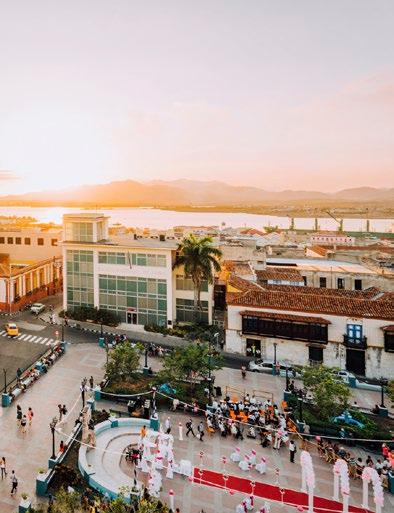


opportunity to visit Santiago de Cuba on the Caribbean side of the island. Santiago de Cuba is the second largest town in Cuba after Havana. It is a poor area, and there are no shops as most Cubans have to go to food banks to exchange stamps for food and basic necessities. Many Cubans here make a living by making leather goods, paintings and wooden crafts, which they take around to the resort hotels as an opportunity for their tourists to buy bits and pieces. It is exciting to see all the stalls every morning when you go down to breakfast as it is a new group every day.
The beaches are amazing and the water is clear, warm and clean, as Cubans take great pride in their island and they are very proud people. I found that locals were always willing to help and were continually cleaning and working in the beautiful tropical gardens. Walking through the island’s gardens you will come across colourful lizards and crabs and, of course, beautiful bird life.
The Cuban welcome to tourists is strong and loving, and as all the food you’ll eat comes from the island itself, it is always extremely wholesome, delicious and fresh.
What is not to love and enjoy on this beautiful island with its gentle people? It is always a joy to return. n
Tell us about your favourite holiday (send a photo too) and if we print it we’ll pay £50.
Email excerpts@readersdigest.co.uk
JULY 2020 • 99
Governors Island, New York
This month, Richard Mellor looks at the perfect summer spot in Manhattan—the green oasis that is Governors Island
The besT views of Lower Manhattan’s famous skyline? You’ll find them on an isle in New York Harbour. Around 800 yards south of Manhattan, Governors Island’s 172 acres (about half the size of Hyde Park) contain four hills whose flanks offer fine vantage points for gazing at the Empire State Building or One World Trade Center—as well as the Statue of Liberty.
Vistas are far from the only reason to come. Activity fans will find ziplining and rock-climbing available, plus bikes for rent. National Park Service guided walking tours are also offered, as are free kayaking classes. The family attractions, meanwhile, include an adventure playground and a quartet of slides culminating in New York’s longest at 57 feet.
Culture-wise, the island’s north contains two ex-military fortifications,
built to defend New York in 1812, which can be visited. Nearby are another 52 historical buildings, from barracks to a Greek Revival mansion. Many of those now stage art shows, with site-specific sculpture and installations dotted about elsewhere. An art fair (4heads.org) takes place on September weekends, and the Rite of Summer Festival (riteofsummer.com) involves wideranging free concerts.
Should you just want to relax, there are designated rest areas—food trucks and ice-cream vans stand in wait—and a tree grove lined, charmingly, with some 50 red hammocks.
Governors Island opens from early May until late October. Ferries operate daily from Manhattan’s Battery Maritime Building or on weekends from Pier 11/ Wall Street (Manhattan) or Brooklyn Bridge Park’s Pier 6. govisland.com n

TRAVEL & ADVENTURE
GEMS HIDDEN



Access all areas with an exciting homelift
A Stiltz Homelift is perfect for moving between floors in your home.
This compact, discreet and elegant homelift can be installed in the corner of your living room, hallway or kitchen. It can also fit in a cupboard or within the turn of your stairs*.
Whether you’re renovating, extending or embarking on a new build, Stiltz can work with you to find the best location for your homelift.
Why not visit our website customer stories and read how other Stiltz Homelift owners are enjoying a new lease of life.
Call today for a brochure or free home survey.
• Order direct from manufacturer
• Cost-effective
• Installs in a day**
• Fully guaranteed
• Small footprint
• Flexible positioning
• Safety features
• Battery back up
• Contemporary styling
• Fast track delivery
us FREE on 0808 273 9729 or visit www.stiltz.co.uk * Depending on space available. ** Based on installing a Duo Homelift (shown) in pre-prepared aperture. AS SEEN ON TV
Call
Credit Cards: Good Or Bad?
The prospect of credit cards can seem a little daunting.
Andy Webb clears up the confusion and reveals when it’s actually a good idea to get one
Credit cards tend to have a bad reputation—and in some instances that’s rightly so. According to the Money Charity, the average household owes £2,595 on cards. But managed properly, they have the ability to bring down the total cost of borrowing, provide additional consumer rights and even make you money. I’ll take you through each of these benefits, but first, some golden rules you really need to follow if you want to avoid costly debts.

Andy Webb is a personal finance journalist and runs the award-winning money blog, Be Clever With Your Cash
102 • JULY 2020
MONEY
Only use them if you can afford to
The biggest mistake with using a credit card is when the purchase is for something you don’t need and can’t afford. Most of the benefits you can get from a credit card are wiped out by the interest you’ll get charged.
The only exception is if you’re using a 0% purchase credit card which will let you spread the cost of something expensive over a year or more. But you still need to be sure that you can afford to clear the balance before the 0% period ends.
If you can, clear the full balance every month
Ideally you want to avoid getting charged any interest on the money you spend, and the way to do this is to pay off what you owe every month. An easy way to do this is by having a direct debit in place.
If not, pay as much as you can
If the full amount isn’t going to happen, perhaps because you’re clearing a large existing debt, don’t fall into the minimum repayment trap.
This basic repayment level is required to prevent extra charges added and defaults on your credit report. However, it’ll be such a small amount it could take you years to pay the card off—which in turn will add a lot of interest.
Instead, pay as much as you can afford each month which will make a huge difference.
MANAGED PROPERLY, THEY HAVE THE ABILITY TO BRING DOWN THE COST OF BORROWING
Check your credit file before you apply for a card
Getting a new credit card will be subject to a credit check. If you’re rejected it’ll be added to your report, which could then make it harder to get credit elsewhere.
So it’s really important that you don’t just blindly apply. You can check your report for free at websites like Clear Score and Money Saving Expert to make sure there aren’t any errors. But even if everything looks fine, you should be looking for eligibility checks before applying.
You can find these on comparison sites and direct with most card providers. You’ll enter your details, and something called a “soft check” will be made against your credit file. This search won’t be visible to potential future lenders.
In return you’ll be told your chances of getting the card. The higher the better. You might even be pre-approved for a card, guaranteeing you’ll be accepted.
JULY 2020 • 103
When To Use A Credit Card

To boost your consumer rights
You might have heard consumer experts like me talk about “Section 75” when it comes to credit cards. Essentially this is part of a law that makes credit card companies equally liable with the seller for purchases over £100 made on the card.
This means you don’t have to go back to the retailer for a refund if your goods don’t arrive or aren’t up to scratch. Handy if the company has gone bust or just isn’t playing ball.
So if you’re buying something expensive it’s worth putting it on a credit card to get this extra protection.
To earn cashback
I have two cashback and reward credit cards and I use them for every single purchase I make. The bigger earner
is from American Express where I get 1% back for every £1 I spend. The backup is a Mastercard from John Lewis which I use when Amex cards aren’t accepted. This earns me the equivalent of 0.5% back in vouchers.
This really adds up, even at seemingly low rates. Spend £1,000 a month on food, petrol, shopping and more, and that’s at least £100 a year, just from your normal spending.
On top of this there are often new customer bonuses worth up to £125.
But you really should only use this feature if you can pay it off each month, as interest charged will wipe out these returns.
To save on currency fees
Most credit and debit cards will charge you every time you spend in a
104 • JULY 2020
MONEY
foreign currency or take money out of a machine overseas. But there are a handful of credit cards (and one or two debit cards) that will let you spend overseas fee-free.
To reduce the cost of borrowing
I mentioned above the 0% purchase credit card as one of the few exceptions to using a credit card for something you can’t afford.
But you can also use a new credit card to cut what you pay on an existing credit card debt. A balance transfer credit card lets you move over the amount you owe and pay a lower interest rate. The best of these charge zero per cent interest for a fixed amount of time.
So say you owe £2,500 at 21% APR and move it to a card where it’s 0% for 25 months. Fixed payments of £100 a month would result in you
saving £720—the amount you would have been charged in interest.
These cards do sometimes come with a transfer fee of a couple of per cent, but that cost will be far smaller than what you’d have to pay if you did nothing.
For other debts you could try a specialist Money Transfer credit card, where you are able to take cash into your bank account. Again, there’s a small fee attached but it’s often cheaper than a personal loan.
These can be handy to clear expensive overdrafts or pay off catalogue debts.
With all 0% interest credit cards, it’s important to make at least the minimum repayment in order to keep the interest-free offer going— although you should definitely aim to clear the balance before interest charges do begin. n
Eyelash Invaders
Depending on how old you are, it’s pretty likely that you have eyelash mites. These tiny creatures live on old skin cells and the natural oil (sebum) produced by human hair follicles. They are usually harmless, though they can cause an allergic reaction in a minority of people.
Eyelash mites typically grow to a third of a millimetre and are near-transparent, so you’re unlikely to see them with the naked eye. Put an eyelash hair or eyebrow hair under the microscope, though, and you may find them, as they spend most of their time right at the base of the hair where it meets the skin. Around half the population have them, a proportion that rises as we get older.
SOURCE: THE GUARDIAN
JULY 2020 • 105 READER’S DIGEST

A TASTE OF HOME: RAV BANSAL Spinach Masala Quiche
When I think of home, I immediately think of my mother’s cooking. Her skills in the kitchen are unmatched. Her ability to transform a simple set of ingredients into something mouth-wateringly spectacular is pure magic. I take pride in adapting some of her recipes and putting my own modern twist on them, which
allows me to express my identity as an Indian living in multicultural Britain. Food, to me, has so much power; the ability to unite differences in the most satisfying way, and my fusion approach to cooking highlights that. This Spinach Masala Quiche is an example of my love for this type of cooking and it also happens to be incredibly delicious.

Ingredients:
Pastry case
• 280g plain flour
• 140g salted butter, cubed
• 120ml cold water
Filling
• 180ml double cream
• 80ml milk
• 3 eggs, beaten
• 1 small red onion, chopped
• 2 cloves of garlic
• 1 fresh tomato, chopped
• 1 green chilli, chopped
• ½tsp ground cumin
• ¼tsp turmeric powder
• 1tsp garam masala
• ½tsp salt, or to taste
• 160g fresh spinach, chopped
• Handful of coriander, chopped (plus extra for garnish)
• 70g cheddar cheese, grated
1 Make pastry by blitzing the plain flour with the butter in a food processor until it resembles fine bread crumbs. Slowly add water until combined (you may not need it all). Wrap mixture in cling film and place in fridge for 20 minutes.
2 Roll out the pastry on a lightly floured surface until slightly larger than your tin.
Use your rolling pin to lift it, then drape over the tart case so there’s an overhang of pastry on the sides. Push the pastry into the corners of the tin and lightly prick the base with a fork. Chill in the freezer for 20 minutes. Heat your oven to 200°C/gas mark 6.
3 Make the filling by adding the double cream, milk and beaten eggs into a measuring jug. Mix and set aside.
4 In a saucepan, gently heat some vegetable oil. Add the onion and cook until slightly brown. Add the garlic, tomato, chilli, and cook for another minute. Add the cumin, turmeric, garam masala and salt. Mix until well combined. Add a splash of water, followed by spinach and coriander. Cook until wilted. Set aside.
with a large circle of greaseproof paper, then fill with ceramic baking beans. Blindbake for 20 minutes, remove the paper and beans, then continue to cook for 5-10 mins until brown. Remove tart case from the oven.
6 Sprinkle half of the cheese on the base of the tart and spoon on the spinach mixture, discarding any extra liquid. Pour in the egg/cream mixture and top with the remaining cheese.
7 Bake for 25-30 minutes until set and golden brown. Leave to cool in the case, trim the edges of the pastry, then remove from the tin. Scatter over the remaining coriander and serve. n
5 Remove the tart case from the freezer. Line
Follow Rav on Instagram, Twitter and Facebook at @RavSBansal. His podcast, Do You Wear That in the Shower?, relaunches in June. A menu collaboration with Montcalm Royal London House Hotel, is coming soon
JULY 2020 • 107
FOOD
World Kitchen Ireland: Dingle Pies
Dingle or “Kerry” pies are savoury mutton pies, a speciality of the Dingle Peninsula and the surrounding region in County Kerry, and are probably the most famous pie in Ireland. They were traditionally cooked in a bastible, a type of flat-based iron pot, then reheated in mutton broth, while the pastry was originally made with mutton fat
Serves: 4
• Preparation time: 30 minutes
For the pastry
• 200g plain (allpurpose) flour, sifted, plus extra for dusting
• 100g cold butter, cubed
• 2 eggs, beaten, one for brushing
• 1⁄2tsp sea salt
For the filling
• 50g butter
• 1 onion, diced
• leaves of a few sprigs of thyme, sage and rosemary, finely chopped
• 500g mutton, diced
• 50g plain (allpurpose) flour
• 450ml lamb stock
• sea salt
• Cooking time: 1 hour 45 minutes
1 To make the pastry, combine the flour and salt in a mixing bowl. Rub in the butter and then add one egg. Use a tablespoon or two of ice-cold water to bring the dough together, if required. Wrap in cling film and refrigerate for at least 1 hour. When ready, roll out the dough on a lightly floured work surface and cut into 4 rounds with a 10cmdiameter pastry cutter and 4 rounds with a 14cm circular pastry cutter.
2 Meanwhile, make the filling. Melt the butter in a large pan and fry the onion with the herbs for about 5 minutes until the onion is soft and translucent. Add the mutton to the pan and brown all over. When nicely coloured, add the flour and cook for 2 minutes to make a paste.
3 Add the lamb stock, reduce the heat and simmer for 1–2 hours until the mutton is extremely tender. Remove from the heat and allow to cool.
4 Preheat the oven to 180°C/Gas Mark 4.
5 Place a quarter of the mutton mixture into the middle of the 4 larger pastry rounds. Brush the sides with a little water and cover with the remaining four lids. Make a small circular hole in the centre of each pie. Brush each pie with the remaining egg and crimp the edges with a fork.
6 Bake in the preheated oven for 30 minutes or until the filling is hot and the pastry tops are a golden brown. n
108
FOOD
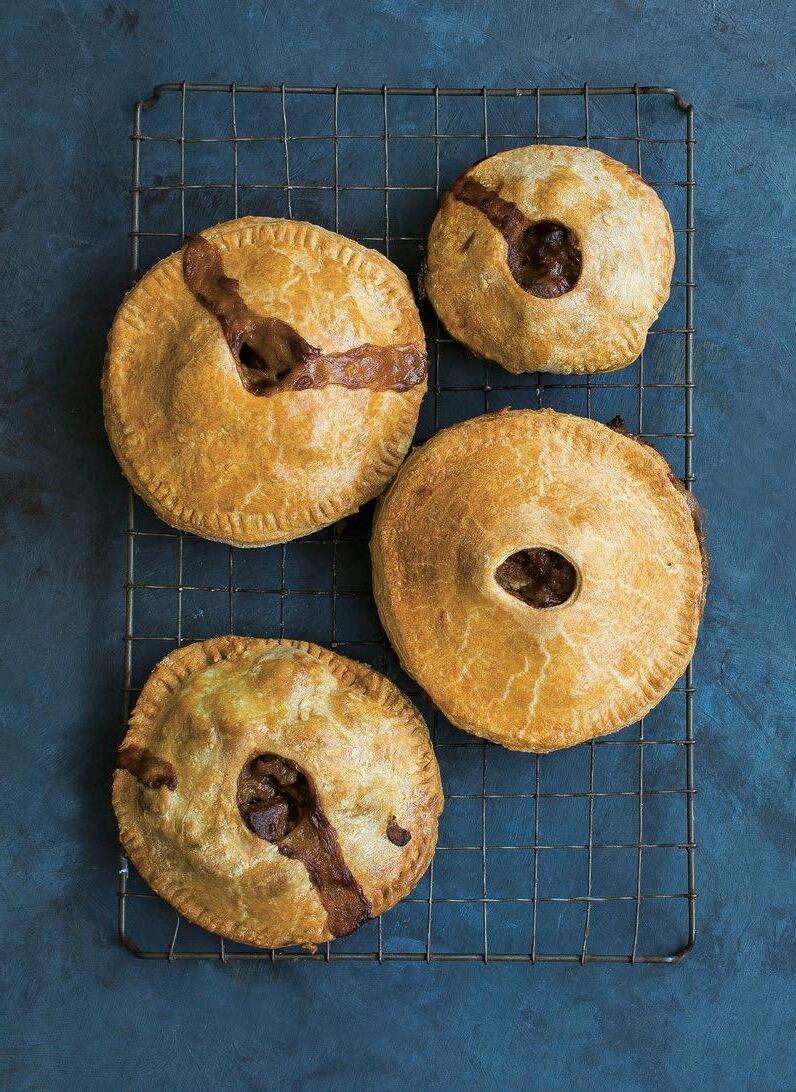 Taken from The irish Cookbook by JP McMahon, published by Phaidon
Photography & Styling: Anita Murphy and Zania Koppe
Taken from The irish Cookbook by JP McMahon, published by Phaidon
Photography & Styling: Anita Murphy and Zania Koppe
Complete your room scheme by fitting a stylish curtain pole, following our simple step-by-step DIY guide
How To Hang A Curtain Pole
1
Most curtain poles come as part of a kit, so you have everything you need to fix it to the wall with minimal fuss. Make sure the kit includes brackets, screws, finials, the pole itself and curtain rings (if needed for your style of curtains).
Before starting, remove any existing window dressings so you have a clear space to work with.
2
To ensure the curtains can be drawn at each end of the window without covering the glass and blocking out light, choose a pole a minimum of 30cm wider than the window frame. A lot of poles now come as extendable designs, so you can easily adjust the length, or, for small windows, use a hacksaw to cut it down to size.

Homes and gardens writer and stylist Cassie Pryce specialises in interior trends and discovering new season shopping
3
Hold your curtain pole above the window frame to decide how high you’d like it to sit, depending on the length of your curtains. Mark this line on the wall with a pencil and use a spirit level to check it’s straight. You’ll also need to mark the screw holes where the brackets will be fixed: poles are normally supported by a bracket at either end, plus a central bracket, but you’ll need more if it’s a particularly wide window.
4 Drill a hole into each marked screw hole for the brackets and insert rawlplugs before screwing them into place. Erase the pencil lines and attach your curtains (or curtain rings) onto the pole before slotting it through the brackets, keeping the last curtain ring, eyelet or tab on the outer side of the bracket. Fix on the finials to either end of your pole and make sure that it hangs evenly over the window frame. n
110 • JULY 2020
HOME & GARDEN


Eco Tech That’s Shaping The Future
With our world’s rapidly increasing temperatures already damaging wildlife and threatening the extinction of all creatures, it can seem as if there’s no hope. But some industries are working hard to change the course of fate.
The pollution solution
Bioremediation uses various micro-organisms to break down pollutants in the air and turn them into non-toxic substances, using three main systems: soil, air and water. For airborne pollutants, “biofiltration” involves clarifying contaminated air through a culture of micro-organisms that degrade it into carbon dioxide, water or salts. Waste water is decontaminated when the micro-organisms oxygenate waste products which allows them to degrade, reducing ammonia into nitrogen. Industrial soil (which is heavily polluted) has microbes
introduced to break it down into harmless nitrous gas.
Ocean Thermal Energy
According to the US Department of Energy, the oceans absorb enough heat from the sun to equal the thermal energy contained in 250 billion barrels of oil each day. The UK uses 1,583,896 barrels each day. So, in a bid to make use of this, scientists came up with ocean thermal energy conversion—a process that uses the differing heat levels of the sea (which vary depending on the depth) to create vapour which powers what is effectively a huge motor. Currently, the conversion efficiency of this process is very low, but the technology is developing all the time and it’s a promising idea for the future.
Rooftop greenery
It’s a wonder that this seemingly simple solution to a lack of trees and foliage wasn’t used sooner. Rooftops across many forward-thinking European cities are being covered in greenery, and it has more benefits than you might think. As well as encouraging urban wilderness in an otherwise concrete landscape, green roofs cool down the overall temperature of the city by increasing evapotranspiration (when water is released into the atmosphere by plants). It also filters pollutants and soaks up CO2, which, considering buildings contribute 34 per cent of the UK’s greenhouse gases, is very necessary. n
ENVIRONMENT 112 • JULY 2020
Expert Q&A: Wave Crookes
Co-Founder of Seagrown
How did you start growing seaweed?
I was a navigating officer of a polar research ship, RSS James Clark Ross. In Antarctica, one of the scientists on the expedition was Laura, my now-partner. We wanted to pool our collective expertise which for Laura is marine science and for me, marine operations. As a happy coincidence, the Yorkshire coast where I’m from, is a very good place to give this a go.
What is seaweed farming?
We focus on brown algaes, which are a subsidiary of three groups; green, red and brown. They grow under water in the intertidal area, as they like staying wet and being in a high-energy environment. So it stands to reason that they’ll like it offshore with the ocean currents, the tides and the swell of the North Sea.
First we harvest local reproductive seaweed. Then we make it release its spores and capture them in a solution. At the right time, we impregnate those spores onto ropes which are suspended horizontally on a tension framework about two metres down. The seaweed grows rapidly and when it’s big enough, we mechanically harvest it from each rope.
What are the uses of seaweed? There are so many! It’s a very sustainable superfood, has lots of interesting pharmaceutical compounds and can be used for bioplastics. It’s also a store of carbon. The carbon neutral target is going to be very hard to achieve by simply growing trees, we need to grow carbon draw-down crops, and seaweed is at the top of that list. On top of that, when ruminants are correctly fed a seaweedbased diet they produce 80-90 per cent less greenhouse gas emissions.
What are the benefits of farming it?
Seaweed beneath the surface acts like a rainforest canopy and will allow wildlife to live in it while the sea floor harbours a habitat not disrupted by anchoring or boats. The seaweed oxygenates seawater and brings the pH down—seawater is getting more acidic which attacks the shells of shellfish. So, if we can create a friendly ecosystem, shellfish will grow. And when they do, they release nutrients for the seaweed— it’s a circular process that’s mutually Most shellfish are dredged which is very destructive but our way means we could grow them from nothing. n
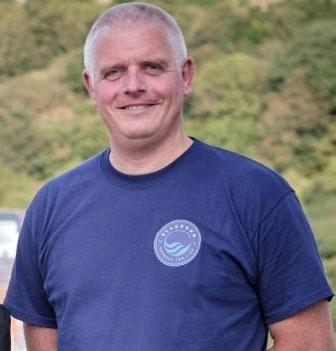
Seagrown.co.uk
Summer Sandals
Lisa Lennkh reveals why having your feet a little more free will bring you comfort in style this summer
Nothing says summer to me quite like a pedicure with bright nail varnish, worn with a pair of beautiful sandals to show it off. My favourite pair of sandals are a colourful beaded pair that I've had for over ten years. Every year, I can't wait to bring them out into the summer sun.
A great pair of sandals can take you

Lisa Lennkh is a banker turned fashion writer, stylist and blogger. Her blog, The Sequinist, focuses on sparkle and statement style for midlife women
from breakfast to dinner with your summer holiday outfits. They also add a splash of irreverent summer fun to an otherwise boring trousersand-T-shirt outfit when you're not on holiday. In London's sticky summer heat, I live in a basic linen or cotton dress and a cheery statement sandal. I've even added a nice comfortable flat sandal under a long summer dress for a wedding… I'd much rather be comfortable than fight with a pair of heels in gravel or a soggy lawn! Think of sandals as a summer version of the ballerina flat, and wear them on any occasion that you'd normally wear those.
For two years, I've had my eye on a metallic pair of "cobra" sandals from online sustainable British brand Aspiga. One of my friends has these in gold, and she swears they are her most comfortable sandal ever. That alone would sell me! Every time I see her wearing them, either with a pair of jeans, with a maxi skirt, or in her beach holiday photos, they
FASHION & BEAUTY 114 • JULY 2020


look incredibly elegant. They're eyecatching and unusual, but still have the look of a classic Greek sandal about them. I prefer the gold pair as most of my jewellery is gold, so these would tone better with my wardrobe. This may be the year I finally break down and get a pair for myself, despite probably not having a summer holiday!
For smarter occasions, a trouser suit is glorious with a low-heeled sandal. Whether cropped trousers or long and flowing ones, your trouser suit will thank you for the summer style update. I'm always looking for ways to get more mileage out of my many good work suits. A low-heeled sandal and a summer camisole rescue the suit from corporate office attire and put it into evening drinks territory. Keep the bag and jewellery light and dainty as well, so the outfit feels cohesive with the sandals.
My only word of caution about sandals is to make sure you buy ones that you will find comfortable to wear long term. You know your own feet better than anyone. My mother doesn't like wearing any sandals with a piece that goes between her toes, such as a flip flop, so she chooses ones with a band across the toes. I feel slippery and unstable in that type of sandal, and much prefer the security of something sturdy between my toes. Whatever you choose, make sure you choose sandals with many summers of wear ahead of them! n
JULY 2020 • 115
Living Your Breast Life
Can boob masks really give you a lift?
Jenessa Williams needs convincing…
What are they? We’re all familiar with the facemask. A staple of athome pamper sessions and emergency-breakout treatments, we’ve been popping them in our shopping baskets for years as a little pick-me-up. Sometimes they offer a miracle cure—often they're just a nice way to force ourselves to take a few minutes to sit still.
"Boob masks" then, are the logical extension of sensitive skin pampering. Formulated in sheets or clay pastes, they are made to be applied directly to the breast and left on for a set time before being washed off. Think of them as a specialised moisturiser—a quick way to pack in targeted vitamins and nutrients, albeit in slightly more burlesque form…
What are the supposed benefits? If you’ve found yourself catching a little too much back-garden sun, a boob mask might be an efficient way to soothe sun damage. Clay ingredients will tackle sweat and oil, while
collagen and green tea hydrate in a manner that is said to aid appearances of plumpness and lift. Breastfeeders may also benefit from a mask as a way to calm sore nipples, with active ingredients that drive oil and water back into the skin.
Do they actually work? As a novelty gift to raise a giggle, you can’t go far wrong. Available in numerous fun patterns and shapes, they can be a good way to skin-test with various skin-firming ingredients. But if you’re looking to maintain fresh, clear skin, a good quality body wash and moisturiser combination will likely do the same job. Where boob masks do triumph, is in encouraging us to spend a little more time caring for our breasts. Getting familiar with their shape, size and texture is incredibly important for our overall health, alerting us to any changes or inconsistencies. Whatever product helps you do that, we’re all for it. But until then, we’ll happily stick to our normal mammary moisturiser… n
FASHION & BEAUTY 116 • JULY 2020
RECLINING HARDWOOD SUN LOUNGER
WITH LUXURY CUSHION
£165 for Reader’s Digest readers (RRP £295.99)

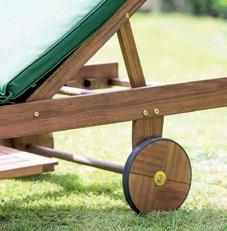
THIS SOLID, BEAUTIFULLY MADE, QUALITY PIECE MAKES IT EASY TO RELAX!
• Fully reclining hardwood sun lounger with side pull out table (slides to left or right) and luxury cushion with head pillow included
• Stained, oiled and gently rubbed down by hand, the finish is a delight and matches Plant Theatres outdoor garden furniture ranges
• Plant Theatre’s sun lounger comes with extended wooden handles and wheels for easy manoeuvrability
• Delivered flat-packed and part assembled, easy home assembly with full instructions included.
• Dimensions: Sun lounger L 198cm x W65 x depth from ground 34cm (excluding cushion

Fully reclining sun lounger made from Acacia hardwood from sustainable sources has been stained, oiled and gently rubbed down by hand, the finish is a delight.
It has a pull-out side table which slides from left or right or can be completely hidden, plus extended wooden handles and wheels for easy manoeuvrability.
A specifically made luxury cushion with double piping, fabric ties and removable head pillow is included, all covers have zips and can be removed for washing.
The sun lounger arrives flat-packed and part assembled for easy home completion with full instructions included.
delivery normally within 3-5 working days.
plant-theatre.co.uk/reclining-hardwood-sun-lounger-with-luxury-cushion.html
ENTER CODE RD1
TO RECEIVE OFFER PRICE

THE BOOKSELLERS
Take a stroll down the creaky floorboards of dusty bookshops of lore in this magical documentary on antiquarian booksellers
Who discovered Louisa May Alcott’s juicy pulp writing? Which book has 15,000-year-old mammoth hair glued into it? What does the process of preserving antique books look like? You’ll glean this, and a wealth of other fascinating trivia from this charming little film about the world of antiquarian booksellers. Quirky, witty and punchy in tone, The Booksellers takes us on a journey through dazzling libraries, cosy book stores and lively fairs to trace the history of the rare book trade, while sporadically going off on unpredictable tangents, investigating
every nook and cranny of this one-of-akind business.
Yet it’s the eponymous booksellers who inhabit this world that are the precious marrow of this film. As distinctive and diverse as the heroes of the books they deal with, they range from eccentric, tweed-clad, Dickensian types, to nihilistic modern-day incarnations of Bukowski, to young gung-ho enthusiasts with bright ideas for the future. The one thing that unites them all is their obsessive passion for the written word.
Nothing tingles a bibliophile’s senses like the woody scent of a dusty old book or the gentle rustle of a turned page, and if you just happen to be one, you owe it to yourself to get lost in this heady homage.
READERSDIGEST.CO.UK/CULTURE 118 • JULY 2020
© REPUBLIC FILM
H H H H H FILM
RETRO Review

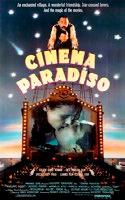
much more than just seeing a movie: it’s a special group ritual that involves everything from loud exchange of comments (where else but in Italy?) and smoking cigarettes to finding love and highly inappropriate displays of affection.
Cinema Paradiso (1988)
While book-reading is very much a solitary pastime, watching movies at the cinema is a uniquely collective experience that’s unlike any other; one that many of us nostalgically yearn for in the era of social distancing. Cinema Paradiso, then, is a balm to the film-starved soul. The movies and the experience of enjoying them are at the core of this magical Italian classic.
Set in a small Sicilian town in the 1950s, it follows the fortunes of a dilapidated picturehouse called Paradiso—the epicentre of the town’s social life, run by a priest, who piously censors every movie—to the annoyance of the locals. For them, coming to the cinema is about so
We observe all this through the eyes of a little troublemaker called Toto— a bright kid who adores cinema with precocious depth and understanding. He desperately pesters Paradiso’s projectionist, a grump with a heart of gold, Alfredo, to teach him the ropes. Disgruntled, but secretly moved, Alfredo takes him under his wing and teaches him everything he knows. From then on, we flash through Toto’s youth, love, maturity and see him move to Rome to become a successful director.
There’s a huge amount of threads folded into this wholesome story: coming of age, the often pain-tinged nostalgia, the passage of time—all beautifully wrapped around its beating heart, the cinema. As Arrow Films release the 4K restoration of this Oscar-winning gem, allow yourself to be reminded of the cinema’s incredible ability to move and inspire.
by Eva Mackevic
JULY 2020 • 119
After months of quarantine
TV—shows that looked as though they were made on a laptop, because they were made on a laptop—you may well be itching to expand your viewing horizons. A seasonal flurry of subtitled streaming shows from Mumbai and points beyond now offer what we might call an Indian summer, encompassing everything from gritty crime drama to post-colonial zombie horror (Netflix’s much-anticipated Betaal, still under wraps at time of writing) and escapes to the lushest countryside you’ll see all year.
genuinely transformative performance. Tougher yet is the Delhiset Paatal Lok (Amazon Prime), which finds a far-from-good cop (the excellent Jaideep Ahlawat, resembling a crumpled Colin Firth) investigating a thwarted assassination attempt. It’s violent, but undeniably gripping.
Anyone seeking to get away from it all for a bit should head for Panchayat (Amazon Prime), centred on a crotchety young city slicker (Jitendra Kumar) posted to serve as secretary to a village council in verdant Uttar Pradesh. The tone for this appreciably gentle comedy of manners is set early on, as our hero arrives at the padlocked council office, only to find the keys have gone AWOL; subsequent episodes acknowledge how life plans themselves often go astray. It’s a stretch geographically, but thematically we’re not far from a whole new genre: the Darjeeling comedy.

Retro Pick:
Two much-discussed shows propose varying takes on the police procedural. She (Netflix), following an inexperienced female officer assigned to help bring down a womanising Mumbai drug lord, invites interrogation of its sexual politics, though this is a tale with two authors: the men calling the shots, and star Aaditi Pohankar, giving a TheJewelintheCrown(BritBox)
The TV blockbuster of 1984—an origin story for the above, thoughtfully dramatising the last days of the British Raj—has just become available via this new streaming platform.
by Mike McCahill

TELEVISION
120 • JULY 2020

Album of the Month: RIDING WITH THE KING
byBBKingandEricClapton
One look at the cover and you know what this album is all about: class, camaraderie, swagger and sweet, sweet blues. Released in 2000, Riding with the King was a music match made in heaven, pairing the legendary “Slowhand” with his longtime idol, the late blues royalty, BB King. The album is a mixture of classic blues standards as well as contemporary songs but, more than anything, it’s Clapton’s way of showing his immense admiration for King by stepping back and letting the master growl his heart out and slam the guitar strings like a man possessed.
Praising the guitar solos on this record is like praising Einstein for being good at maths or Michelangelo for having a knack for sketching; they’re nothing short of brilliant and truly soar when the two masters come together on tracks like “Three O’Clock Blues” or “I Wanna Be”. The record’s 20th birthday this year sees the release of an expanded anniversary edition including two previously unreleased tracks and remastered audio—a crucial addition to any blues library.
by Eva Mackevic
Crazy About Lucille
BB King was one of the greatest blues guitarists of all time, and Lucille was the name he affectionately gave to his Gibson guitars. In 1949, a 24-year-old King was playing a club in Arkansas, heated by a barrel filled with burning kerosene on the dance floor. When a fight between two men in the audience broke out in the middle of the concert, the barrel got knocked over and the club burst into flames. Once evacuated though, King realised he’d left his beloved guitar inside, and ran back to retrieve it. He learned the next day that the fight was over a woman who worked at the club called Lucille and named the guitar after her to remind him to never fight over a woman.

JULY 2020 • 121
MUSIC
July Fiction
Where one novel delights, another disappoints in this month’s summer book reviews
Two Tribes by Chris Beckett (Corvus, £16.99)
Chris Beckett is an awardwinning science-fiction writer best known for his trilogy set on the far distant world of the planet Eden. In his dazzling new novel, though, the far distant world is the Britain of 2016—as seen from the perspective of a 23rd-century historian called Zoe who discovers the diaries of two of its inhabitants. One is Harry, a 46-year-old architect increasingly exasperated by the smug, unexamined certainties of his north London tribe—especially following the Brexit referendum. The other is Michelle, a Norfolk hairdresser and Leave voter, whom Harry falls for after staying in her Airbnb home.

from now, and how it ended up like that (spoiler alert: not well). Nonetheless, it’s the Britain of our time that dominates the book, as Zoe turns the diaries into a narrative that’s both a realistic, often very affecting love story and an explosive reminder of how weird recent (pre-virus) British life might one day seem. Bursting with brilliantly thoughtprovoking ideas on almost every page, Two Tribes is one of these rare novels that leaves you looking at the world in a new way.
I’m Just a Teenage Punchbag
by Jackie Clune (Coronet, £14.99)
Beckett provides a thoroughly imagined portrait of Britain 250 years

James Walton is a book reviewer and broadcaster, and has written and presented 17 series of the BBC Radio 4 literary quiz
The Write Stuff
Jackie Clune’s debut novel is being billed as an important generational statement for middle-aged mothers everywhere. But, despite not being one, I have to say I really hope it isn’t.
Initially, the book seems to be a superior example of a now wellestablished genre: the extended comic moan about motherhood. While the basic material is familiar enough— the narrator Ciara duly has three
BOOKS
122 • JULY 2020
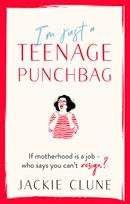
Name the author
pathologically selfish teenagers and a useless husband—Clune keeps the clever and funny oneliners coming. So much so, in fact, that only gradually do we realise that Ciara isn’t actually joking. She genuinely does hate her family and her life. At first, this realisation adds a powerful emotional punch. But then Ciara, inevitably, decides that the solution is to find herself—which for my (admittedly male) money is when the book loses its way. The trouble is not so much that Ciara becomes as pathologically selfish as any teenager, but that we’re clearly supposed to see this as a positive thing. We’re also expected to believe—and in a book that prides itself on its honesty—that she can abandon her children without causing them any emotional damage. Can you guess the writer from these clues (the fewer you need the better)?
1. She has the same initials as the author of Midnight’sChildren.
2. As a student at Trinity College, Dublin, she won the 2013 European University Debating Championships.
3. A TV version of one of her novels—with main characters Connell and Marianne— was a big lockdown hit.
Answer on p126
PAPERBACKS
AClaxtonDiaryby Mark Cocker (Vintage, £9.99). A year in the life of Norfolk countryside from one of Britain’s finest nature writers.
Girlby Edna O’Brien (Faber, £8.99). Sixty years since her first book, O’Brien is if anything better than ever in this riveting novel based on Boko Harem’s real-life kidnapping of nearly 300 Nigerian schoolgirls in 2014.
Dictators by Frank Dikötter (Bloomsbury, £10.99). The lives of eight of the 20th century’s most brutal dictators are examined, and compared, as Dikötter explores the strange power of personality cults.
ThePart-TimeJobby P D James (Faber, £3.50). A previously unpublished short story from the late, great crime writer to mark what would have been her 100th birthday.
GottaGetTherouxThisby Louis Theroux (Pan, £8.99). Ignore that terrible title: this is a frank and thoughtful memoir of Theroux’s television career that includes a soul-searching reflection on his relationship with Jimmy Savile.
READER’S DIGEST RECOMMENDED READ:
Channeling History
Take a dip in the often-surprising history of the British Channel in this fascinating account by
Charlie Connelly
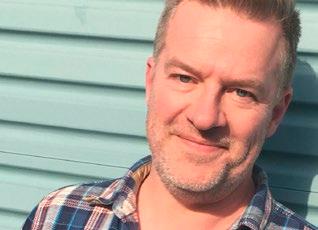
The celebrated newspaper headline “Fog in the Channel, Continent Cut Off” is, sad to say, apocryphal. But, as Charlie Connelly points out in this terrific book, it continues to be quoted because “its expression of our island mentality is entirely plausible”. Since Roman times, the English Channel has been central not just to our history, but to our identity too.
Connelly provides the history bits in a winningly readable way, keeping a sharp eye out for the comedy involved (much more than you might
think), while also reminding us of the role played by sheer meteorological chance. Imagine if the Channel hadn’t been unusually calm when the British Army was rescued from Dunkirk in 1940. Or if it had been when the Spanish Armada arrived in 1588.
Even so, as his subtitle suggests, Connelly’s central focus is on the individual people who’ve been part of the Channel’s own history—and who prove a highly entertaining bunch. As it takes us through several centuries’ worth of Channel-related facts and feats, the book bristles with great stories: by turns funny, tragic and heroic—but all full of arresting details. In these days of sports nutrition, for example, it’s somehow gratifying to learn that Captain Matthew Webb prepared for the first successful crossChannel swim in 1875 by drinking a jug of claret for breakfast—and that he refuelled in the water with beer and brandy (incidentally, nobody managed to swim the Channel again until 1911).
124 • JULY 2020
BOOKS
Here now is one of the heroic stories, with the 19-year-old New Yorker Trudy Ederle—trained by that second cross-Channel swimmer, Bill Burgess—becoming the first woman to emulate Captain Webb’s achievement (minus the booze)…
‘‘
“On 6 August 1926 Ederle was up before dawn at the Hôtel la Sirène near Cap Gris-Nez to demolish a bowl of cornflakes, half a fried chicken and a plate of bacon and eggs. As she threw down her knife and fork, Burgess asked how she was feeling.
‘Like I could lick [world heavyweight boxing champion] Jack Dempsey,’ she replied.
A little after 7 am Trudy Ederle waded into the sea and set out for Dover, accompanied by her support boat the Alsace with Burgess and her parents among those on board. She covered two miles in her first hour despite a stop for stomach cramps and by late morning was going well, six and a half miles north of Cap Gris-Nez and singing along to the gramophone records being cranked out by her mother.
‘The water is wonderful, I could stay in for a week,’ she chirruped.
At midday she rested briefly, drank a baby’s bottle filled with beef tea and ate some chicken. In the afternoon her pace dropped, the wind rose, it began to rain and her chirpy commentary stopped. She kept swimming but the cheeriness had
gone, along with the good weather. Ederle’s team attempted to keep up her spirits with a lusty rendition of ‘Yes, We Have No Bananas’, which must have helped, but then the tug hired by rival newspapers to the New York Daily News, with whom Ederle had signed an exclusive agreement, turned up and proved a more serious danger than wind and fatigue. As photographers strained for close-ups, the vessel veered too close to the swimmer, throwing bow waves that submerged her altogether.
Another brisk wind blew up. The Alsace skipper told Burgess and Ederle’s father they were being carried too close to the notorious Goodwin Sands and would need to take a new course to avoid them. This would add significantly to the distance Ederle needed to swim but their current course was too dangerous, he said. The sea rose further, substantial waves breaking over the bow, while for worryingly long periods Ederle’s bright-red swimming cap kept
The Channel: The Remarkable Men and Women Who Made It the Most Fascinating Waterway in the World by Charlie Connelly is published by Weidenfeld and Nicolson at £16.99
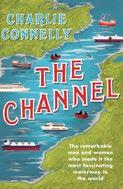
JULY 2020 • 125
READER’S DIGEST
vanishing between the steepling waves. Skipper, father and trainer pored over the charts and realised that once she made it past the South Goodwin lightship the sea would become calmer and the tide would be in her favour. Burgess gave her the news, looking down from the heaving ship at the red speck rising and falling with waves much larger and more powerful than any he’d experienced during his own Channel swim. Seeing this vulnerable young woman pressing on in such dreadful conditions, Burgess was almost overcome with admiration.
‘God almighty,’ he called to nobody in particular, as he clung to the rail, ‘I never saw anyone so marvellous!’…
An estimated two million people lined the streets of Manhattan on Ederle’s return, where she was granted a ticker-tape parade along Fifth Avenue. The city’s official greeter Grover A Whalen said that of all the greats he’d escorted on their parades none had made the impact Trudy Ederle did.” ’’

GEORGIAN FOLKESTONE: More from The Channel
“On moonless nights deadly tussles were fought between smuggling gangs and customs men, in coves, on beaches and on remote country lanes. Skirmishes and outright battles would take place out on the water and whole ships and their crews would disappear, never to be seen again.
And the name of the author is… Sally Rooney, author of NormalPeople—in which both Trinity College and its debating society feature (Midnight’s Childrenis by Salman Rushdie).

This propensity of Folkestone folk to tweak the nose of convention extended beyond smuggling and into the fabric of everyday life. A Quaker named Jenkins, for example, who moved there in 1820 and left some terrific journals of his impressions of the town, related how Folkestone men were always reluctant to marry unless there was a child already on the way. So rife were shotgun weddings that a parson named Langhorne, who ministered in the town for 20 years in the late 18th century, offered a teapot to any woman who came to him to be married while still a virgin. In nearly two decades of his Folkestone ministry this policy cost him exactly one teapot.”
BOOKS
126 • JULY 2020
Books
THAT CHANGED MY LIFE
Laura Cummings is a renowned journalist and art critic for The Observer. Her recent book, Chapel Sands, is published by Vintage, £9.99
Rings of Saturn by W G Sebald

I can still remember the universal astonishment when this book first appeared. Apparently the account of a journey through the flatlands of East Anglia, it seemed to meander from eerie stories of lost knights and Chinese empresses to herring fleets, Elizabethan ghosts and submerged villages, taking in poetry, philosophy and art along the way. The writing is hauntingly beautiful, but nobody quite knew whose voice it was, or even who had taken the strange black and white photographs that opened like windows in the text. Is it truth or fiction? Was the narrator, who suffers a nervous breakdown, actually based on the German author, W G Sebald? It changed my idea of what a memoir could be.
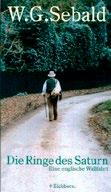

The Diary of a Nobody
by George and Weedon Grossmith Charles
Pooter is a Victorian clerk at Perkupps in the City. He has just moved into a new house in Holloway. There are upstart tradesmen and mutinous maids to deal with, along with the exploits of his troublesome son Lupin and his oddly unsympathetic wife Carrie. The Grossmiths poke the gentlest fun at Pooter’s suburban pomposity, while walking a fine line between comic absurdity and the most poignant tragedy. The scene in which Pooter paints his bath red to keep up with the latest fashion, and then forgets he has done so, is one of the funniest episodes in all of English literature.
The Great Gatsby by F Scott Fitzgerald Is there a more perfect short novel than this one? The plot is taken from a real-life story in a tabloid—an enigmatic zillionaire who hosts dazzling parties in his Long Island chateau, yet never seems to appear at them. But Fitzgerald’s tragic romance is a magnificent prose-poem, an elegy to lost love and regret, all set in a gilded Jazz Age America of speak-easies and all-night parties. An unquiet masterpiece whose charm and sadness never fail to hold their power, it has been filmed many times, yet the book always rises above the movies, with its perfect glittering brevity.

FOR MORE, GO TO READERSDIGEST.CO.UK/CULTURE JULY 2020 • 127
How To Protect Your Digital Life
James O'Malley on the secret to maintaining supersecure passwords
Passwords have existed since the early days of computing, but hackers have long known that they're relatively easy to get around. There’s the “brute force” method, where every possible combination of characters is tried to get into an account. Then there are “phishing” attacks, where hackers create fake websites or send a fake texts pretending to be a service such as your bank, with the hope that you'll respond with your real credentials.
Perhaps the most effective form of attack hackers have though isn’t targeting you personally, but instead the services you use. If a hacker can break into the websites of, say, an online store, they can download a “data dump” of thousands of usernames, email addresses and
passwords. These forms of attack are now routine, and there are regular news stories about them: for example, in March this year, Boots Advantage Card users were compromised, and in the same month the details of 900,000 Virgin Media customers were found to have been left unsecured and vulnerable on the web.
Now here’s the scary part: while this is annoying and a little scary if one service you use is breached, if you use the same password for multiple services, then a smart hacker might think to try out your password on other services. For example, if the takeaway pizza place gets hacked then, sure, everyone might discover that you like pineapple on your pizza. That’s hopefully not a big deal… but what if the same password also gets the hacker into your email? Suddenly
128 • JULY 2020
your entire digital life is up for grabs. So what to do about it? There are two things you can do right now to help ensure your data is locked down.
The first, best thing you can do is to switch on Two-Factor Authentication
ONE LEAKED PASSWORD CAN LEAVE YOUR ENTIRE DIGITAL LIFE UP FOR GRABS
on any service you use that supports it. This is where after you’ve typed your password, the app or service will send you a secondary code to type in, usually via text message. The idea is simple: even if a hacker has your password, it is unlikely they will have your physical phone too. So if logging in requires your phone, that makes it harder to get in. Most major services now support this, including Google, Facebook, Amazon and Zoom.
Yes, it adds a slightly annoying extra step to logging in, but it's worth jumping through the extra hoop for the improved security. The good news is that the second best thing isn’t annoying—in fact, it makes life easier.
Ideally you want to have a unique password for everything, so that if one gets breached, the rest of your data is safe. But how to remember all of those
passwords? This is where password managers like 1Password and LastPass come in. Both apps cost a couple of pounds a month, but are well worth it.
These are apps that you can download to all of your devices, whether laptops, phone and tablets, and act as a virtual locker for your passwords. When you sign up to a new digital service, they will randomly generate a new password for you, but all you’ll have to remember is the master password to your password manager.
This might sound at first like you’re putting all of your eggs in one basket: what if the password manager gets hacked? But there is definitely less risk this way: unlike the pizza company, password managers are security companies who ensure their systems are as secure as possible. So it’s adding the strongest protections to the rest of your digital life.
And this actually makes life easier, as well as more secure. It means that when you need to log in to, say, the cinema website to buy some tickets, rather than having to think hard to remember your only occasionally used login details, you simply hit one button and your password manager will autofill the correct details.
Ultimately, there's no such thing as a fully secure system—bugs, holes and hacks are being found all of the time—but if you take these two simple steps, you’re making life a lot harder for hackers. n
JULY 2020 • 129
TECHNOLOGY
You Couldn’t Make It Up
Win £30 for your true, funny stories!
Go to readersdigest.co.uk/contact-us or facebook.com/readersdigestuk
When I was little, my father worked as a bus driver. Once, he had a couple of free hours, so he fell asleep on a couch. I was so excited to have a client in my imaginary beauty salon that I did my best to create an extraordinary hairstyle and makeup look for him with my blue crayon. He suddenly woke up and—realising he could be late for work—rushed out of the house.
I found out later, my father and his colleagues had a great laugh, and he pulled off his new look!
JANE WHITAKER, Kent
Our toddler son swallowed a small travel scrabble piece which thankfully did not cause choking. We took him to the doctor’s immediately and our minds were put at rest when he said our son would pass the piece soon.
Relieved, my husband commented, “Well, I eagerly await his next vowel movement!”
AMELIE BARNES, Denbighshire
I had to smile when I asked my daughter what she was doing for her English homework and she said the class had been set the task of updating the tragic story of Romeo and Juliet.
In her version they were destined never to be together because Juliet is on Facebook while Romeo is on Twitter!
SHONA LLOYD, Clwyd
My son finally plucked up the courage to tell his boss he wasn't happy with how everything was going at work.
His boss seemed sympathetic to begin with, saying, “You hate your job? Why didn't you tell me sooner? There's a support group for that.”
But then added, “It's called everybody. And they meet in the pub.”
KENDRA SEVILLE, Merseyside
My friend was bemoaning her recent weight gain. “I used to have an hourglass figure” she said. “Trouble is that now all the sand has run to the bottom.”
LIZ TUBBY, Norfolk
FUN & GAMES 130 • JULY 2020
cartoon by Guto Dias

"Stay
As grandparents, social distancing has been very difficult for us and for our grandchildren, especially the youngest who is not yet five.
However, we managed to explain to her why we cannot physically see our family. We realised that the message had got through when my husband made an emergency visit to their house for a delivery. He was about to leave the package on their porch and had just stepped over the threshold when a little voice said, “Grandad, why are you nearly in my house?”
MARGARET ROSS, Wiltshire
Our first car, soon after our marriage in 1967, was a second-hand Morris Minor. It was my husband’s pride and joy and he would loathe to let me drive it. I did drive it one day, and was told to be careful, and not to hit the car, as he reluctantly handed over the keys. On return I parked it by his
workplace, and watched in disbelief as he walked round it, checking for any bumps or scratches I may have caused. We both got in to go home, with him driving. He switched it on, put the car into gear, and reversed into a tree!
MARGARET A ROBERTSON, Kent
Feeling a bit low and lost during lockdown, I called a psychic who offered some guidance for a small fee. After talking about life, she then went on to cheerfully say, “We just never know what the future holds, do we?”
MANISA KUINKEL Middlesex
I had to smile as I visited a relative who'd just had a baby. I overheard a proud husband in the maternity ward, as he held his newborn children, react to a passer-by who asked, “Are they twins?”
“No,” he retorted, “I found the extra baby in the car park and thought, why not?”
STEPHANIE THOMAS, Denbighshire
My employer sent me on a time management course, and I had to leave home 45 minutes earlier than usual due to traffic congestion.
One person hadn't arrived, so the host delayed starting as he couldn't be sure he had given the correct time to the invitee.
The missing person didn't arrive and the course started one hour late. Some time management!
ALLAN BRIDGER, Hampshire
JULY 2020 • 131
at home, Little Red Riding Hood"














YES I want to subscribe to Reader’s Digest Magazine for just £3 for 3 issues (a saving of £8.37 on the shop price of £11.37 based on the cover price of £3.79 per issue). I understand that if I do not wish to continue receiving Reader’s Digest after my first 3 issues I can simply cancel my subscription by contacting customer services. If I do want to continue to subscribe after my first 3 issues I need do nothing and my subscription will automatically be renewed at the low rate of £7.50 for every 3 issues until I decide otherwise.


HEALTH • MONEY • TRAVEL • RECIPES • FASHION • TECHNOLOGY SMALL AND PERFECTLY INFORMED Julie Andrews A WITHCONVERSATION THE SILVER SCREEN LEGEND The Art Of The BOOKSHELF WHAT DOES YOUR LIBRARYABOUTREVEAL YOU? Nuclear Arms WITH MAY 2020 HEALTH • MONEY • TRAVEL • RECIPES • FASHION • TECHNOLOGY READER’S DIGEST SMALL AND PERFECTLY INFORMED Artificial Intelligence HOW TECH REVOLUTIONISEWILL YOUR HEALTH Virtual Britain VISIT FROM YOUR SOFA Please complete direct debit mandate below Name of Bank ...................................................................... Account Holder Branch: / / Account No Instructions to your bank or Building Society: Pay Reader’s Digest Direct Debits from the account detailed on this instruction subject to the safeguards assured by the Direct Debit Guarantee. I understand that this instruction may remain with Reader’s Digest and if so will be passed electronically to my Bank or Building Society. Signature ..................................................................... Date .............................................................................. INSTRUCTIONS TO YOUR BANK OR BUILDING SOCIETY TO PAY BY DIRECT DEBIT. Originators reference: 400162
Postcode: Telephone: Email:
food, humour and travel alongside in-depth news features, memoirs and celebrity profiles. It’s never been easier to enjoy the world’s favourite magazine! Sort Code Data Protection: From time to time Reader’s Digest may contact you with details of its products and services. Please tick here if you object to receiving such information Return your completed form to: Reader’s Digest, The Maltings, West Street, Bourne PE10 9PH Or call us today on 0330 333 2220 Quoting code RDN076 3 ISSUES FOR JUST £3! JULY2020 HEALTH • MONEY • TRAVEL • RECIPES • FASHION • TECHNOLOGY READER’S DIGEST SMALL AND PERFECTLY INFORMED | JULY 2020 Living With Your RegretsLESSONS IN LETTING GO Autism In Adulthood PEOPLE SHARE THEIR STORIES JULY2020 £3.79 readersdigest.co.uk 3 BRANAGH Kenneth ON HARRYHOPE,POTTER AND RETURNING TO HIS HOMELAND
Name: Address:
Each must-read monthly issue covers life, culture, health, books, films,
IT PAYS TO INCREASE YOUR
Word Power
On July 20, 1969, the American Apollo 11 became the first manned mission to land on the moon. It helped usher in the space age, and gave us a brave new world to describe
BY GEORGE MURRAY
1. ballute—A: rocket’s ballast tank. B: aerodynamic braking device. C: type of moon rock.
2. exosphere—A: outside of space station. B: dwarf planet. C: top of Earth’s atmosphere.
3. parsec—A: distance of 3.26 light years. B: measure of a half-second. C: asteroid in main belt.
4. abort—A: back left fin of a rocket. B: abandon mission. C: docking area.
5. rille—A: telescope lens. B: valley on moon’s surface. C: packaged space food.
6. sublimator—A: portable radio signal booster. B: car-size robotic rover. C: device that controls spacesuit temperature.
7. telemetry—A: navigation chart. B: information relay system. C: cockpit screen.
8. umbra—A: blackest part of a shadow. B: reflective spacecraft paint. C: tenth moon of Saturn.
9. apogee—A: telescope lens type.
B: furthest point in an orbit. C: captain’s chair.
10. gibbous—A: first monkey in space. B: gas added to oxygen. C: moon phase between half and full.
11. quarantine—A: element found in stars. B: crystals grown in space. C: isolation to protect against germs.
12. umbilical—A: unique orbital motion. B: method of ensuring uninterrupted radio contact. C: tethering line for astronaut on a spacewalk.
13. ethereal—A: celestial. B: clouds in upper atmosphere.
C: the hallucinations experienced by astronauts.
14. ballistics—A: experimental fuel for rockets. B: atmospheric study. C: science that deals with the motion of projectiles.
15. yaw—A: to turn about. B: rocket exhaust. C: measure of remaining air.
JULY 2020 • 133 FUN AND GAMES
ANSWERS
1. ballute—[B] aerodynamic braking device. As the Mars craft descends at hypersonic speed, its ballute—part balloon, part parachute— will slow it down.
2. exosphere—[C] top of Earth’s atmosphere. The spacecraft pushed past the exosphere into space.
3. parsec—[A] distance of 3.26 light years. A space shuttle would take 165,000 years to reach nearby Alpha Centauri, 1.34 parsecs from Earth.
4. abort—[B] abandon mission. A leaking seal on the main booster forced them to abort.
5. rille—[B] valley on moon’s surface. Under the right night time conditions, rilles are easy to pick out with a backyard telescope.
6. sublimator—[C] device that controls spacesuit temperature. The space walk was cancelled when water entered the astronaut’s sublimator.
7. telemetry—[B] information relay system. The Voyager spacecraft’s telemetry still transmits data, years after leaving the solar system.
8. umbra—[A] blackest part of a shadow. Kalid watched the umbra completely cover the moon as the
Earth slid between it and the sun.
9. apogee—[B] furthest point in an orbit. The space probe was circling earth with an apogee of 40,000km.
10. gibbous—[C] moon phase between half and full. Last night, Sylvia was struck by how the gibbous moon dominated the sky.
11. quarantine—[C] isolation to protect against germs. The astronauts played cards during their pre-mission quarantine phase.
12. umbilical—[C] tethering line for astronaut on a space walk. A thin umbilical was all that tied him to the International Space Station as he raced to make repairs.
13. ethereal—[A] celestial. We have the Hubble Space Telescope to thank for those stunning, ethereal images of faraway nebulae and galaxies.
14. ballistics—[C] science that deals with the motion of projectiles. Ballistics helps predict the direction of a rocket sailing through space.
WORD OF THE DAY*
ADESPOTA
Anonymous works
Alternative suggestions:
"Someone who keeps a keen eye out for snakes"
"What Italians say when their itch is scratched in just the right place"
15. yaw—[A] to turn about. The shuttle performed a yaw manoeuvre, correcting its course to dock at the International Space Station.
VOCABULARY RATINGS
7–10: Fair
11–12: Good
13–14: Excellent
*POST YOUR DEFINITIONS EVERY DAY AT FACEBOOK.COM/READERSDIGESTUK
134

Confused about equity release? Get the facts.

Equity release has soared in popularity, yet many people still have questions over how the process actually works.

In our guide we explain how to boost your finances by releasing money tied up in your home. Packed with customer stories, facts and figures, why not find out if equity release




















0800












For your FREE GUIDE call us now on: or visit: www.readersdigest.co.uk/er2

029
1233



This is a Lifetime Mortgage which may impact the value of your estate and could affect your entitlement to means tested benefits. To understand the features and risks, ask for a personalised illustration. Reader’s Digest Equity Release is a trading style of Responsible Life Limited. Only if your case completes will Responsible Life Limited charge an advice fee, currently not exceeding £1,490. could work for you?




*Responsible Life, January 2020
Brainteasers
Challenge yourself by solving these puzzles, then check your answers on p139
Pic-a-Pix: Three Wishes
Reveal a hidden picture by shading in groups of horizontally or vertically adjacent cells (“groups”). The numbers represent how many cells are in each of the corresponding row or column’s groups (for example, a “3” next to a row represents three horizontally adjacent shaded cells in that row). There must be at least one empty cell between each group. The numbers read in the same horizontal or vertical order as the groups they represent. There’s only one possible picture; can you shade it in?
Moving Day
The number on each box represents the physical weight of that box. Each box can support no more than half of its own weight sitting on top of it, whether that’s from one or two boxes. Each box with a red number is fragile and cannot have another box on top of it. You have enough room in your moving truck for three stacks of three boxes. How can you stack these ones to fit them in?
136 • JULY 2020 1 7 7 4 2 5 5 1 10 1 5 5 6 1 1 3 1 3 3 2 1 8 1 8 10 8 5 1 3 125 26 47 15 80 18 42 12 7
(Pic-a-Pix: Three Wishes) Diane Baher. More D e T aile D ins T ruc T ions availa B le a T learn P ica P ix.co M ; (Moving Day) Darren r ig B y
Dual Calculation
Use some of the numbers below to create an arithmetic expression equalling 22; then use all the remaining numbers to do it again. You may add, subtract, multiply and/or divide, and you may use parentheses. You shouldn’t ever need to complete a step of a calculation with a negative number or a fraction.
Rook, Bishop, Knight
Trace a path from start to finish. The first move of the path is a rook’s move (any distance horizontally or vertically); the second is a bishop’s move (any distance on a 45-degree diagonal); and the third is a knight’s move (an L-shape). You must then cycle through those three types of moves again, in the same order, until ten moves are made. No square can be the end point for a move more than once. The three knight’s moves are shown in blue, green and red. The first and last move are given in black. Can you determine the path?
First In
Place the letters A, B, C and D into this grid so that each letter appears exactly once in each row and column, with one cell in each row and column left blank. Each letter outside the grid indicates the letter that must appear first in its respective row or column (reading inward from the edge of the grid closest to the letter and skipping any blank cells). Can you complete the grid?
FUN & GAMES JULY 2020 • 137 1 10 START FINISH
(Dual c alcula T ion an D r ook, Bisho P , k nigh T ) Darren r ig B y; (Firs T i n) Fraser s i MP son 4 8 6 5 15 2 B C A C B D A A B
CROSSWISE Test your general knowledge. Answers on p142 ACROSS 4 Fit out (5) 9 Release (7) 10 Capital of Tibet (5) 11 Sift (5) 12 Italian little one (7) 13 Covered with water (5) 14 Thin fogs (5) 17 One or the other (6) 18 Receiving device (6) 19 Gemstone (4) 20 Separated (6) 22 Vast (6) 25 Inspires dread (4) 26 Best (6) 29 Swordsman (6) 31 Forest god (5) 34 River horse (abbr.) (5) 35 Doctors (7) 36 Obscure road (5) 37 Chocolate ingredient (5) 38 Place in order (7) 39 Pertaining to the kidneys (5) DOWN 1 Unsustainable boom (6) 2 Curved sword (8) 3 Long-haired cat breed (8) 4 Derby venue (5) 5 Consumers (5) 6 Make happy (6) 7 Adventurous expedition (6) 8 Universal in extent (8) 15 Irreverence (7) 16 Baby powder (4) 20 Prediction (8) 21 Individual facts (4) 23 Capsize (8) 24 Tubular pasta (8) 27 Themes (6) 28 Line on a weather map (6) 30 Dared (6) 32 West Welsh seaside resort (5) 33 Saudi Arabian currency (5)
BRAINTEASERS


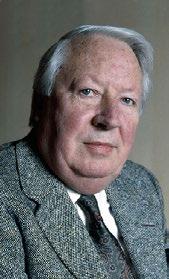
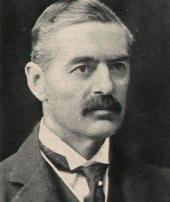
BRAINTEASERS ANSWERS READER’S DIGEST AND THE £50 GOES TO… IAN FORSTER, Essex THE FIRST CORRECT ANSWER WE PICK WINS £50!* Name the British Prime Ministers ANSWER TO JUNE’S PRIZE QUESTION A: Labrador Retriever B: Shar-Pei C: Boston Terrier D: Shi-Tzu £50 PRIZE QUESTION Email excerpts@readersdigest.co.uk JULY 2020 • 139 Pic-a-Pix: Three Wishes Moving Day Dual Calculation (15 − 4) × 2 and 6 × 5 – 8 Rook, Bishop, Knight First In B D A C B C D A C A B D A D C B D C A B 125 18 42 26 80 12 47 15 7 S 1 5 7 3 2 8 9 6 4 10 British Prime Ministers Team Name: 3 8 9 10 4 5 6 7 British Prime Ministers Team Name: 1 2 3 8 9 10 4 5 6 7 A B C D
Laugh!
WIN £30 for every reader’s joke we publish!
Go to readersdigest.co.uk/contact-us or facebook.com/readersdigestuk
I sometimes think about how having a stutter is going to affect me when I become a dad. For instance, when I have to tell my daughter a bedtime story, I’m going to be like, “OK… Once upon a t…t…t…time to wake up, sweetie!”
Comedian JOZE PIRANIAN
I met my girlfriend while she was working at the zoo. There she was, in her uniform—straight away I knew she was a keeper.
Comedian TONY COWARDS
A friend tricked me into going to Wimbledon by telling me that it was a men’s singles event.
Comedian ANGELA BARNES
Just a note to say thank you to everybody for all the wonderful birthday cards and money yesterday. And to the Royal Mail for giving me the job.
Comedian BEN TURNER
Combine harvesters. And you’ll have a really big restaurant. Seen online
Why is Henry’s wife covered in tooth marks? Because he’s Tudor.
Comedian ADELE CLIFF
My definition of an intellectual, is somebody who can listen to the “William Tell Overture” without thinking about of the Lone Ranger.
Comedian BILLY CONNOLLY
140 • JULY 2020
FUN & GAMES
I’m reading a book about anti-gravity. It’s IMPOSSIBLE TO PUT DOWN!
Seen online
There’s a weird double standard when it comes to men wearing aprons. Why is it that my friend is considered masculine when he’s wearing an apron while grilling, but everyone thinks I’m some kind of sissy for wearing an apron while running from a really scary bee?
Seen on Reddit
I had a dream last night that I was chopping carrots with the Grim Reaper. Dicing with death!
Submitted via email
My movies were the kind that they show in prisons and on airplanes, because nobody can leave.
Actor BURT REYNOLDS
A naked man arrives at a costume party, carrying a girl on his back.
“I’m a turtle,” he says.
“Oh… who’s that on your back?”
“That’s Michelle.” Seen on Reddit

Naturally Funny
THE COMEDY WILDLIFE PHOTOGRAPHY AWARDS ARE BACK TO SHOW THE FUNNY SIDE OF NATURE via boredpanda.com

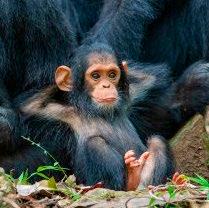
JULY 2020 • 141
I think that animal testing is cruel. They get all nervous and give silly answers!
Comedian STEPHEN FRY
Three cowboys are out on the range. It’s been a long day and they’re hungry. The first cowboy rummages in his saddlebags and pulls out a strip of meat to munch on. “Got any more of that?” asks the second.
“Nope. But I can show you where to get some: the bacon-tree. It’s just a two hours’ ride yonder.”
“You’re pulling my leg.”
“God’s truth. C’mon, I’ll show you.” The other cowboys are skeptical, but boot their horses after his. It’s tough going. Steep, loose slopes and narrow ridges, with not a scrap of shade. Eventually they reach a deep canyon, and pick their way to the bottom.
“There,” says the first cowboy. “Like I told ya.” Sure enough, in front of them is a green shrub, covered in dangling strips of meat.
“Well I’ll be,” says the third cowboy. But just as he’s reaching out, a gunshot echoes down the canyon. He cries out and stumbles toward the other two clutching his belly.
“Run!” he yells, waving his other arm madly. “Get outta here! It’s not a bacon tree! It’s a ham-bush!” Seen on Reddit
How do you make Holy Water? You boil the hell out of it. Seen on Facebook
CROSSWORD ANSWERS
Funny Family Feuds

Twitter users share some hilarious tweets about their silly family fights
@JMAhoney413: My sister once screamed at me for an entire car ride because I was looking out of her window.
@KansasBradbury: Everytime the clocks change, my family argues about what time to feed the cat so that “she won’t get confused.”
@Ezmerald: My two brothers often fight about who is the “ugly brother”. They’re identical twins.
@ItsLeahBale: My family and I once had a month-long fight about whether you put on socks then underwear or underwear then socks.
Across: 4 Equip, 9 Unclasp, 10 Lhasa, 11 Sieve, 12 Bambino, 13 Awash, 14 Mists, 17 Either, 18 Aerial, 19 Opal, 20 Parted, 22 Cosmic, 25 Awes, 26 Outwit, 29 Fencer, 31 Satyr, 34 Hippo, 35 Interns, 36 Byway, 37 Cocoa, 38 Arrange, 39 Renal
Down: 1 Bubble, 2 Scimitar, 3 Balinese, 4 Epsom, 5 Users, 6 Please, 7 Safari, 8 Catholic, 15 Impiety, 16 Talc, 20 Prophecy, 21 Data, 23 Overturn, 24 Macaroni, 27 Topics, 28 Isobar, 30 Risked, 32 Tywyn, 33 Riyal
LAUGH

60 Second Stand-Up
We chat to the superbly witty comedian, Stevie Martin
WHAT’S THE BEST PART OF YOUR CURRENT SHOW? I use a lot of tech and for this year’s shows I controlled it all—if anything went wrong it meant it was my fault but I knew exactly what to do. It’s nice to feel like you’re in control. And because I’m a woman and the tech guys in venues are usually male, they’ll ask if I need help and I’d say, “Actually, no thanks, I’m all set.”
WHAT INSPIRES YOUR COMEDY?
When I started, I wanted to be like other people. I was very proud of my first show but it wasn’t very me. After
I was in Edinburgh for a month I thought, I’m trying too hard and it’s exhausting. Then I went away and started to do new material. I think rather than a person or a thing has inspired me it’s the opposite, I’m trying to tap into a place where the audience feels like they know me.
WHAT’S YOUR FAVOURITE ONE-LINER?
It’s one by Robin Williams, “When in doubt, go for the d**k joke.”
Sometimes you try to be really clever but actually you should always try to be funny. You don’t have to talk about penises but sometimes the audience just want your trousers to fall down.
IF YOU WERE A FLY ON THE WALL, WHOSE WALL WOULD IT BE ON?
A hundred per cent Beyoncé. I have to know what her actual life is and how much of it is projected. What does she actually do in a day? Is she funny, a good laugh or a pain in the a**e?
WHAT’S YOUR FAVOURITE OF YOUR OWN JOKES?
If you don’t know what a simile is, it’s when something is like something else. So for example the moon is like, in space.
WHAT SUPER POWER WOULD YOU HAVE?
I’d like to always have a pen on me. n
Stevie Martin co-hosts the Might Delete
Later podcast with her sister Gina Martin, available to listen to on Apple Podcasts
FOR MORE, GO TO READERSDIGEST.CO.UK/INSPIRE/HUMOUR
READER’S DIGEST
Beat the Cartoonist!

Think of a witty caption for this cartoon—the three best suggestions, along with the cartoonist’s original, will be posted on our website in mid-July.
If your entry gets the most votes, you’ll win £50.
Submit to captions@readersdigest.co.uk or online at readersdigest.co.uk/fun-games by July 7. We’ll announce the winner in our August issue.
MAY’S WINNER

Our cartoonist has missed the top spot once more, as his caption, “Are we nearly there yet?” couldn’t compete with our reader, Fiona Leslie, who won voters over with her hilarious suggestion, “At school they’re calling us the Karcrashians.”
Congratulations Fiona!
IN THE AUGUST ISSUE SILVER TONGUED






We meet the people struggling to keep some of the world’s dying languages alive
IN THE FOOTSTEPS OF GIANTS
Travel writer
Sarah Kante visits the coast that inspired Game Of Thrones’ Iron Isles, the ruggedly beautiful North Antrim Coast.
Judy Collins
I REMEMBER…
The folk music legend reminisces about her childhood and career
LAUGH
+ 144 cartoons by Royston Robertson and Bill Houston
Get your FREE Beginners Guide to Investing
Turning ideas into investments.
Interested in learning more about investments? Have you built up a cash sum or a fund for your retirement. Do you want to improve on the returns from your bank or building society? If this is you then why not take advantage of our free offer and start to learn a little more about investing with our FREE Guide. To order your FREE Guide just call us now on the number below quoting Readers Digest or visit our website www.fathomfinancial.co.uk/readers-digest
Call 0800 043 8341 today to request your guide or visit fathomfinancial.co.uk/readers-digest
Please note: The value of investments and any income from them can fall as well as rise and you may not get back the full amount of your investment. The information provided here is for guidance only and is not advice. If you are unsure about the suitability of an investment please seek advice. Tax rules can change. We record all calls for training and monitoring purposes. Lines are open Monday to Friday 9am to 5pm. Fathom Financial Limited is an Independent Financial Adviser based in the North East of England. Fathom Financial Limited is registered as a limited company in
Authorised
regulated by the Financial Conduct Authority (FCA) No 774831. Registered office: Prosperity House, 1 Barnfield Road, Spennymoor, County Durham, DL16 6EB
England and Wales No. 10548553.
and
In this advert each word represents one mil e dri ven in an electric car. So far you’ve driven eighteen miles and all’s well. You’re on full charge, the kids are dropped o ff and you’re heading out for the day. T h e driving’s smooth, quiet and you’re clocking up brownie points for being emission free . But which car are you drivin g ? Well, by the end of this wor d, you’ve reached sixty five miles and the battery still looks very healthy. You’re on your way to pick something up from your sister’s before the trip this weekend and you know t he traffi c o n the B roads is going to be a nightmare. But off you go regardless. After an hou r, you turn onto her road just before this comma, or one hundred and twenty five miles, confident you won’t need to plug in for a while yet. Job done you hit the road again, you’ve still got further to go. Back at the school gates, you bundle the kids into the car and you’re ready to go, heading up the motorway for a weekend away and a chance to flee the urban jungle. Finally, you pull up at the hotel and plug the car in, amazed you’ve driven two hundred and f i ve mile s on a single charge, not far off your car’s whopping two hundred and forty five mile r ange. Which means
t h ere’s just fourteen
w ords left to reveal
w hich electric car
y ou’ve been
t
R

Zero tailpipe emissions. CO 2 while driving: 0 g/km, MPG: n/a according to WLTP homologation tests. Model shown GT Line R135 238 miles. Play R110 up to 245 miles. WLTP figures for comparability purposes. Figures obtained after the battery was fully charged. Actual real-world driving results may vary depending on factors such as accessories fitted after registration. For details visit renault.co.uk/zoe. 5 year warranty on cars ordered from 18 December 2019 – 5 years or 100,000 miles (whichever comes first). Exclusions apply visit renault.co.uk/warranty.
e n a u
O E
l t Z
d rivin g
h e N e w

















































 DameJudiDenchand KennethBranagh mark the start of their Shakespeareseasonat theBirmingham RepertoryTheatre, February1988
DameJudiDenchand KennethBranagh mark the start of their Shakespeareseasonat theBirmingham RepertoryTheatre, February1988














































































 By Amanda Riley-Jones
By Amanda Riley-Jones



























 BY
BY































 Taken from The irish Cookbook by JP McMahon, published by Phaidon
Photography & Styling: Anita Murphy and Zania Koppe
Taken from The irish Cookbook by JP McMahon, published by Phaidon
Photography & Styling: Anita Murphy and Zania Koppe




































































